Spring 2024




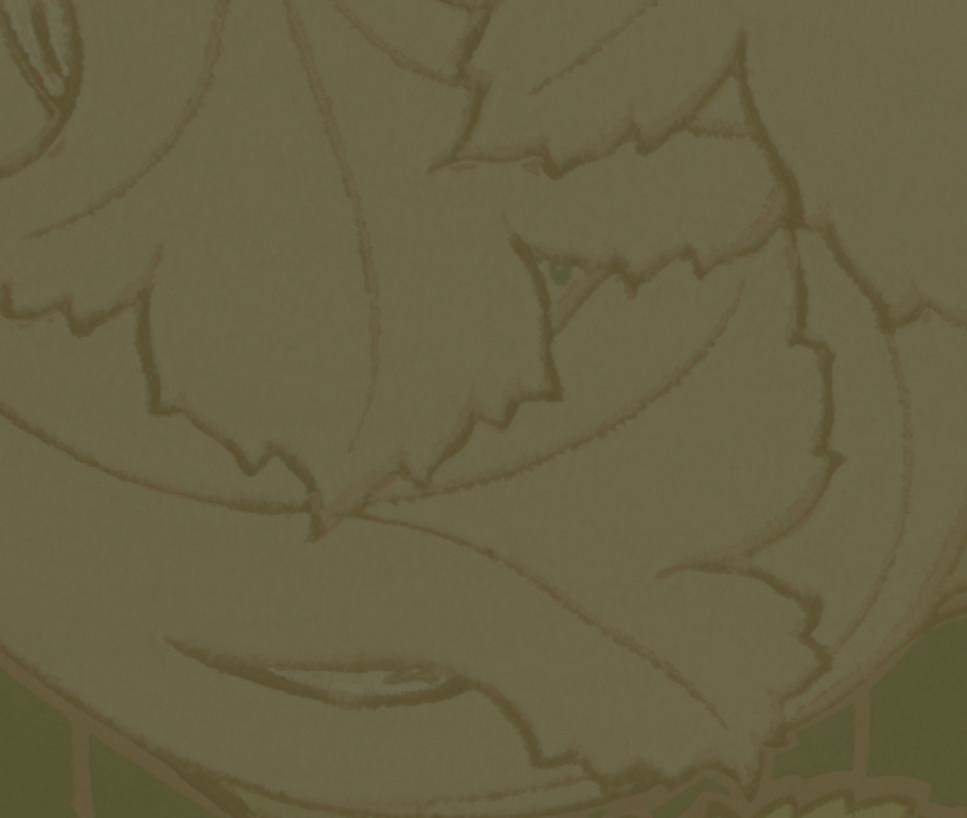
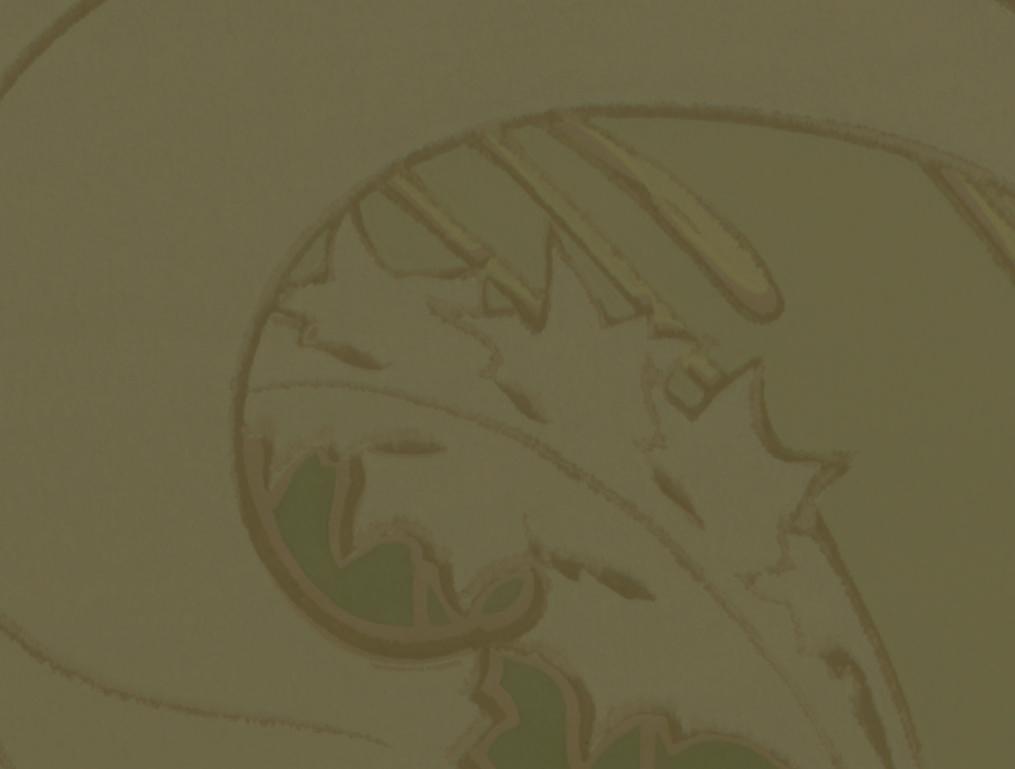

Co-Editor in Chief
Ria Dhingra
Anna Nelson
Managing Director
Landis Varughese
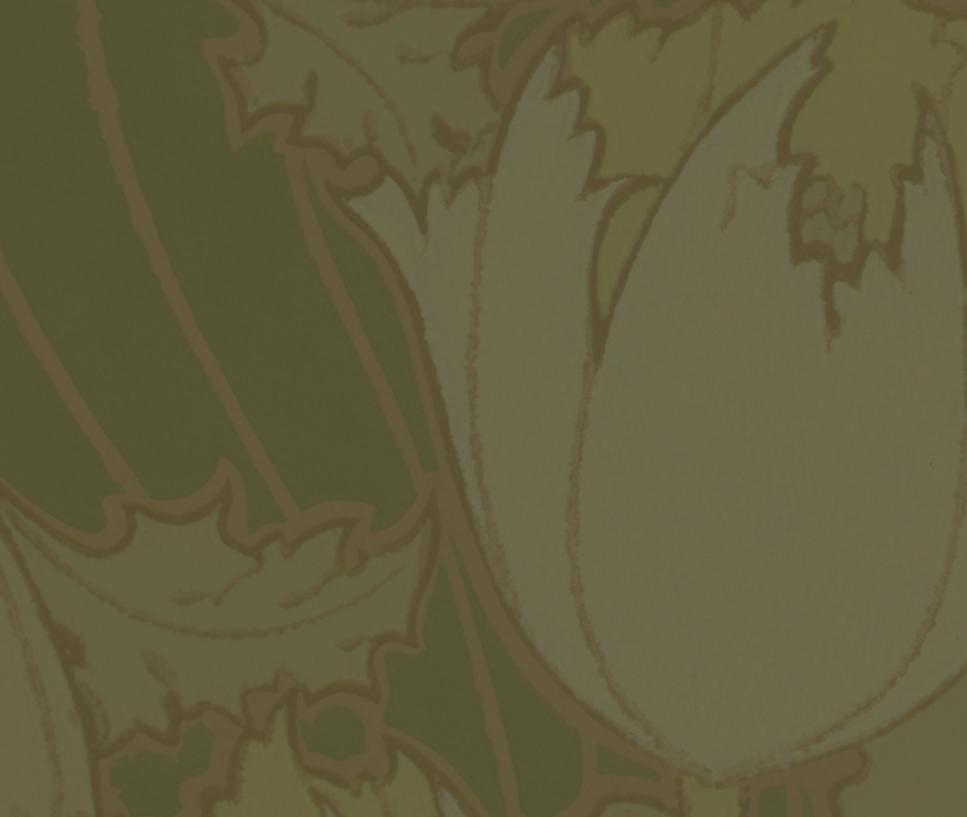

Graphics and Layout
Emily Wesoloski
Cree Faber
Managing Editor
Ella Olson
Publishing Director
Sophia Smith
Operations Assistant

Quinn Henneger
Treasurer
Jonathan Tostrud
Social Media Manager
Eleana Anderson
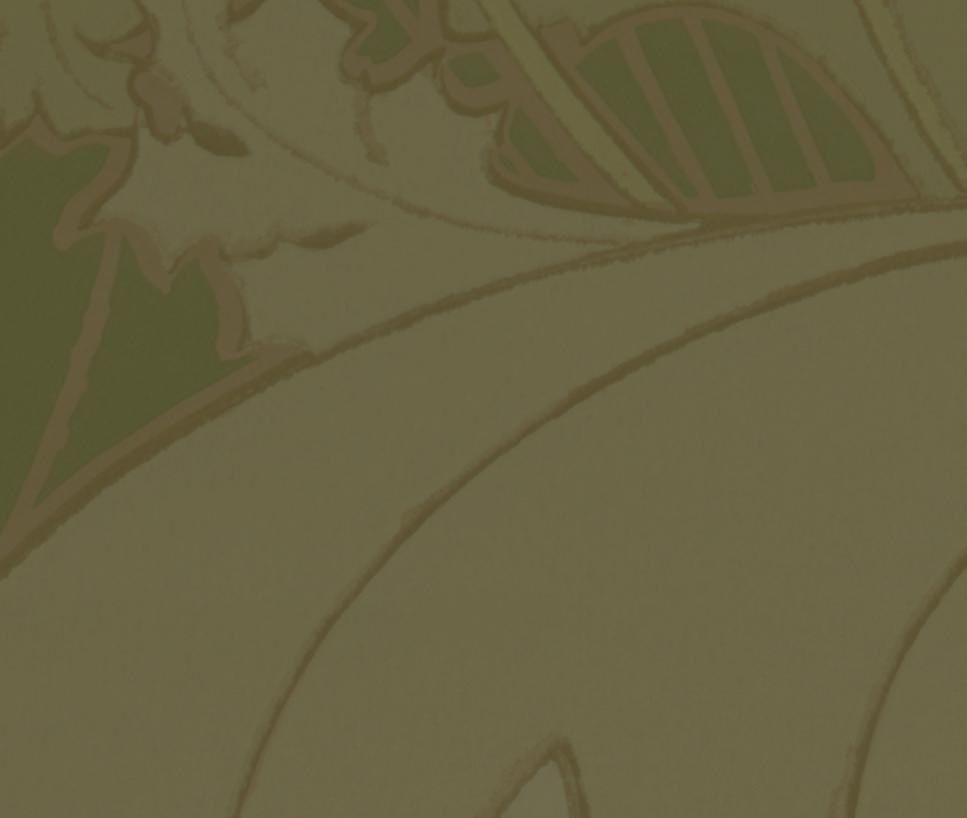
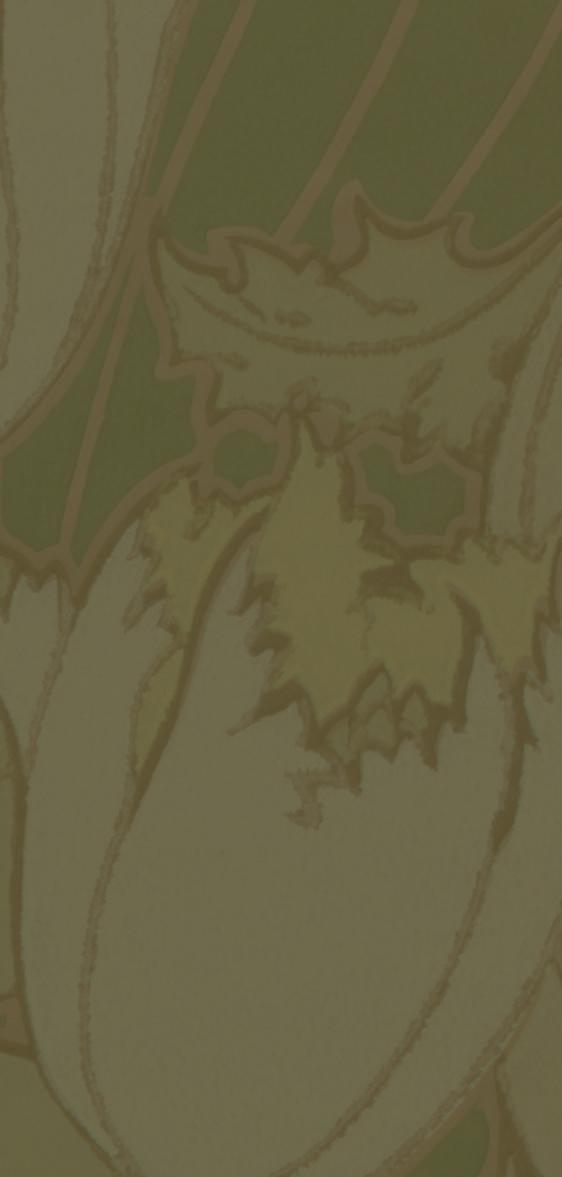
Fiction/Prose/Poetry Editor
Ray Kirsch


Wll Hicks
Nonficton Editor
Aspen Oblewski
Mary Murphy Stroth
Art Editor
Lexi Spevacek

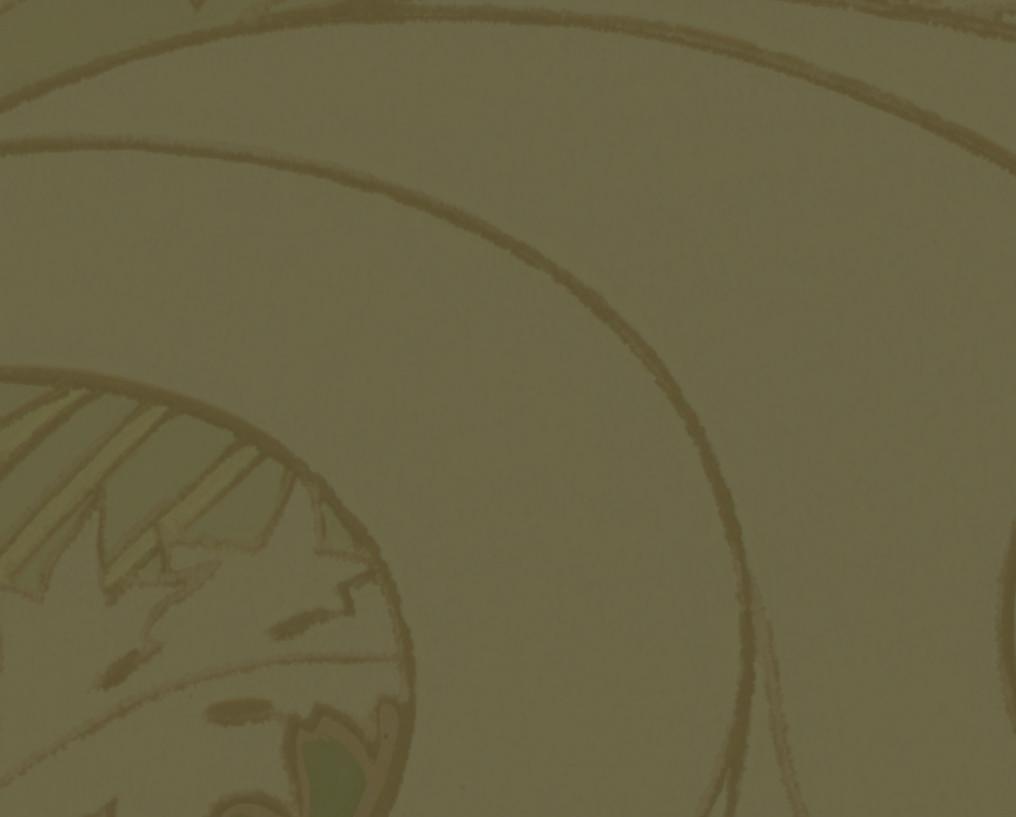
Academic Essay Editor
Mina Ankhet
Celeste Li
Special Thanks
Lacey brooks
Chloe Henry




The MJLC Study Group
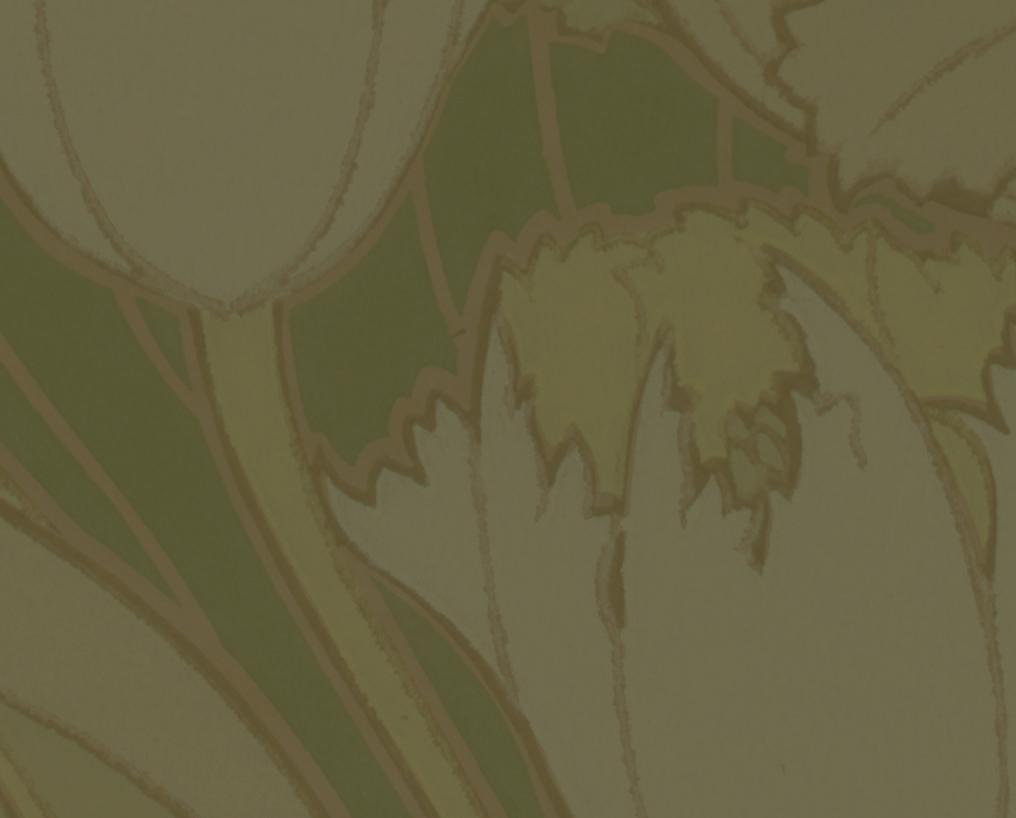
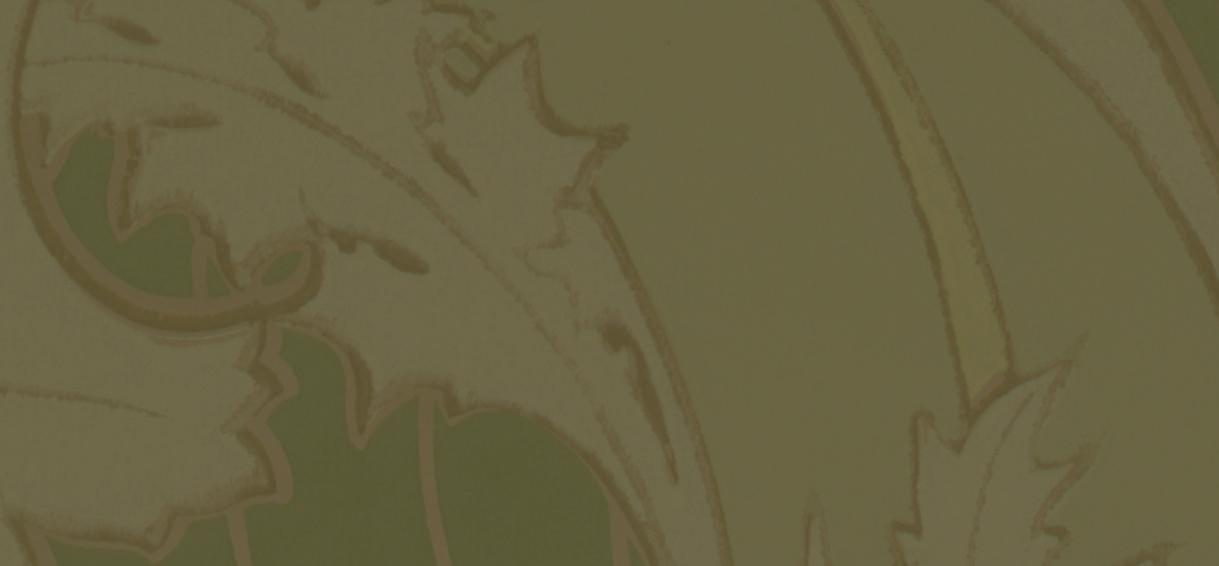

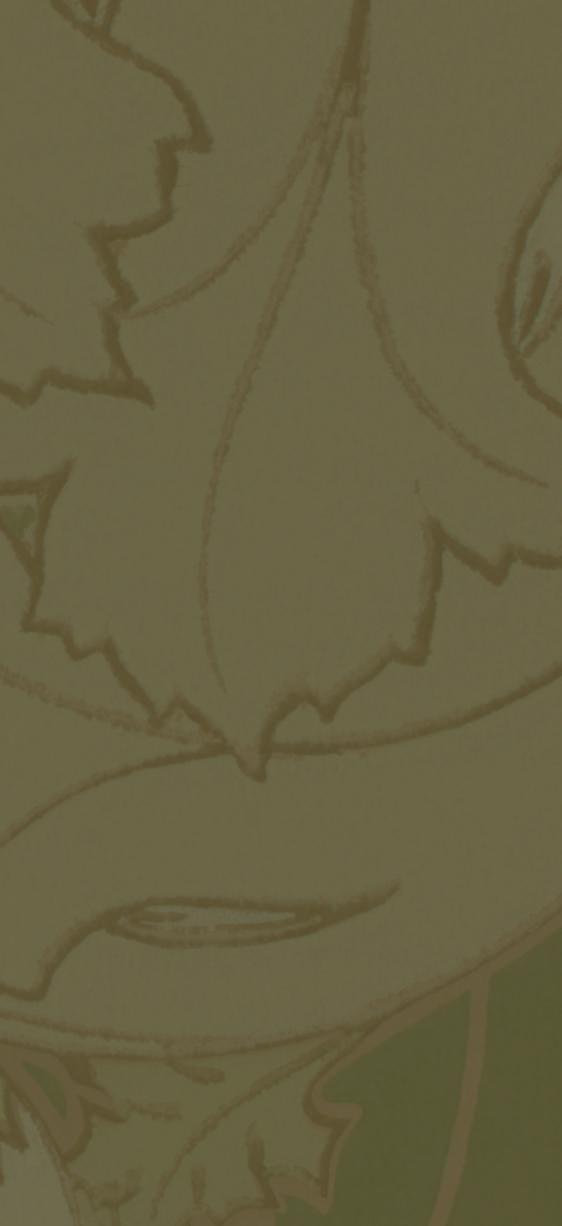
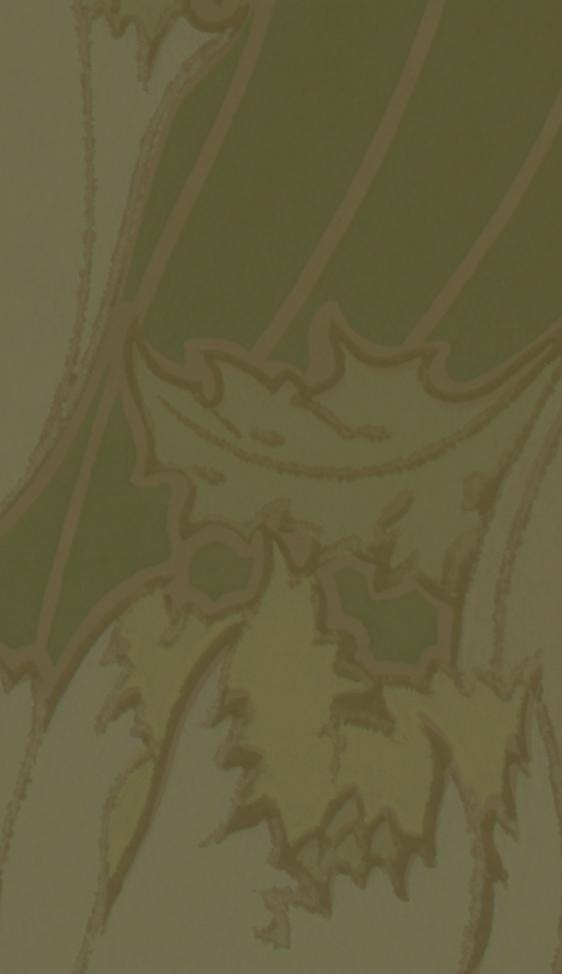
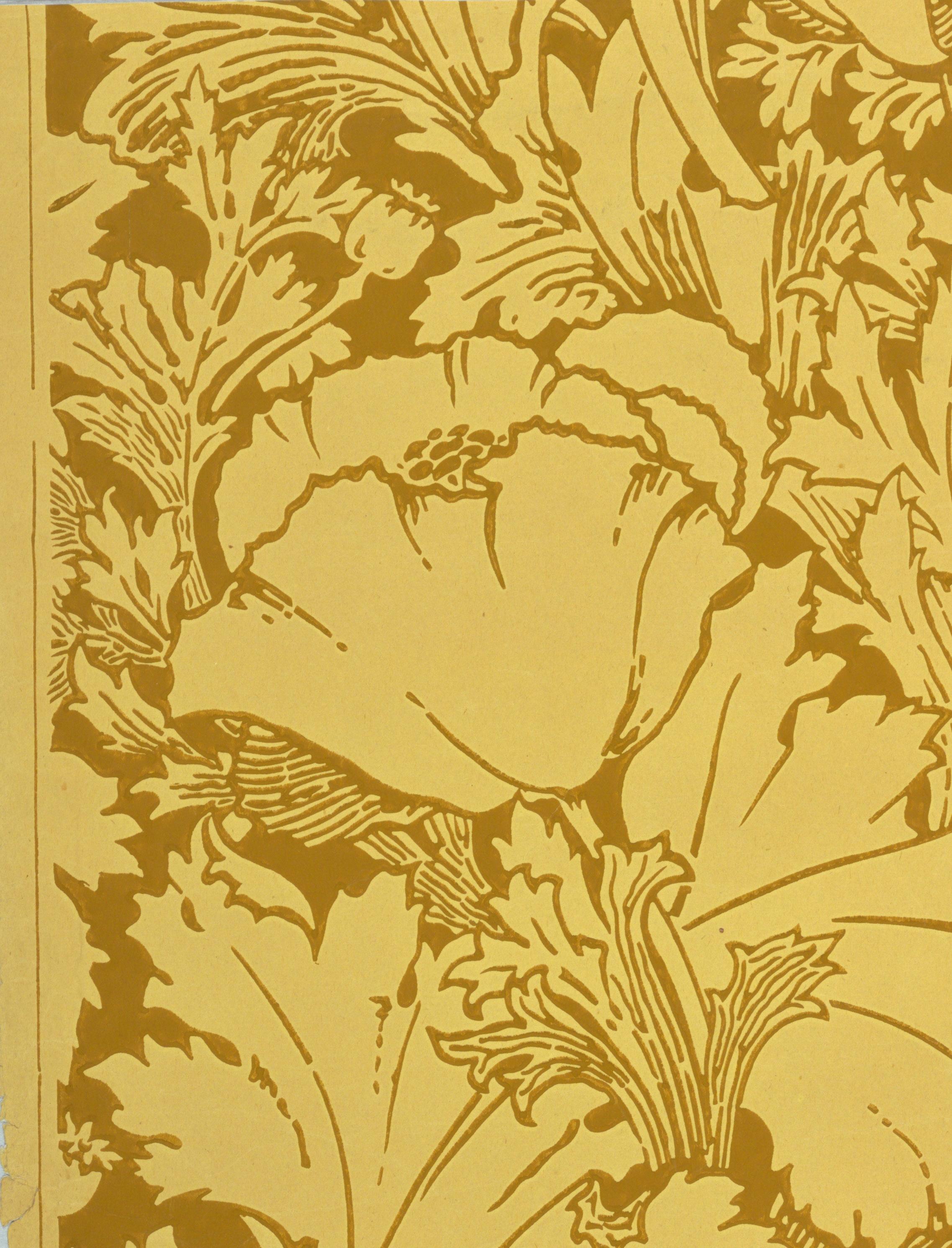
Letter From The Editors
Speculative Fiction: The Importance of Dreaming of a Socially Just World
Coffee (Prose) - Mason Koa
A Classical Analysis On Gender Fluidity In A Modern World (Art) - Hailey Johnson
Spring Of Conciousness (Prose) - Evan Randle
Swimming Pool By Desert Landscape (Art) - Daniel Miter
Apocalypse (Prose) - AS
Soñando Con Más (Poetry) - Nilvio Alexander Pungil Bravo
Designing The Dream Neighborhood - MJLC Staff
Energy Of Tomorrow (Art) - Jacqueline Wisniski
Raising The Bar (Poetry) - Larry Hollist
Landscape With Held Leaf (Art) - Charter Weeks
Armored Flesh (Academic Essay) Chyna Evans
Kansas City Dreaming: AWP - MJLC Staff
Technicolor Dream (Art) - Katie Hughbanks
The Ballad Of Antione Featherfluffer, And Cupid (Nonfiction) - Leah Johnson
Explorer (Art) - Riley Haller
I’ll Never Be A Butterfly (Poetry) - Boden Williams
Dewdrop Waltz (Art) - Katie Hughbanks
Abolition Isn’t A Blueprint - Ria Dhingra
In Her Gentle Gaze The Little Butterfly Falls On The Stele (Art) - Steve Qi
The Day The World Will Collapse - Ray Kirsch
One Of Many (Nonfiction) - Lily Spanbauer
Ethereal Connections (Art) - Shashwot Tripathy
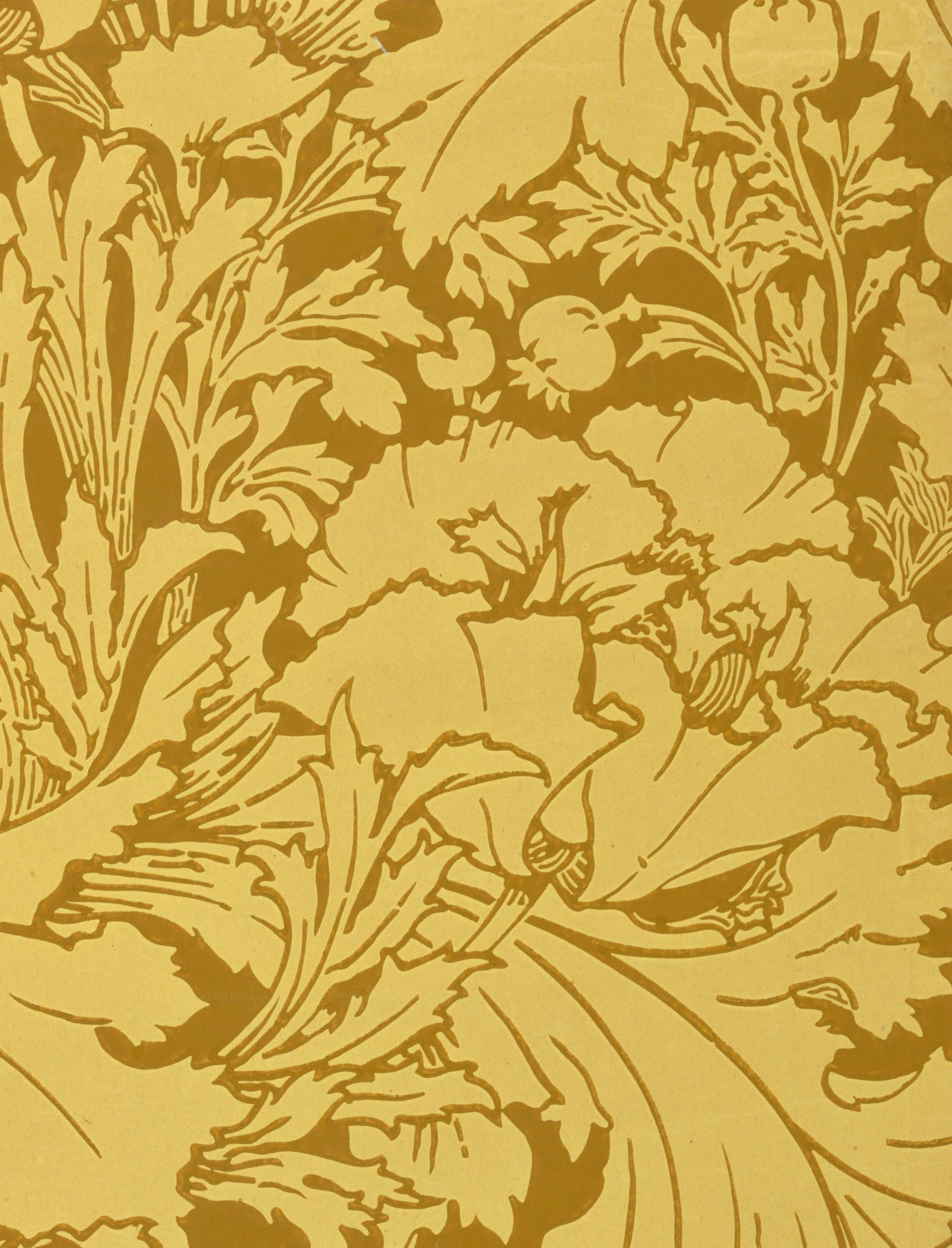
The Death Of Hemingway (Prose) - Taylor Root
Wooden Canoe In Pool, Lone Pine, CA (Art) - Daniel Mirer
Idyllic Dreams And Dystopian Nightmares - Mina Ankhet
After Listening To Copland’s Appalachian Spring (Poetry) - John Muro
In Reverie (Art) - Erika Lynet Salvador
Green World Dreaming (Academic Essay) Mackenzie Dimond
poor Madeline (Poetry) - Holly Hartford
Dream Or Nightmare? (Art) - Chloe Henry
Nostalgia (Prose) - Annika Thiel
Haley And Emma (Art) - Meg Bierce
I Hold You (Poetry) - Victor Stoesz
Calling Out Barbie - Aspen Oblewski
For You (Art) - Gabriel Lange Salud
Speculative Thinking
Sweet Dreams: Moth StorySLAM - MJLC Staff
Dream Time (Art) - Charter Weeks
Different Worlds (Art) - Charlotte Knihtla
If I Could Be Eve (Poetry) Nicole King
Ashes And Dreams (Prose) - Aelia Chang
A Dreamy Double Bill (Nonfiction) - Lance Li
You Start To Slowly Roll Your Wrists And Ankles… (Art) - Emiland Kray
Whisper In The Wind (Art) - Erin Murphy Stroth
The MJLC Dream Reading List
Following our transformation of the Madison Journal of Literary Criticism into an abolitionist study group and magazine, this Spring 2024 edition sets out to further expand our mission of social and literary critique. This edition captures the process of dreaming in its multitude of forms and emphasizes how imaginative creativity is required to both envision and work towards an abolitionist future.
As our study group this semester engaged with topics of radical design, ideal theory, utopias/dystopias, speculative fiction, and questioned the role of visionary planning in relation to social change, our publication conveys their multiple interpretations of “dream.” This edition showcases how individual dreams and aspirations can break apart social constructs and transfigure into collective desires. From poetry about Eden to essays about the Iranian Revolution and 2023’s Barbie, this collection examines dreams through the various mediums of essays, art, fiction, journalism, and poetry. We are honored to share the work of these talented artists. In creating this collaborative publication, we are grateful to our study group for their ingenuity, our contributors for their work, and our staff for their dedication.
Dreaming is a future-directed process that we do from a present reality. And it requires us to look differently at our past dreams as well. In our study group, we often use the idea of form and function to look at historical patterns. We recognize that while America has moved between forms of enslavement to disenfranchisement to segregation and mass incarceration, the function of oppression remains strong. So while we see change—past dreams come to life—we also see the need to dream bigger.
And there is inherent difficulty in this dreaming. Today, in the midst of genocide, an impeding election, and post-pandemic world that has illuminated longstanding carceral failings to more individuals, dreaming of a better future is for some a privilege and for others an inherent survival strategy. To dream is to not only consider what can be better, but to grapple with what is wrong now—a heavy burden to consider, experience, and reckon with. There is weight in questioning every system we rely on and the compliance our own practices have in perpetuating systems of harm. There is weight in feeling
responsible for what is to come in the future, to have a dream of a kinder world without being able to articulate the steps on how to get there.
And despite the difficulties of dreaming, continuing to dream and act in accordance with those ideals is how we keep moving. The power of dreaming lies not just in its promises for the future—we dream for the act of dreaming itself. We dream to persevere. Over the years, countless abolitionists and trailblazers have been told their dreams are not possible. Yet, we keep dreaming. Yet, change continues to happen.
Dreaming is a practice of untethered hope. The very act is radical. It takes place in the mind, the one feature of the body that can never be surveilled or regulated. Doing so in community, dreaming together, is something that the creation of this publication has taught us the importance of. Our group’s biggest success is that we are still here—meeting every Tuesday for two years now, discussing the carceral, coming up with solutions, and acting in initiatives. Together, we create art and publish narratives often ignored in mainstream media. Together, we continue. We take care of one another. We take breaks and fill in for others when they do the same. We view dreaming as a collective activity where the burden of responsibility in social change is shared by all of us.
Dreams are a sort of lived reality. This was once our dream. The MJLC. A dream that would never have been possible without our community. Together, we have passed campus legislation, organized teaching events, started a podcast, created a platform for stories, and cultivated an environment for regular critical discussion. This is living proof of the change that comes from dreaming. Thank you all for dreaming with us these past two years. We are honored to have served as your Editor in Chiefs and ridiculously excited to see where this dream takes the rest of the team, our study group, and our community.
Keep asking questions. Keep creating. Keep dreaming of more.
With love, always, Ria Dhingra & Anna Nelson
Co-Editorsin Chief
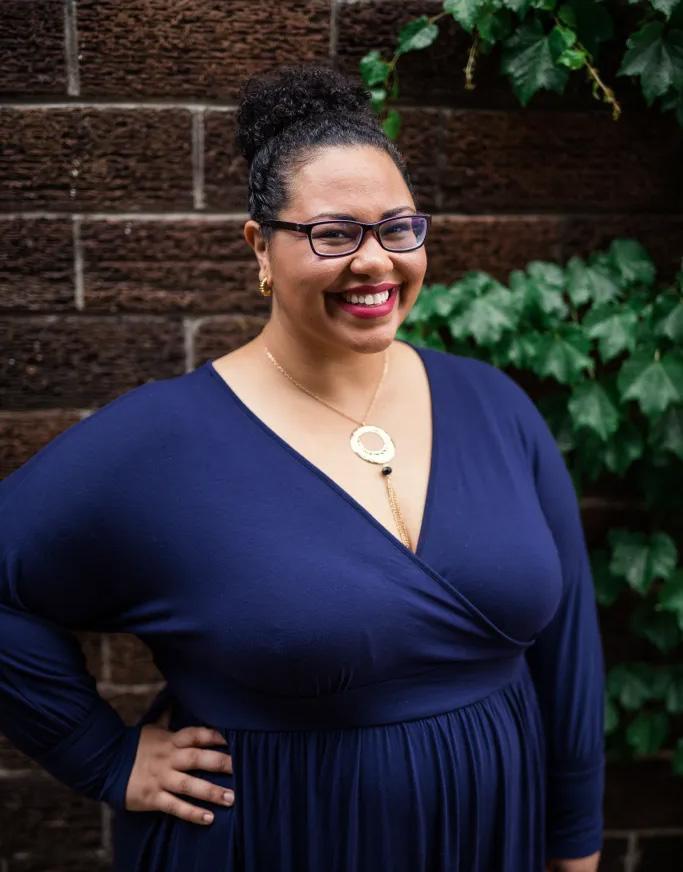 by Ray Kirsch and Will Hicks
by Ray Kirsch and Will Hicks
It’s downright impossible to imagine next Thursday without participating in speculation. In some way, people engage in creating fiction for themselves every day: theorizing about traffic conditions, dreading tomorrow’s statistics homework, and deciding whether or not to bring an umbrella to work. These, of course, are small fictions, but they invariably contribute to tomorrow’s world. Speculative and visionary fiction, though, tend to focus on the less mundane. They dream of worlds void of discrimination or debilitating illness and entice readers to imagine what if, just for a moment, the world could be different than it is. It’s an immense genre, broader
than any one person can imagine. We interviewed Dr. Sami Schalk to get her perspective on this expanding field.
Dr. Sami Schalk has taught in the Department of Gender and Women’s Studies at the University of Wisconsin–Madison since 2017. She has taught countless Gender and Women’s Studies classes, focusing on disability and writers of color, as well as visionary and speculative fiction. As a creative writer herself, Dr. Schalk enjoys exploring social justice issues that her students are interested in; through her visionary and speculative fiction course, students from any major can deep-dive into a topic of their choosing. Dr. Schalk has published two books, Bodyminds Reimagined (2018) and Black Disability Politics (2022).
What exactly is visionary and speculative fiction and what is its significance?
Dr. Sami Schalk: Speculative fiction is this big umbrella term that really refers to any kind of fiction that is non-realist in some way. I like that term because as an academic, if you write about science fiction, people who are science fiction experts have very strict definitions of what science fiction is. It has to have a depiction of futuristic science and technology in it. But speculative fiction has this broader term that can be more magical—realistic things that are a little more fantasy and also include things like alternative histories.
Steven Barnes, for example, has a series that’s an alternative history of what if Africa had colonized the world and what that [would] look like instead. I like that term because I like things that also have more magical elements or things that blend the science fiction with magical elements in them. That happens with a lot of African and Caribbean speculative fiction writers. They incorporate these other kinds of magical elements and ancestral, spiritual sorts of things inside of it.
The term visionary fiction specifically comes from the work of adrienne maree brown and Walidah Imarisha, who edited a collection of short stories which we read from frequently in [Gender and Women’s Studies 359] called Octavia’s Brood. It’s inspired by the work of Octavia Butler. [Visionary fiction] has this list of specific things that have to be involved. It has to be approaching it from a social justice perspective, has to be focused on identity and marginalized identities, has to think about change coming from the bottom up, change being collective, and it has to be invested in hope. It has to be hard and realistic, but hopeful. It’s not a utopia. It’s not where everything has already been solved. We know that creating change is hard. It is intended to kind of fuel us in some way.
[Visionary fiction] is really a term that they developed, when they came up with the book, through working with organizers. They did these writing workshops with organizers and activists, some of whom did not identify as writers at all, to think about what it would mean to write a story about how we organize, how we create change, or what this better future looks like. This sort of fiction allows us to start to imagine it as the writers and as readers right to also say, “How would that work? What would that look like?” That’s kind of the point of this genre; now, we can go and identify things like
Butler’s work that was written well before this term was developed, but we can see that strain.
For me, my research, and in my teaching, I’ve realized that that’s the kind of speculative fiction that I’m most interested in reading. Teaching is that which inspires folks to think about how to do things differently, whether it is around abolitionist work, racial justice work, or disability justice work.
In the introduction to your book Bodyminds Reimagined, you briefly mentioned how you originally disliked speculative fiction and that it was Octavia Butler, a prominent Black science fiction author, who brought you into it. What about her works changed your mind?
SS: I read Kindred first, and then I read Parable of the Sower. I teach Parable of the Sower every time I teach [GWS 359]. It was the first time that I felt like I was reading science fiction that was directly speaking to social issues I cared about—and there was a representation of disabilities. My research interest is in disability and race; I was really excited about the way that disability was being represented.
So often, in our speculative fiction, it’s on these polar ends: either we’re in utopia where disability no longer exists and everyone’s able-bodied and ableminded all the time, or [we’re] in our like, dystopian, apocalypse version [where] everyone is disabled.
What role does reimagination and dreaming play in social justice activism?
SS: I think it allows us to imagine that things can turn out differently than what we have seen in our lifetime. Being able to give folks places of hope is really important. For my most recent book, I interviewed some activists. One of them works within the prison industrial complex, specifically with deaf and hard of hearing folks and ensuring that they have access to be able to speak to their loved ones but also to their lawyers. One of the things that this person was talking about was that when you’re addressing these huge systems, you have to have a different metric of success, right? For this person, their metric was like, “how many families have I reconnected?”
What I really liked in these stories is that sometimes the hope is like, “I’ve changed one person, I’ve changed my community, or I’ve figured out one way to resist and maybe it’s going to make a bigger difference down the line. But for now, at least I have
taken back some of my power.” That’s what I think is really important about these sorts of stories—the ability to dream is that it gives us that inspiration to be like, “I can keep going on, I can keep fighting back against this”—because it’s really easy for us to feel defeated by these systems, especially at the very large macro level.
How do you define abolition? Do you see a connection between the work you’re doing [in and outside of class] and abolition?
SS: I consider myself a person who’s learning and following [about abolition]. It feels new. I would say within the last like seven years, and I’ve really been able to dive more deeply into what it means. I come to the work mostly through disability justice work— thinking about institutions and incarceration, including psychiatric institutions and learning about the fact that so many folks with psychiatric disabilities are in prisons. It becomes one of the spaces [where] many disabled folks are being held.
For me, abolition is not just getting rid of prisons and jails but all systems of containment, coercive control, [and] punishment. For me, that expands into my teaching in the sense that I try really hard to have a classroom that is not punitive-oriented—I try not to be a police person in the classroom—to really allow students to show up in the ways that they need and be understanding about that. Moving away from systems is one of the ways that I see myself working toward that in my teaching, even [though] I don’t always necessarily teach about abolition directly. It often shows up to these other methods of moving us towards better and more free systems.
How would you respond to people who find that focusing on the speculative side, or the “what could have been” rather than the “what is,” is a waste of time?
SS: I think that there are folks who are gonna focus on the “what is right,” and I think that’s important. We also need folks who are imagining, where do we go from here? What comes next? What are the steps? What are the things that we want to move towards? We know these systems continue to morph
and change. There’s so many students that say, “Well, slavery [has] ended” or “The Civil Rights Act was passed. Therefore, it’s over.” These systems continue to shift.
We have to keep looking forward to think about what’s the actual horizon that we’re trying to get to when we need those folks that are pushing us towards better and better horizons. We don’t want to become complacent and to say, “Well, that’s good enough.” We know that there are still folks who are being marginalized, oppressed, harmed, and killed.
Ideally, what does an abolitionist world look like for you?
SS: A world where folks are not incarcerated, or otherwise contained against their will, a world where folks have support for their mental health needs, for their daily human needs. I think that an abolitionist world, it’s also a world where folks have housing, have access to food and education, and the bare minimum of life circumstances that we know actually leads for folks to end up in engagements with the prison industrial complex because of the fact that they don’t have their basic needs met. I think about the deinstitutionalization movement with the disability rights movement, where there was a push to end these institutions that were housing and people with disabilities—not just psychiatric disabilities, but disabilities of all sorts. The movement was to end them because they were causing harm to people; people were not being supported.
We know that we can’t just dismantle the existing kind of institutions of harm; we also have to create these other systems of support. For me, those things have to go hand in hand.
He tells me he has the same dream every night. He says, “Let me tell you this dream I’ve been having.” Then he tells me. Every morning.
I push his coffee forward on the counter. He stares at it and smiles weakly. He stands there, still in his pajamas.
The dream goes like so:
He is in bed. He is trapped. There are many of him in the labyrinth. Each room is a mirror, many a man trapped. Everywhere he goes, more mirrors of him, watching. The rooms are striped.
He goes to a big white box; a real nice big white box, he says. He waits in line to reach the box, more mirror men in the way. Then there’s a hole in the box and a young guy in the hole, and the young guy says, he says, “Good morning, fella, have some coffee.”
But the coffee is bad. So damn bad, he tells me. By this time, tears are strolling down his face. He rants. He rants, the coffee was so bad in the dream. He rants that they only used coffee because the bitterness covers up the taste of the small eggs inside. The little eggs, stale-white with a gloss. When he drinks the coffee, they hatch. They hatch, and they hatch into big dark monsters. Giant shadows that creep up the walls, clawing for the windows. He says he tried to open the windows so the shadows could leave, but no, the mirror men stop him and grab him and put him back in line with the striped rooms. The shadows are angry and get bigger and bigger, he tells me.
Sometimes, they get so big and swallow him whole. Then all there is to see is blackness. So he takes his empty coffee cup and gives it back, the shadow still with him. He walks to his room, and the darkness whispers to him, “We gotta get out of here, friend. That guy, he doesn’t like us. He isn’t like us, like you and me.”
“You’re right,” he says, and he breaks free, running from all the mirror men and striped rooms and he realizes that they’re all chasing him through the maze. Even the rooms, bounding after him like gray tigers. They roar and he keeps running. He gets to a gate, and climbs over, panting.
But there are more men. They grab him by the arms and into the striped rooms, the tigers. He screams, he tells me, but the men only shake their heads, muttering, “again, again, again.”
I stand there, checking behind him to make sure the others in line aren’t getting impatient. They aren’t. They never do.
He continues, saying they force him back into the room, the stomach of a beast. He says he cries and goes to sleep. Oh, the shadows are still with him, hatched from the eggs, whispering back and forth, lulling him to slumber.
Then he wakes up from his dream, he says, and now he’s here.
Shaking, I see him reach his forefingers into the coffee, and pull out two glossy eggs, slightly dissolved. He crushes the cup in his hand and, warm liquid seeping over, says to me,
“They can hatch in hell.”

Sometimes I felt as though my mind was as trapped in my body as my body was in prison. It yearned for more yet could not find it; it was a key without a purpose. I had tried to subdue my mind on many occasions (as I had before my conviction, albeit for entirely different reasons and in completely different ways) to no avail.
Yet, through a letter sent to many of us inmates from some social justice organization, my mind detected the faint image of a lock – perhaps my brain could not wholly turn it, but it could try to wriggle it loose enough to peer into the light beyond.
They called it astral projection. It was a way to position oneself while in the boundaries between consciousness and rest, to experience a life unlike one’s own—or, in my case, a life that could have been.
The logical, cynical edges my brain had developed over my adult years refused such a notion. If this advocacy group was at all refutable or helpful, then the letter would have never been allowed 1 to fall into my lap. Besides, such a concept was impossible – a waste of the little effort I had left to spend. But within my innermost thoughts, a voice whispered desperately:
Maybe. Just Maybe. Anything but this—anything more.
A few hours later, I sat crosslegged in my bare prison cell. The cell wasn’t empty because I was disorderly or anything of the sort, but because I didn’t want anything in it. Possessing anything in prison seemed duplicitous to me, even if it was a bed.
The process was strange, and while I could potentially describe it in its entirety, I didn’t write this story as a
manual or how-to. Unless this gets published and sent to prisons across the country, I don’t think anyone who would need to do this would have access to this account, anyway.
I took a few deep breaths in and tried not to gag from the musty scent that corroded my nostrils. My mind worked harder than it had in years; the rust and grime that built up over ages of doing nothing of value or meaning were slowly shaken off.
And I imagined, No,
I dreamt.
I stood on a hardwood floor that had been impulsively cleaned, a completely transparent glass window, a vista of a thick forest, and the mystifying sense that I had all the time in the world to explore life. My kid’s toys were strewn about me (I’d pick them up later; a sterile environment was bad for the mind, anyway), and my wife’s sky-blue sandals were tucked into a homemade rack.
No (DRINK). No glasses. A plastic cup of water in my hands, though. That sounded nice. I tried to imagine what my kid’s face would look like now, trying to imagine them as they gleefully ate the food I prepared. Maybe I’d have a job, too, instead of being a stay-at-home dad—perhaps then I wouldn’t have ended up here.
I suppose, though, it might have only made things worse if I had. Entering a monochrome life was easier when I knew only a few pigments. I leaned forward and cracked some god-awful dad joke: something about what aliens use to show their movies in a theater. My kid — who I was able to see grow into a talented but angsty tween —
facepalmed with an exaggerated groan. My wife, meanwhile, smiled endearingly – she needed some levity from her well-paying yet stressful job, and wasn’t too picky about how clever the methods were. I was making a fool of myself, but at least they seemed happy I was there.
After some extended parable, my hand reached out to douse my scratching throat and temporarily froze. There wasn’t any (DRINK) in it, was there?
Not the kind of (DRINK) that got me into this in the first place. Not the kind that had the officers tell my wife and kid never to see me again, even though it would take the devil himself whispering in my ear to hurt them. Not the kind that, during my first nights, where I had deluded myself into thinking I’d really feel again, I desperately begged for while clutching the sheets of my stone-like bed.
No, it was water. And it cooled my throat, my mind, my soul. I kept drinking and drinking and drinking, feeling as though the proverbial—and sometimes literal—chains binding me were made of sugar, fading away, and loosening my shoulders.
Drip. Drip. Drip.
When I woke up, my heart felt empty – I wasn’t sure why. Maybe it was still stumbling from the rug pulled alongside my opening eyelids, or maybe because it had experienced the first faintest touch of happiness it had in years.
Maybe it was both, but at least I could look forward to tonight.

Yuan, humans are social creatures; we bear responsibilities towards society.
You’ve grown four centimeters taller since last year.
On your own, you couldn’t have grown even a centimeter. These four centimeters are the grace of fruits and vegetables, grains of rice, and the labor of workers. You should be grateful. You must strive for betterment, have ambition, and hold lofty ideals. First, start with the attitude you bring to completing your homework. Why settle for mediocrity in your compositions? Yuan, Yuan? What are you thinking about?
Her voice pulled me back to the office. It was just us, the desks, chairs, and white walls. The setting sun filled the room,
water rushed into a sealed glass box. I knew I had to say something; occasionally, I felt this pressing need to speak. Yet, silence wouldn’t spell the end of the world, which in its final moments, would be filled with noises of things that must be said. I had to say something, as if leaving a blank on the test paper was against the rules.
I’m wondering, when it would rain this year.
She sighed, handed me back my composition, and told me to leave without looking at me again. I’ve heard this tone too many times, hiding in different mouths, within different sentences. But it always conveyed the same meaning: give up. It frightened me. The answers I’ve guessed on tests have never been right, unforgivably wrong,
even. I often wonder, am I fundamentally flawed as a person?
I bid her goodbye, closed the door, and in a daze heard her mutter: What’s the use of rain? There’s nothing left in the fields anyway.
Since that year, it indeed never rained again. The first year, I watched the disappointed sky and finished winter, the clouds murky like an unclear piece of jelly. The second year, the sky lost all its moisture, and the clouds turned into dry, cracked riverbeds. People stopped believing in weather forecasts. They said there would be rain, there would be rain, but the guest never came. Weather forecasts loved stating probabilities as certainties, but rain divorced probability and never looked back.
During the winter break, I wrote only one weekly journal, from the start to its end. I wrote: it didn’t rain this year; nothing happened. It didn’t rain last year; nothing happened. It won’t rain next year; and nothing will happen. The teacher didn’t talk to me about my journal, didn’t even spare me an extra glance. I was left in the winter wasteland to grow however I might.
The third year still had no rain. But I only guessed half of it right; filling in answers on a blank test paper, I was never completely correct. The third year had no rain, but it had a cat. We met in the vast, dirty belly of the world.
The cat was an urban legend that often went like this: red eyes, white fur, fat as a ball. If you satisfied his intellectual needs, brought him a book (not textbooks or shopping magazines), a box of videotapes (not horror films), a record (Bach preferred), he’d grant all your wishes, complete a year’s worth of math homework for you, make you the top student for a year, or get you the unpublished video game early. He lived in a drain in front of a convenience store.
I always thought he was just a legend. Then one day, perhaps my smartest day, I realized: who would let a legend live in a sewer?
I told him about the revelatory moment. He gently laid his paw on my hand.
I visited him with Nietzsche’s “Thus Spoke Zarathustra”. He had a bookshelf with a glass door, an old record player, a yellow construction lamp, and a vintage sofa. He was reading Hawking’s “The Grand Design” under the lamp, legs tucked under his belly. The book was open to a page with a goldfish illustration. Children’s book pictures are so lovely! He awkwardly explained.
I handed him the book, he glanced at it, then shoved it beneath his belly.
I want my dad to come back and see me.
He moved his belly aside with pity, pushing the book back inch by inch.
I have an electronic piano at home. A wall full of bookshelves, each book no worse than this one. I have many, many old movies at home. You can play, read, and watch anything you like, it doesn’t matter even if you break them, I just want my dad to see me...
I’m sorry, I wish I could help, he said thoughtfully. I can’t do it. It’s not about the reward. Once a wish involves relationships between people, everything becomes impure and complicated. I’m still learning, still understanding...
So when will you understand?
Hard to say. It might take a long time, until you’re old and dead. Or it might be soon, maybe tomorrow, I might understand by then.
The next day, I went to see him again. He was still on the page with the goldfish, silently covering it up when he saw me.
I already told you, don’t you understand...
I interrupted him.
Come over to my place to watch a movie.
Almost no living sound exists underground, the echo rolls over in this massive cave, repeating, come over to my place to watch a movie. I didn’t have the courage to say it a second time; I was too useless, weaker than the shadow of a sound. He didn’t answer. The echo, like a satellite off its course, played the only official language over this planet’s 500 million square kilometers, talking to itself until the end, becoming metallic trash floating in the vacuum.
He finally spoke. Alright, preferably a movie with lots of little fish.
The satellite shed tears of radio waves.
“Later” is a powerful word. All possibilities, good and bad, one hundred percent and one in ten thousand, both live within this word. Later, he moved to my house and lived on the carpet. Later, I started playing the piano. I didn’t learn much, just a bit, then casually left it. I’m like a leaking bag, losing things along the way. I know, I can hear those sounds. But I never looked back to pick them up. What for? I’m an
bag, why to pick things up just to lose them again? But I started playing the piano. I stumbled through “Mary Had a Little Lamb,” he darted across the piano keys on his short legs, playing chords better than me. I gradually got better too. Like a baby afraid of falling, unwilling to stand and walk until someone reaches out and says, come here, I’ll hold you, you won’t fall. I slowly stood up, walked with a stumble, faster and faster, finally ran into the wind. He said to me, panting: See! Things will get better when two people are together. I believed it from the bottom of my heart, even though last winter I wrote in my journal: Nothing will happen. Meaning, neither good nor bad things will come. This winter would be an empty bag.
We began to share our lives with each other. What could I say? I’ve only lived for fourteen years. Nothing was worth mentioning in those fourteen years. I mean, the things I’m going through, every fourteen-year-old around the world is experiencing. It could be a collective pain of a huge group, but no one wants to talk about it; or someone seriously talks about it, and everyone laughs, saying you guys are so humorous. Or everyone gets angry, saying you’re ungrateful, living better than any previous generation. Besides, could I speak for all the world’s fourteen-year-olds? Does everyone at fourteen feel life is just to be gotten through, like a long, useless class, whether
you pass or fail, you’ll graduate sooner or later. My own issues are trivial. Speaking out is a shame, as if flaunting one’s frivolous self-importance. But I told him. I even told him about my dad. My mom died giving birth to me. He raised me until I was six, then went to work far away. He only had a monthly obligation of one thousand dollars to me. I resented him, like resenting a kite that escaped in the strong wind. I dreamed of him walking in a heavy snow. I chased after him, calling, dad, dad. But the snow swallowed the sound and exhaled light. We were in a place of absolute silence, so quiet that even the possibility of communication was lost. I cried, shouting dad, dad, not knowing if my voice was hoarse or if the sound couldn’t escape. In this place, only silence could be deafening. He walked so fast. I was only six, I couldn’t keep up. I saw him about to walk into a place I couldn’t reach. I squeezed all the air out of my lungs, shouting da--d-- He turned around, looked at me. The sun shone on us, and for the first time in my life, I felt so warm. We looked at each other from a distance, like strangers, all barriers fallen away between us. We were as light as two sheets of paper, standing in the sun’s first ray. So warm. Together, we melted into the snow.
I wish I could make your dream come true.
I’m two hundred and ninetyfive years old this year. He looked at me, a bit annoyed. You’re not surprised at all!
I quickly said, wow!
Never mind, never mind. Do you really want to hear? It’s a long story! Think of the Arabian Nights. Two hundred and sixty-four stories, told over a thousand and one nights.
Go ahead.
I come from a planet without fish... I traveled over a hundred years, by that planet’s time. I know where I’m ultimately going, not to Earth. To death. He said. I want to die. I live to fulfill others’ wishes but can’t satisfy my own. I was born unfree. My wish is to die as a free being.
Before finishing his story, he won’t die, won’t leave, won’t go to a bigger, stranger planet. In a dream, I saw someone breaking into my house. I heard someone say, so this is the cat. The one from the sewer who grants people’s wishes. I heard someone say, is there really such a thing? Are there miracles in the world? They grabbed him by the neck and put him in a cage. They said, anyway, this city needs this cat. I told myself to wake up, wake up. I ran desperately in the snow. I was only six, I was only six, I was so tired, but for the first time, I ran with all my might. I thought, things shouldn’t be like this. He’s different from my father. My father and I never Prose
What about you?
started, but there was finally a possibility between him and me, please don’t take him away. Please don’t take away this precious seed. I thought, I’ve lived fourteen years, fourteen years. Nothing good happened in fourteen years. Now it’s time, there should be something good. Two people together, there should be something good. He’s lived two hundred and ninety-five years, seen more than half of the Galaxy. He can’t be wrong. The year before last, it didn’t rain. Last year, it didn’t rain. But this year, this winter, please leave me some rain. I ran to the end of the snowfield, there was nothing there, only a wall as tall as the sky. I pounded it desperately, my heart thumping loudly. This wall separated me from a cruel, merciless world. Protected me from courage and love. But I’ve never hated it more. They took him away. I knelt down, face against the wall, crying, my heart’s chamber filled with moist tears. Like a dam hit by a flood, it finally collapsed with a bang.
When I woke up, I was in an empty house.
I walked out onto the street. Two light rails crossed paths. In the cross-section, between the carriages, distance disappeared. The encounter finally became possible, and finally became a disaster. I watched them crash into each other’s bodies, against the gray winter sky, the huge sound of metal collision and the
explosion. The bridge crashed down in front of me, unfamiliar stars hitting my heart. The crowd suddenly converged in one direction, as if deceived by the moon’s gravity. I followed the crowd, where was I going? Who was I looking for? I finally saw him. He was on the stage in the city center square. In the eyes of the swirling crowd. He stretched out a paw, asking for a microphone. He coughed into it, like a stone falling into water, silencing the noisy crowd. I looked at him through the throng of heads. He spoke.
Today, I can only bless you. I wish everyone’s dreams come true, except mine. I wish all your dreams, unrelated to love, hate, hope, and despair, come true.
I pushed through the crowd towards him. Today, there was no rain; money and gold fell from the sky. I walked past the dead coming back to life, the blind seeing, one miracle after another. I approached the cage, touching his snow-white forehead through the gap. He said to me: I’m two hundred and ninety-five years old, Yuan. Two hundred and ninety-five years have their own pride. I’ve always wondered, why you... You’re so small, only fourteen. You’ve never left this city, never stepped out of this hamster wheel. You’ve never been to the Milky Way. You don’t even have something bigger and farther in your heart. Why you?
I finally understood what’s between people. At the same time, I understood I could never satisfy you. I’m sorry. He licked my palm.
I said no, no, you’ve already fulfilled my wish. I looked at him, at the miracle that arrived earlier than everyone else. Everything happened this winter, fourteen years of absence suddenly arrived. This was the first time I was happy about my mistakes. This wasn’t a futile winter. Both good and bad things happened.
I looked at him for a long time, I said, I hope your wish comes true...
He smiled and said, thank you, Yuan. I saw his head burst into a small red flower. I hugged the cage, kneeling in kneedeep wealth of human world. The blind saw, the deaf heard. The dead emerged smiling from their urns. Some were busy crying, some were busy laughing, some busy living, some busy dying.
I heard the sound of water running above the sky, the long overdue finally arrived. The first drop of the great flood fell from the sky; dropped into my eyes.

Tu silencio bajo una mirada seria y pensativa donde los mundos se unen bajo la manta poética y soñadora vuelan los sueños, los pensamientos eternos, gritando al universo, por qué? con el corazón abierto de par en par atravesando lo desconocido como flecha fugaz de estrellas que llueven mientras se visualiza un mundo eterno intacto sellado por cicatrices.
El tejido de nuestra realidad con hilos de confusión, nace ahí el poder de la imaginación, la medicina de los soñadores y de algunos necios.
Cada sección tiene un vínculo que nos define quienes somos y a donde vamos.
En ella existe una visión dormida sin límites donde un mundo nuevo se alinea.
Soñar es ver y oír más allá de nuestros sentidos como humanos. Hay que desafiar las cadenas de la tradición que nos ata con cada acción y palabra. El viejo pensar son como cenizas que vuelan con el viento.
El ave fénix despega y vuela, portando en si las esperanzas.
En los sueños encontramos el futuro que anhelamos crear.
El cambio está tejido de amor, paz, comunicación, armonía y no de odio ni rencor.
El pasado es tejido por el presente y entrelazado como bailarines nocturnos.
Soñar es tejer una nueva historia de la inmensa creación de la vida.
Entonces, soñaremos de nuevos sistemas con instituciones reinventadas que inspiren y empoderen ideas frescas y verdaderas sacadas del corazón.
Soñemos con un sistema en que la política no sea el poderío del mundo.
¡El mundo nos pertenece!
En el corazón de cada soñador existen semillas de un profundo cambio, la visión del mundo amable, llena de amor y esperanza que riega sus tierras con abundancia.
Sueñen todas estas almas, sueñen como guerreros con valentía y así dejar volar su imaginación, porque los sueños abrirán las puertas de un futuro prometedor.
Poetry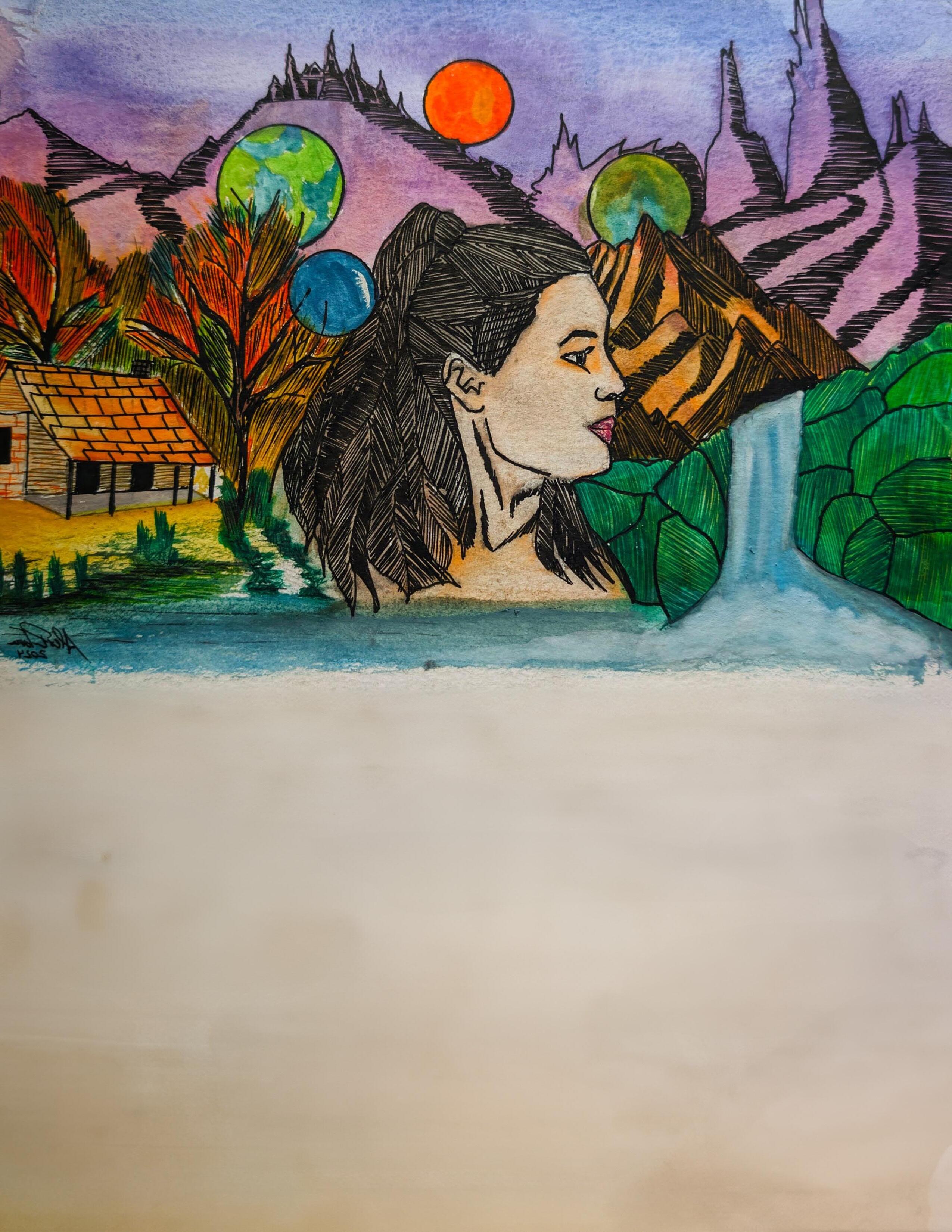
Your silence under a serious and thoughtful gaze where worlds unite under a poetic and dreamy blanket dreams fly, the eternal thoughts, screaming into the universe, why? with a heart wide open, piercing the unknown like a fleeting arrow of stars that rain down while visualizing an eternal world, intact yet sealed by scars.
In the fabric of our reality, woven with threads of confusion, lies the power of imagination, the medicine for dreamers and fools. Each section has a link that defines who we are and where we are going. In it exists a vision, dormant and boundless, where a new world aligns.
To dream is to see and hear beyond our human senses. We must challenge the chains of tradition that bind us with every action and word. Old thinking is like ashes that fly with the wind. The phoenix rises and flies, carrying within it our hopes.
In dreams, we find the future we long to create. Change is woven from love, peace, communication, and harmony, not hate or spite. The past is woven by the present and intertwined like nocturnal dancers. To dream is to weave a new story from the vast creation of life.
So, we will dream of new systems with reinvented institutions that inspire and empower fresh and genuine ideas drawn from the heart. Let’s dream of a system where politics are not the world’s dominion. The world belongs to us!
In the heart of every dreamer exist seeds of profound change, the vision of a kind world full of love and hope, watering its lands with abundance. Let all these souls dream, dream-like warriors with courage, and let their imaginations fly, for dreams will open the doors to a promising future.
When you hear the word “design,” what do you think of? Fashion? Graphic arts? Architecture? How awful the construction of a freeway over a walkable city is? Our favorite Shark Tank product: a fruit slicer, an avocado storage container? Design—“to create, fashion, execute, or construct according to plan”—is the process of dreaming, of imaginatively creating something tangible (“Design”). Innovation, invention, involves creating something in response to a need or problem. When “designing” a good product, one must consider the market and what will sell. That being said, designers themselves not only view design as a physical product, but as a creative, imaginative, process.
As an experimental art movement emerging in Italy in the 1960s, Radical Design was initially a subversion of traditional art forms. However, in the context of functioning as an abolitionist collective and artistic anthology, like the Madison Journal of Literary Criticism, talking about the radical capacities of art and design— looking specifically at fashion, architecture, institutional design, and magazine layout—allows us to envision, to “dream,” to design, an abolitionist future. As the MJLC aims to promote literary criticism as an everyday tool for navigating social narratives rather than an academic discipline, treating radical design in a similar fashion encourages everybody to consider how to create the sort of future we dream of having.
Thinking like a designer allows activists to approach social justice and an abolitionist future imaginatively. The creative capacities required to design something itself is a radical way of thinking in a world that promotes complicity over creation. Thinking like an artist, “outside the box,” is itself a radical praxis. Furthermore, categorizing the modern day, the status quo, like the carceral state as an institution that is intentionally designed empowers everyday people to critically question both why and how carceral practices are upheld and reinforced. The status quo is a dynamic series of overlapping designs, not a static monolith. As such, it is possible to re-design it. Thinking like a designer allows one to question accessibility in graphic mediums, the inclusivity of architecture, and the limitations of institutions such as the credit and labor market.
This past semester, the MJLC staff and study group considered design, discussing topics such as automatic hand sanitizer dispensers and Apple watches being created with a lightskinned audience in mind, failing to function properly on darkerskinned individuals. Or, how bright fluorescent lights in schools and hospitals, while harmful for individuals, are installed for surveillance purposes, making it easier for faces to be picked up on security cameras. And, the Brutalist design of the campus Humanities building, an infamous location known for its confusing
hallways, hidden bathrooms, and lack of windows. Essentially, in questioning pre-existing design, our team actively engaged with design rather than passively being subject to it.
To expand on this notion, not only did we question design but designed ourselves. The following reflections from MJLC staff, in tandem, showcase our team’s “dream neighborhood,” with each staff member focusing on a particular element of a fictionalized neighborhood they would either create or deviate from pre-existing design. Our team considered: What do the houses look like? Are there community facilities? What is our relationship with neighbors? How does the landscaping look? We questioned what is carceral about suburbia and aimed to change it for the better.
In this exercise, rather than considering a “market” we considered humanity, designing for people we loved. We attempted to envision a world that improves conditions rather than tries to profit from them.
Designing is putting dreams into action, a prerequisite way of thinking for a revolutionary future. We are proud to share our preliminary ideas, our dream design, of a neighborhood with all of you, an activity inspired by the Stedelijk Museum of modern and contemporary art and design, located in Amsterdam.
Growing up, my mother had a large, rectangular garden in our backyard in Southern Minnesota. She grew berries, green beans, and a variety of flowers. Whenever the green beans were ready to be picked, my three siblings and I would sit at the counter, each with a knife and cutting board in front of us. We each received a bucket of freshly-washed green beans and an empty bowl to place them in afterward. Every year, we’d place bets as to which sibling would accidentally snag their skin with the knife. Every time, we were reluctant—but still did it regardless.
Last semester, I read several articles and books about collective gardening. One of those novels included the Parable of the Sower by Octavia E. Butler, wherein the main character, Lauren, created the philosophical idea of Earthseed which is about collective change and consciousness. But Earthseed was not just fictional, it has inspired the creation of real-life communal spaces for people to garden and create produce together. The Black Farmers Collective and the Earthseed Land Collective are two examples of collective spaces that do more than just gardening or farming; they also explore relationships to land and sustainability.
Understanding and embracing our relationships with land, farming, gardening, etc. is vital to imagining a dream neighborhood. In a collective, dream neighborhood, there can be the sharing of food, space, and land to ensure that everyone in the neighborhood has access to healthy, locally-grown food. There could be countless gardens, collective farming spaces, physical spaces dedicated to preparing the food. Collective gardens offer endless opportunities, from what is grown to which meals are made, to the community we get to share them with.
AESTHETIC BEAUTY AND ORNAMENTATION ARE THINGS WE SHOULD DREAM FOR MORE OF. BEAUTY INTEGRATES THE BUILDING INTO THE COMMUNITY—IT OFFERS DIGNITY TO RESIDENTS WHO WOULD OTHERWISE BE VISIBLY AND SOCIALLY SET APART
Sophia Smith
As a kid, my mom would take my siblings and me to the Bay View public library at least once a week. We sometimes went even more often in the summer when school was out, trying to cradle as many books as possible in our arms. I think I took the accessibility of the library for granted, how information, stories, “how to’s,” art, and movies were all freely given with no expectation of reciprocity. Now, as a college student, I need my student ID to enter most of my university’s libraries. I have to pay an arm and a leg for a textbook. Education is given under the condition that a transaction will be completed—money for ideas. In our designed dreamscape, I would require public libraries in every neighborhood. Public libraries are places for all peoples to gather. There are no expectations of payment—you go in, check out a book, and enjoy. Anyone could have a library card, no ID or fee required. Our public libraries would have educational elements as well. Classes and workshops would be offered, giving people the opportunity to learn skills and gain knowledge that would otherwise be gatekept. Education would be accessible for all, just as books and information are accessible in public libraries, making libraries even more of a central gathering point for people. We would also hold events outside of educational purposes. We could even host book swaps and art events like scrapbooking or collaging, which would not only provide creative opportunities to citizens, but also act as a way to bring the community together. Libraries would be a safe haven for all and offer childcare to parents who want their children supervised in a safe, welcoming environment when they go to work. They would be a reliable place for learning and creating, with no transaction required.
Every so often, I slip into a reverie, reminiscing about how some of life’s most intimate moments transpire in parks, from youth through adulthood. As a child, I would construct sandcastles and get blisters from the monkeybars. Colorful balloons bobbed in the wind and laughter permeated the air as our community celebrated birthdays, holidays, and graduations. During my teens, we would weave dandelion flower crowns during the day and ride the swings after dark, exchanging secrets and heartfelt confessions in peaceful seclusion. Perhaps, in times of rebellion or pain, we would enshroud ourselves in plumes of nebulous smoke, crossing our fingers that no one saw. As an adult, the lush, lofty trees offer shelter from the sweltering summer heat, perfect for reading a book or hosting a picnic. In retrospect, what made these memories whimsical and magical was having a peaceful refuge from the inorganic isolation—fences, property lines, and walls—that divides urban neighborhoods. The parks of my childhood were home both to residents and roamers: the children, the elderly, the artists, the naturalists, the lost, the lonely, and the loved.
These memories are a testament to the importance of green spaces, which provide safe spaces for recreation, socialization, and celebration. Accessible green spaces offer multifaceted benefits, including improvements in mental, physical, and emotional well-being. Immersing ourselves in nature not only facilitates processing complex emotions such as grief and loss, but uplifts our spirits. Green spaces encourage people to leave their homes, socially bond with others, and pursue active lifestyles, which are especially important since a lack of walkable neighborhoods deters communities from engaging in these activities due to safety concerns. They also provide habitats for wildlife and native plants, an act of restoration that can mitigate the effects of pollution and depletion, allowing us to connect with the earth.
I grew up in a city where, if you didn’t have a car, you couldn’t get very far. Having my own was a privilege that shaped a lot of my opportunities—I had a reliable way to get to school and work, I could see members of my social circle whenever I needed them, and I was generally independent. After living in Madison without a car for a few years, I’ve had to find new ways to grocery shop, commute to work, and be an active community member. That’s why, whenever I see a city bus, I loudly proclaim I love the bus! to anyone who will listen. Now, is the bus a perfect experience? No, and I don’t pretend that it is. It can get crowded, it can get loud, and sometimes it can smell a little funky. But will it affordably get you from one place to another? Absolutely. It also gives you a chance to get to know your fellow community members, even if it’s through wishing someone a nice day or offering one another a smile. Well-organized bus routes also keep more cars off the streets, minimizing carbon emissions and dangerous road traffic. The bus, like trains or bike paths (which I also love), can keep communities cleaner, more well-connected, and safer. That is why my dream neighborhood would include the infrastructure for convenient, collective, and sustainable public transportation.
As a child, I was almost unilaterally restricted from screens of any kind, so I relied a lot on my brother and my neighbors for entertainment. I was fortunate in that way. We could run across backyards, explore the forest behind them, play in the creek, or play sports in the nearby fields. Most people, however, don’t have all of this. Their neighborhoods instead are bisected by busy roads or have no trees, parks, or small public spaces. It’s a shame, and it severely impacts the ability and desire of both children and adults to socialize with their neighbors. Where should the children go to play when they either don’t have a yard or don’t have easy access to a recreational public area? Or when houses with a “yard” have maybe 30 feet of poorly grown grass gated by a decaying, wooden fence?.
A neighborhood, ideally, should have less emphasis on individual property and more emphasis on community-maintained common areas. Maybe that means a garden. A baseball field. A grassy field. These convictions of mine didn’t stem from random thoughts. I’ve been to Montreal, Paris, Munich, and each of these major cities had within them beautiful parks humming with activity. It’s rare to see a bridge in the summer that isn’t lined with couples chatting on the railings. It’s rare to walk the city streets and not see at least one that doesn’t allow cars through.
In Montreal a guide pointed out to me a street which had at one point been much narrower and said: “This is where the kids used to play and the elderly would watch.” There had clearly been an introduction of the concept of community through areas allowing public congregation, and people were clearly happier for it. Neighborhoods can exist without community. I’m sure some of you experienced that personally. If I were allowed to dream, though, I would prefer to dream of a neighborhood that feels like a collection of the people and places inside of it.
When I was younger, the neighborhood I grew up in felt cut off from the rest of my home town. The area around me didn’t encourage neighborly comradery—there weren’t any open or shared spaces within walking distance, sidewalks or smooth pavement didn’t exist, and some homes were even further separated from the neighborhood by impenetrable walls. People kept to themselves and only really talked to each other to share a complaint about a change in the neighborhood. Community spaces such as parks and libraries were a far distance from my home, and places like the grocery store even more so. Access to these places were severely limited to me as a child—I couldn’t drive and the public transportation system couldn’t service my needs, so I was isolated from my peers and my community. Fortunately, my parents owned a car, so, if they were available, they could take me to these places. If they weren’t able to, the community was virtually inaccessible to me. As a child, these were relatively low stakes. I didn’t have to worry about purchasing food or other necessities or worry about getting to school because my parents would take me. The ownership of a car made these things simple, things I didn’t think twice about.
When arriving in Madison, one of the first differences I noted was the proximity of the people. As a college town, everything is either walking distance or a bus ride away. Madison is a walkable city, a walkable campus, because the average college student isn’t expected to have an automobile. An assumption made in my own hometown, that without the privilege of owning a car, a person would be stifled in their own community.Walkable cities challenge this by designing infrastructure that enables inhabitants to access necessary locations outside their immediate vicinity, such as those for socializing or purchasing essentials, and therefore perpetuates a society of care, connection, and inclusivity.
Look, I’m not an ecologist—or a writer, on that note—but I think the idea of biodiversity is something that we’ve all learned from high school biology classes or picked up from reading an article. The lawns we commonly see in suburban neighborhoods or city boulevards aren’t that. Most of us visualize the same thing when we think of lawns. Many of us can just take a look outside our windows and see the flat stretches of what is most likely a cool-season Kentucky bluegrass if you live in Wisconsin.
The idea of these sweeping, flat turfgrass lawns originated from wealthy landowners in colonial America who were emulating European elites; without modern machines, the upkeep of lawns was only possible for those who could afford the labor-intensive process.
Besides the disheartening homogeneity of lawns, the monoculture of grass harms biodiversity and the practices required to maintain it (e.g., pesticides, excessive watering, etc.) are often detrimental to the environment. According to the National Wildlife Federation, 50-70% of residential water is used for landscaping. In a dream neighborhood—unburdened by homogeneity, the “keeping up with the Joneses” attitudes perpetuated today, and the looming threat of changing climate—yards and natural spaces flourish with a variety of native plants through natural processes and humans caring for the land.
When I think of a dream world, it always includes opportunities and spaces for art and creative expression. Music, in particular, is a big part of my life, and I’ve experienced firsthand the power live music has to bring a community together. Official venues have the resources to bring bigger acts and hold larger events; but in many communities, including Madison, these venues have been bought out by larger corporations, with less revenue from ticket and merch sales funding the artists themselves. Local DIY venues exist and function well as spaces to appreciate and experience local music, but these rely on community members having the time, space, and resources to host shows, as well as the willingness to risk noise complaints. My ideal neighborhood provides spaces for musical acts of all genres and sizes, embracing the local scene and cutting out the corporate presence in larger venues.
Art history and architecture are big passions of mine. I hold a lot of bitterness towards capitalist production standardizing everything—in this case, obviously, architecture. One is unable to ignore the cold severeness of the buildings in our communities, especially in affordable housing projects. This endeavor towards affordability has trampled the experiential aspect of design for its residents; we have created impersonal fortresses for living spaces, prioritizing cost over beauty. Specifically in the 20th century, following the movements of Art Nouveau and Art Deco, we see the emergence of Bauhaus. Among many other factors like industrialization, it’s characterized by an ideological rejection of ornamentation, which is seen as wasteful. This can be observed more concretely in the essay Ornament and Crime by architect Adolf Loos, who declares, “for ornament is not only produced by criminals; it itself commits a crime.” He argues ornament is unnecessarily wasteful, with regards to both time and capital. On a human level, this is a rejection of the artisan and craftsman in favor of industrial mass production.
I don’t like to sound like I’m denying the merits of art movements like Bauhaus, the much-hated Brutalism, and the starkness of contemporary architecture as a whole. These movements are a product of and commentary on the environment they are built in—as are all art movements—reflecting the relations between production and society under capitalism. On a technical level, this simplicity is a benefit with regards to ease of production for affordable housing, and the virtues of this austerness can be seen on a larger scale in Communist China. I love and fervently defend the legitimacy of modern and contemporary art, and I find rejection of these movements inherently fascistic. However, aesthetic beauty and ornamentation is something we should dream for more of. Beauty integrates the building into the community—it offers dignity to residents who would otherwise be visibly and socially set apart as previously-homeless “charity-cases” from “the projects”. We should grow beyond simple efficiency; after all, one deserves to live with dignity.
While I often applaud the ingenious invention of shared living like Airbnbs or hostels, both of these communal systems function within a capitalist structure of profit prioritization. These inventions once began as an alternative to private ownership and encouraged better usage of inconsistently occupied housing. However, they have since devolved into gig economies that promote tourist spending over long-term housing. Furthermore, they exacerbate capital inequalities between those who lack shelter and those with disposable incomes.
Communal living, however, is rich in options for interpretation, many of which are already being explored by architects, activists, and artists. In doing so, these designers are reimagining the meaning of a home and family. You may already be aware of mixed generation housing that combines living spaces for parents, children, and grandparents, or even apartments that mix single bedroom strangers together in communal kitchens, living rooms, and rooftops. Other, lesser known options have begun to combine immediate families under one roof who share weekly cooking, cleaning and even child rearing responsibilities. And while many of these are, in fact, “efficient” products in terms of energy and expenses, they are good products because they produce good amongst the people who use them. Many of these options not only foster a more intimate level of respect in relationships, but recategorize the idea of property and ownership into a shared, interdependent context. While this may seem too beatnik for some, many contemporary designers are still taking the time to acknowledge the benefits of “private” spaces that provide residents the necessary time and place to be alone, independent, and in control. The beauty of this practice is that the interpretation of which spaces are more beneficial as communal versus private is variable to different experiences. The way that people define their “best” living style should be up to their flexibility, their boundaries, and their choice. To those who are willing to provide us options beyond the prescribed status quo and those who question and reimagine how homes, families, and living spaces can be structured—thank you neighbor!
Providing housing to those without a home is something that I believe is not only necessary for a “dream” neighborhood, but our moral obligation as human beings. No matter where I go—whether it be at home in Madison, on a school trip in the United Kingdom, or on vacation in Greece—I am disgusted by the lack of assistance given to unhoused individuals. We must do better to care for everyone around us. I believe that we are often blinded and have yet to realize how lucky we truly are; you, holding this magazine and reading this spread, are incredibly lucky. And now it’s time to start giving back to the community. This ideal neighborhood would benefit from more shelters, food pantries, and other resources that would create a better living situation for those in need. I think that this topic has become so important to me since transferring to UW–Madison because many people living in extreme poverty congregate around the State Capitol building. I’ve held many jobs in buildings around, and even inside, the Capitol and become furious every time I remember that people in power sit comfortably at their warm desks as their interns fetch them a coffee while there’s no space offered to the people stranded in the cold and asking for food.
Extending a helping hand is so easy. Maybe you aren’t in the position to change laws or open your own shelter, but you can always do more. Donate those old blankets you don’t use anymore, buy an extra sandwich for the person outside of the coffeeshop you visit, and lobby for the rights of unhoused individuals. Don’t rest until all of us are sleeping comfortably at night.
Suburbia—isolated from any true community and responsible for perpetuating the nuclear family—is characterized by identical, sterile houses that only connect to other cities through highways that have been built by destroying majority-Black neighborhoods. As one of the core tenets of Western capitalism, suburbia is destined to die.
I have lived the majority of my life in one of these suburbs—40 minutes away from Milwaukee, Wisconsin, rightfully nicknamed the “Cedarbubble.” Like most suburbs, it is a closed-off, majority white, car-centric town where I can’t even get to the “downtown” area a mile away without needing to cross a roundabout. Like all other suburbs, the Cedarbubble has a racist history that continues to exist in new ways to this day. The Cedarbubble is part of the Milwaukee Metropolitan Area, one of the most segregated metropolitan areas in the country due to the disparities between inner city Milwaukee and its surrounding suburbs.
These suburbs, since their creation after World War II (which, to note, was a complete shift in how living spaces had been built for centuries) have direct ties to the carceral state and its isolationist, settler-colonial capitalist values. This all lies in the core idea that suburbs rely on growth in order to stay alive. In contrast to most urban spaces, which have been built to have necessities within walking distance, suburbs were designed with expansion in mind. Suburbs involve building unnecessarily larger and distanced developments that are fated to deteriorate and fail over time. So, by design, suburbia is destined to die sooner or later if growth does not continue.
Once suburbia dies, everything else in our dream neighborhood can prosper: efficient and sustainable public transportation, cooperative living, libraries, sidewalks, open spaces, green spaces, cultural areas, and so much more! While suburbia is destined to die, it is our decision to decide how soon that death will come. This death is the first domino that needs to fall in order to allow these dream neighborhoods and all of their components to flourish everywhere.
Jonathan Tostrud
Every time I’m out at night, I look to the sky. The night sky, and the ability to spot stars that are thousands of light-years away, has always mystified me. On a clear night in Madison, you might see a handful of stars and make out a constellation or two. Madison is a 7 on the Bortle scale, which is a scale ranging from 1-10 designed to measure light pollution. For context, the stars observed in our sky would appear similar to the same stars next during a full moon in a light-free location. And this thought inspired me to consider how we interact with, and consume, everything around us. Pollution is a guaranteed by-product of daily life, and keeping track of and limiting unnecessary waste is how an ideal neighborhood can prosper, connecting us to nature and integrating it into every choice we make. By extension, caring for our local environment is self-care, providing direct and indirect benefits to both ourselves and our loved ones. In our city, there are no bright lights casting smoggy reflections into the clouds at night. In our city, everything consumed is carefully relocated, either through composting, repurposing, or any of the 3 R’s drilled in my generation’s heads since we were children. In our city you can see the stars.
After a couple years at university, I know the “college house” is no joke. Picture a mismatched modge podge of Target Essentials lamps, IKEA sofas, Amazon bed frames, and any odd assortment of beat-up coffee tables, nightstands, and bookshelves whose lore includes some version of a laborious trek from a mile away where it was left in the rain on the side of the road by somebody else. When I moved into my first apartment, it was the first time I ever really considered the investment that is furniture: sofas, mattresses, and armchairs don’t come cheap.
In a broader sense, the “college house” is an echo of a much larger issue in society. The American Dream enforces the need for a white picket-fence house with shiny floors and modern designs, upholding pressure for the everyday citizen to own and fill a house with all of the glorious things that money can buy. Except as inflation skyrockets and the wealth disparity increases, the accessibility to quality furniture for the middle and lower classes grows smaller and smaller. Consequently, a new market of affordable furniture has been created, deemed “fast furniture.” Made with cheap, environmentally destructive material in order to lower prices, these products create a new moral quandary in regards to our planet; but as the only financially supportable option many Americans are left with no choice but to invest. On the other hand, America has become the land of the outdoor storage shed. According to StorageCafe, over 38% of Americans have some sort of self-storage unit—which is a tasteful way to say that as a collective, we have a bunch of stuff that we don’t need.
In order to address both consumerism and the lack of accessibility to quality furniture, I envision a communal place to both drop off unwanted furniture and take furniture as needed. Not only would it provide a place for unwanted, landfill-bound items collecting dust, but the surplus of material would allow a place for those unable to buy furniture to collect it. There would be no price tags, no monitoring, no comparison—why would we need it? Often, one person’s trash really is another’s treasure.
Childhood for me was rooted in recreation, from mindlessly prancing through my neighbors’ backyards with my sister to playing badminton with my dad in our driveway. There’s something so innocent and creative about the childhood recreational activities that were once staples in our lives. Whether it’s decorating the sidewalk with chalk illustrations, making mystery potions out of grass and dirt, and playing silent ball with the deflated football—finding value in the mundane, and generally living outside of what your elders deem acceptable, epitomizes childhood. You can get away with playing a magical game of wizards at the creek adjacent to your house or shooting hoops with your neighbor down the street because you “don’t know better.” Yet eventually, you stop engaging in these activities as you grow up in favor of more “practical” activities, like math homework.
Capitalism, as a system, necessitates that we sacrifice these very experiences of recreation and leisure, almost entirely, for the sake of accumulating profit. You are always in school studying, getting a degree, perhaps getting another degree, to get a job, perhaps multiple, and over the course of your life these moments where you refrained from obeying by the rules of society remain just that: moments. What if these recreational experiences in our youth—times when we convinced ourselves that the mixture of grass, dirt, and dandelion fuzz was actually a magical healing potion, or that the water in the nearby creek was actually the secret ingredient for transforming into a mystical being—were just integral experiences in helping us develop our understanding of creativity and care? What if you did know better? What if it’s these very moments of recreation, leisure, where you are able to grow closer to yourself, your people, your world, that sets you up to be the best version of yourself?
An integral part of the dream neighborhood for me would be spaces for us to revert ourselves back to this childish mindset where the rules didn’t matter. I want there to be a space for art, specifically lots of concrete and chalk. I want there to be a majority of green space, accompanied by various equipment, including but not limited to basketballs, footballs and jump ropes. I want there to be bubbles, lots of them.
This setup is intentionally minimal, because as kids we weren’t given every material possession. Yet, I would argue that we were truly given the world in its entirety, an empty canvas waiting for our craft to inhibit it. Ultimately, reverting back to these moments of care, genuineness, and creativity would be the core of my neighborhood.
I used to have really bad nightmares as a kid. My first defense was hiding under the covers, blocking my sight so I couldn’t see the shadows in the corner of my room. Next, I had my mother check under my bed for monsters—surveying the space nightly. Finally, I closed the door before bed, locking out the terrifying unknown. None of it worked. Not really. I still never managed to feel safe in that space between restless consciousness and unsettling dreams.
One night, I remember my mother, frustrated but silent, walking me to my bedroom and crawling into bed beside me. I remember the reassuring sound of her breathing, the warmth of her skin next to mine, how truly safe, loved, I felt in her arms. After that night, I started sleeping with my door open—it helped knowing she was just down the hall.
In the modern-day surveillance state, I think a lot of us have conflated the feeling of security with that of safety. That locking up, boarding our windows, adding sharp points to the tops of our fences, cameras to our doorbells, and alarms to our homes will somehow protect us from all that is menacing, make us safer. It’s a response that parallels how I fought off nightmares as a child. A safe neighborhood seems to be one with the budget for the most security—Ring Doorbells, ADT, and neighborhood police. Linguistically speaking, it all makes sense—even when we literally lock up our money, we call the box it’s stored in a “safe.”
But security is not the same as safety. You can have a million alarms and still feel scared going to bed. Ultimately, I believe safety is the feeling of crawling into a loved one’s arms, not locking up and trusting nobody. Safety is rooted in connection, in love, in “knowingness.”
In my dream neighborhood, the residents would all take the time to know one another, trust one another—and it would make us all feel safer, requiring less security. Much like communal living, a truly safe neighborhood would not be bound by the physical structure of a house. It would be the ability to walk alone at three a.m. because you know everybody around you. It would be checking in when you hear shouting next door instead instinctually of calling 911. It would be knowing everybody’s name, sleeping without a lock or an alarm, or a baseball bat under your bed. Hell, it would be the theoretical ability to sleep with your front door swinging open if you wanted it to.
These days I sleep with the windows open. That ability is a privilege in itself. It’s because I feel safe. And when I study in my favorite coffee shop and get up to use the bathroom, I leave my belongings, my laptop, and my open drink out on the counter. It’s because I trust the people around me. Little privileges—rooted in the small communities that form in coffee shops and libraries and friendships—can be expanded and replicated on a larger, neighborhood scale and make collective spaces safer for all.
THE CREATIVE CAPACITIES REQUIRED TO DESIGN SOMETHING ITSELF IS A RADICAL WAY OF THINKING IN A WORLD THAT PROMOTES COMPLICITY OVER CREATION.

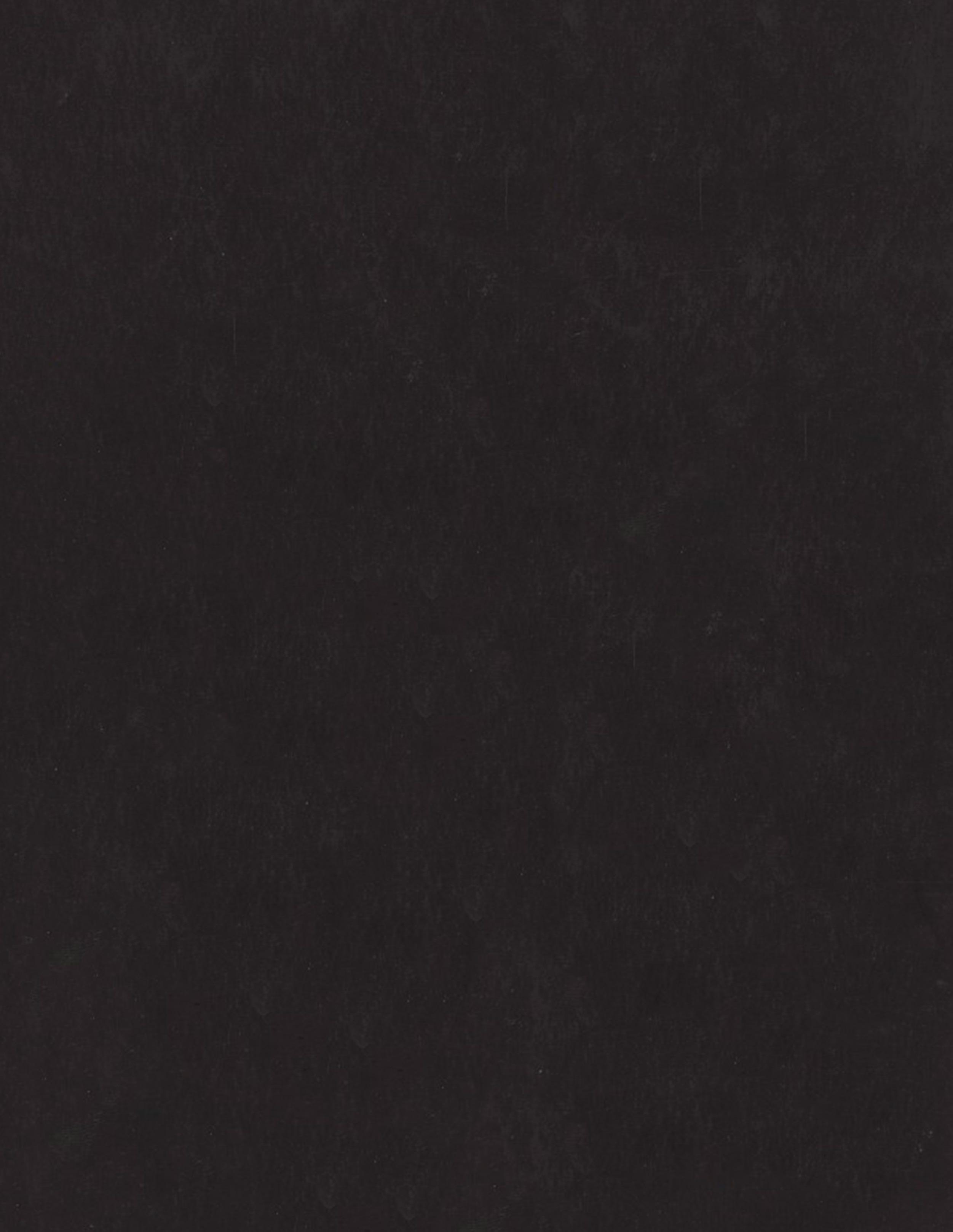


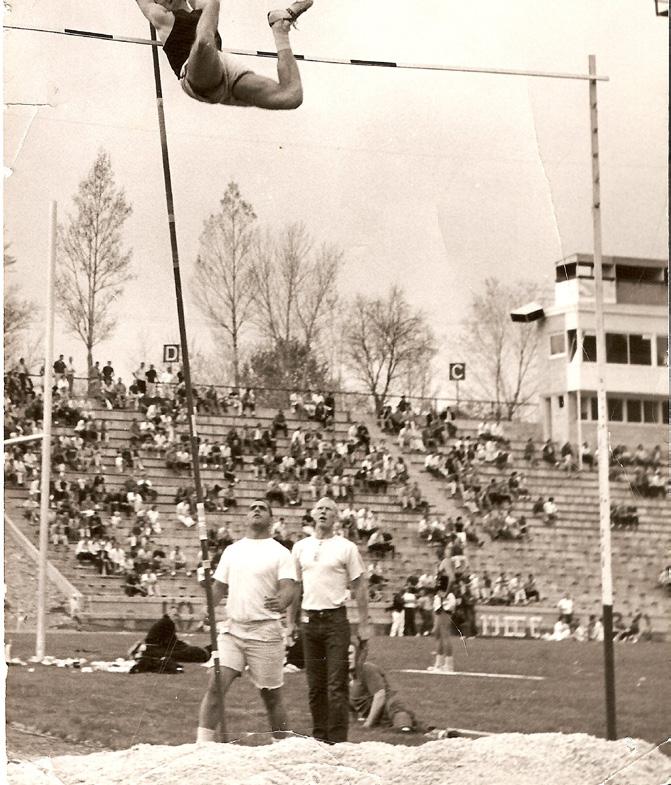



1956: my dad cleared the height of 14’ 2” with his metal pole into a pit of saw dust. He set the pole vault record for Utah State University. But that was not high enough to go to the Olympic trials.
Cornelius Waterman held the world record then of 15’ 7 ¾”
1956: African Americans in Memphis walked to work, part of the bus strike in the early days of the modern-day fight for Civil Rights.
Since 1956 the pits changed from sawdust to foam, from landing feet first to landing on one’s back, and the poles changed from metal to fiberglass.
The change made the technique so different that my dad felt he could not coach the new method.
The world record has gone from 15’7 ¾” to 20’ 3 ¼”. Nearly five feet.
Since 1956 we have gone: from separate but “equal” to Brown vs. Board of Education,
from poll taxes and poll tests to the civil rights and voting rights bill, from Redlining to equal housing,
and from White and Colored: water facets, rest rooms, and restaurants, to no outward signs.
If we are not moving forward we are going backwards.
So, raise the bar Higher and Higher until we cannot imagine going back.
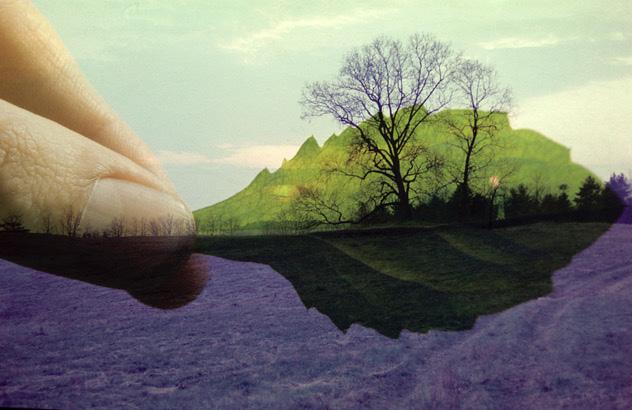
CW: BDSM, sexual themes, killing deer and handling deer carcasses in the analyzed text
Described as a “memoir in verse,” Kayleb Rae Candrilli’s What Runs Over depicts their rural upbringing with an abusive father while navigating gender identity and sense of self. Through a mixed-genre narrative, Candrilli, using available gendered language, creates a trans narrative by breaking down the binary between masculinity and femininity, blurring the lines of a gendered self. Through their use of the poetic form, using imagery both violent and gentle; dominant and submissive; domestic and wild, Candrilli creates space for gender subjectivity, resisting notions of the gender binary.
In our contemporary, metamodernist moment, there seems to be a renewed sense of literary exploration in terms of explaining what our current cultural
and political moment looks like. How does one effectively narrate life in a world that feeds on pessimism, while conveying the endurance of human nature? Language in metamodern literature is conveyed through a complex mix of genre and style. Postmodern literature’s fragmented style and relinquishment of meaning is no longer a fit formula inclusive of metamodern ideas. The oscillation between life’s extremes in which optimism and pessimism coexist is at the crux of metamodernism: there is an in-between state that needs exploring. One could look at metamodernism as breaking down the binaries of the modernist and postmodernist periods. If life isn’t cut-and-dry, then why should the delivery of narrative be either? In our current literary period, there is a newfound complexity of genre like never before. No longer can
a piece of literature be defined as one genre when it encompasses a multitude of classifications. Kayleb Rae Candrilli plays with this complexity in What Runs Over, which is neither memoir nor verse, but both. This combination of genre allows for a fluidity of language and expression of self otherwise missing in one genre or the other. This exploration of literary exposition is by proxy an exploration of the metamodern.
The complexity of genre and the metamodern “in-between” allows the fluidity of language needed to explore trans narratives. The language available to describe gender, even created language inclusive of LGBTQ identities, ultimately falls in the masculine-feminine binary. American writer, activist, and educator Eli Clare states that even terms such as drag queen, stone butch,
and transgender—to name a few—still “places us in relationship to masculine or feminine, between the two, combining the two, moving from one to the other” (Drabinksi 320). In their piece, “Incarnate Possibilities: Female to Male Transgender Narratives and the Making of Self,” Kate Drabinski describes this normative way of presenting gender as transnormative, which “invoke[s] gender normative tropes largely to make sense of lived experiences…telling a radical critique of the normative assumption that gendered realities match only certain bodies” (309). Thus, using gendered language to depict transnormativity simultaneously takes part in and rebels against heteronormative language. Drabinski also argues that this isn’t only true of trans narratives, but autobiographical works as well, in which using language that “preexists us” acts as a critique of the self.
As What Runs Over is both a trans narrative and a memoir, Candrilli’s use of language is subjective and gender-resistant, allowing space to express their unique gender identity. Their use of kink and the dominant-submissive binary as a gender trope reifies heteronormative language, but it also blurs the binary by depicting themselves as dominant and submissive. One of the earliest depictions of kink opens with their first buck kill, in which, “daddy cut / its heart out & it was still / pumping that black blood all over / it was gore sex / the way it throbbed / hard in his hand” (38). Candrilli uses violent, sexual imagery to showcase their father’s dominance over the male deer, in a display of aggressive masculinity. Yet when they have their first sexual encounter with a woman, Candrilli states, “& i said wow / because i had never made someone / bleed quite like that / bleed just to bite / a thank you into my ear” (38). This sexual imagery appears violent in the biting and bleeding, yet the “thank you” of their partner indicates a consensual intimacy and a feeling of pleasure wrapped up in pain. This depiction of dominance
is without toxicity as learned from their father. As the idea of dominance is tied to masculinity as a gender trope, this consensual allowance of dominating and bringing their partner pleasure as a result of pain is breaking free of the assumed toxic masculinity associated with dominance.
While Candrilli depicts their dominant masculinity with the giving of pain, they experience their dominant femininity with the receiving of pain. They allow their first lover to bite their neck, leaving a mark. Candrilli “explained why carnivorous plants are the most beautiful” (60). They include that some South American plants can swallow whole animals: “::rat::bird:: housecat::pussy:: / so i put mine on a platter / offered it up // said chew your food” (61). Just as masculinity can be non-toxic, Candrilli suggests that femininity can be dangerous–both of these ideas subvert traditional gender norms. Their lover may be beautiful, but she is also deadly, and yet Candrilli pairs their own experience with female anatomy with the receiving of pain and pleasure, whereas they were the giver in their masculine depiction. That isn’t to say that they relinquish dominance; they told their lover to feast on them–almost a command. While they effectively break down the binary of dominant-submissive roles, they seem to emphasize the importance of consensual violence leading to pleasure, and by proxy the importance of choice. Their continued exploration of kink seemingly allows them the space to grapple and come to terms with a male-leaning identity, while embracing the idea that the masculine-feminine binary is more of a spectrum. Their previous depictions of dominance and submission, while more fluid than heteronormative ideas of the gendered trope, still lean more masculine-dominant and feminine-submissive. Yet, they seem to come to terms with being both dominant and submissive in their poem depicting their intimate rela-
tions with a partner; when they “talk about sex,” they “speak in switch” (68). They can oscillate between the role of dominant and the role of submissive without negatively impacting their gender identity. They depict male anatomy as feminine in the lines, “the cocks I wrapped / my lips around, stiff as swan / spines rubbed / on my tongue,” using the swan metaphor, an animal known for its beauty and grace, to depict femininity (68). This further breaks down the gender binary while still indicating their male-leaning identity by switching from “they” to “us.” They first state, “when they die, / they die exhausted”, in reference to the swan metaphor (69). However, after stating, “I hunt them / the swans, / stalk-straddle them / into submission”, they reiterate the before-mentioned sentiment as, “when we die, babe, / we die exhausted” (69). Candrilli shifts from excluding themself from the male population to including themselves in it at the end of the poem. They simultaneously indicated their male-leaning identity, while still embracing their feminine characteristics. Thus, Candrilli uses kink in their memoir as a means of breaking down the gender binary, while using preexisting, gendered language to communicate their experience in a way that both embraces and resists gender, subjectively creating space for their own gender identity.
However, it is not only the language they use that forms a transnormative experience, but also the disruption of the typical heteronormative narrative that forms their queer narrative. Cameron Awkward-Rich, in their piece on trans-feminism, discusses sociologist Henry Rubin’s idea of “transgender subjectivities,” in which one should not interpret transmasculine bodies as female-bodied persons as “transsexuals develop subjectivities that are specifically transgendered” (820). Jack Halberstam’s Female Masculinity is also discussed in length, in which Halberstam argues that in adolescence
the “tomboy is allowed to flourish”, but upon transitioning into adulthood, the responsibility of marriage and reproduction narrative doesn’t allow for “queer lives, genders, and futures,” and we must interrupt this narrative for queer lives to continue to flourish in adulthood (Awkward-Rich 834). In their memoir, Candrilli depicts their adolescent “tomboy” narrative, and crafts subjectivity through the duality of the “female body” and “male body” both in association to the self. The subjectivity of feminine and masculine embodiment not only breaks down the binary of heteronormative society, but interrupts the emphasis on reproduction.
Candrilli features the tomboy narrative and duality of gender through depictions of gender performance. They were taught at a young age to be more like their feminine sister, even when they were cast as a “tomboy.” They write: Mom taught me to costume myself, Taught me how to sew on my queen’s skin when I wanted it:
Velvet, Lycra, sequins, leather. She called the stitches things like: Lazy daisy, fish bone, French, fly. But she called me things like Tom Boy when I rolled in mud so thick the pill bugs made maps of my skin–in the dirt caked there.
She called Tori things like: Performer, Princess, and Off In La La Land (36).
In Candrilli’s behavior as a child, there is the narrative of the ‘flourishing tomboy,’ but it is layered under the ‘feminine mask,’ as they are taught how to present feminine like their sister. It is important to note that the first costuming material listed is velvet, as Candrilli goes on to say that “Antlers grow the finest velvet” (36). If antlers are male anatomy, then the grown velvet becomes a costume, as they were taught. If the male anatomy is costumed in femininity, then it becomes a gender performance in which the ‘feminine mask’ is presented. It is then
that Candrilli drives the point home:
Velvet grows on queen’s skin. I shave it and sell it to black market queer because
I am a commodity:
Buck out of season.
Buck in rut.
Cock in cunt.
Antlers are something sexed and I mount them on my wall (37).
Just as the velvet grows on the antler of the male deer, it also grows on Candrilli themself, portraying the gender performance of a femme presenting male. This performance already speaks to the duality of gender, but perhaps a more forward depiction is found in the line, “cock in cunt”, which is subjective of the gendered body. Candrilli is simultaneously breaking down the binary of gender while also feeding into heteronormative depictions of gender; the antlers are mounted on their wall—a display of masculine aggression in the killing, dominance, and showcasing the trophy of said kill. Yet when looking at the poem’s form, there is that break between “I mount them” and “on my wall”, in which readers might read the line as Candrilli mounting the antlers. Such is a masculine depiction of sex, further critiquing the binary of gender and the self, by creating ambiguity in how readers perceive those lines as both mounted on the wall, and being mounted sexually.
Candrilli further depicts the duality of gender in feminizing male anatomy. They write, “Is my body phallic / now?
Violet cock. / It’s spring again. / Always is. Fists / watering flowers / built to spit back” (71). They give themselves the desired male anatomy just before spring, a known symbol of rebirth or transition back to life. It then seems that while this rebirth is new, Candrilli, in stating, “Fists watering flowers built to spit back”, not only blurs the gender binary, but is defending their transition. Additionally, they defend their transition through talk of motherhood,
disrupting the reproductive narrative by stating, “there is nothing political in thinking of what could have been. Abort everything you must” (56). It can be said that this portrayal of abortion is both a release of the female body, in the line, “But still, if I cut my breasts off with a scalpel . . .”, and a removal of the reproductive narrative that Halberstam discussed in their own work. Candrilli speaks to their gender identity growing up as a “tomboy”, their transition, and considering the reproductive narrative of cisgender adulthood, providing a space to speak about it in terms of their own subjective identity.
Just as Halberstam speaks of the reproductive narrative, in their piece “Queer(y)Ing Nature,” Mei Mei Evans discusses the cultural construction of the outdoor space as gendered, and the way it creates an unstable concept of nature provides a reinvention of the self. Evans states, “heterosexual masculinity through acts of dominance and aggression particularly in ‘natural’ spaces,” reflects and affects the way gender is constructed and understood (Evans 27). Catrion Sandilands, an environmental humanities scholar known for queer ecology studies, provides the critique that mutually resisting heterosexuality and eco-normativity brings into question the ‘naturalness’ of each other, which leads to Evans’ theory of LGBTQ representation in nature counteracting the male appropriation of the outdoor space (Evans). It is Candrilli’s use of natural imagery and symbolism that resist heteronormative culture; simultaneously, it is their creation of gender through eco-subjectivity that provides a narrative not of nature as providing a reinvention of the self, but rather a reification of the self.
This creation of gender through eco-subjectivity is implicated in their depictions of fire in its physical form and as a metaphor. Early on in their memoir, Candrilli positioned a poem depicting the duality of fire in which it can be used as a tool for destruction or
for cleansing. In their father’s hands: “Every time a house/ around goes up in flames I wonder / if my daddy lit the match and blew / fire . . .” fire destroys (12). In their mother’s hands: “her arms look, / as if they hold a bundle / of sage and she burns, / she burns the broken / spirits away,” fire cleanses (12). Both in destruction and in cleansing, however, fire is a tool for survival either way, which is a concept that Candrilli learned from their parents as a child. This poem introduces the uses of fire, which are both employed by Candrilli throughout their life. They use fire to destroy in order to survive as depicted in, “I spent my childhood lighting myself on fire…pile of tough skin / call it armored flesh” (19). In destroying themself, they built up a tolerance–a protective layer–to destruction from outside forces. Yet, this poem parallels another later in their memoir in which Candrilli burns holy books and rolls in their ashes, stating, “This is not my normal / narcissism. This is what I look like / when I’m trying to save myself” (75). In burning the holy books, Candrilli is cleansing themself of a tool used to oppress the LGBTQ community. By learning the ways in which the nature of fire can be used to survive, Candrilli shows that it also aided in their search for identity.
While Candrilli uses fire, a tool provided by the use of nature, they also use imagery regarding the living beings found in nature. They depict the process of stuffing a kill with their father in which little respect is shown to the body of the deer. “Daddy says: Unzip the fucker. Skin it fast.”; “Spit on its carcass as it burns. You won.”; “Hang the fucker from the banister” (15-16). This violent imagery shows the destructive nature of man, in which the gentle nature of the deer is shown in the poem directly preceding it in which, “deer scattered. / The dry-warm patches looked stark and colorless / against soaked ground. Where they had lain, I laid” (17). Candrilli portrays themself as the deer,
laying where the deer laid, and seems to be stating that nature was a safe space for them as a child. They nestled themself in the warmth of the forest, isolated from the destructive behavior of their father. This provides a deep sense of connection and trust to their natural surroundings, which is a sentiment scattered throughout their memoir. Not only does nature provide Candrilli with a sense of connection and a place to be vulnerable, but it also reifies their sense of identity. They provide the information that male garter snakes “gender switch / they hide from hawks this way [. . .] i want to be a snake / i want to be born again” (21). In nature there is transition and fluidity, providing a natural description of Candrilli’s desired sense of self. The gender switching of the snake provides the idea that gender fluidity is natural, which provides a sense of relief in regards to self identity. Through eco-normativity, the ‘natural’ is revealed which is inclusive of queer identities. This is resisting heteronormative male dominance and aggression in relation to human versus nature.
In Candrilli’s “memoir in verse,” their use of pre-existing language creates transnormativity, in which the binary between masculinity and femininity blurs the idea of the gendered self. Through the poetic form, their use of gendered language both resists and embraces gender, creating subjectivity and allowing for an authentic and self-critical trans narrative. The exploration of the natural world in relation to the self provides a reification of gender identity that is resistant towards heteronormativity, in which transition and fluidity are ‘natural’. In our contemporary moment, the fluidity of language and exploration of the “in-between” allows for a complex presentation of genre and subjectivity. By providing their memoir in poetic form, Candrilli effectively told their narrative in such a way that was inclusive of their life and gender experience.
Awkward-Rich, Cameron. “Trans, Feminism: Or, Reading like a Depressed Transsexual.” Signs, vol. 42, no. 4, 2017, pp. 819–41. JSTOR, https://www.jstor.org/ stable/26552956. Accessed 13 Apr. 2023.
Candrilli, Kayleb Rae. What Runs Over. YesYes Books, 2017.
Drabinski, Kate. “‘Incarnate Possibilities: Female to Male Transgender Narratives and the Making of Self.’” Journal of Narrative Theory, vol. 44, no. 2, 2014, pp. 304–29. JSTOR, http://www.jstor.org/ stable/24484752. Accessed 17 Apr. 2023.
Evans, Mei Mei. “Queer(y)Ing ‘Nature.’” Interdisciplinary Literary Studies, vol. 7, no. 1, 2005, pp. 27–35. JSTOR, http://www. jstor.org/stable/41209927. Accessed 13 Apr. 2023.









The Association of Writers and Writing Programs Conference took place at the Kansas City Convention Center this year, where some of our members had the opportunity to attend. The AWP Conference and Bookfair is the annual conference for writers, editors, writing programs, educators, and publishing groups. It includes a variety of panels, readings, and a book fair that all highlight work being done in the writing and publishing fields. This is a space for creatives to come together and collaborate, network, reunite, and share ideas with fellow writers. It is a place where learning and literary discourse is cherished and celebrated. We loved exploring this opportunity for the first time this year and cannot wait to attend in the future! After returning from the conference, three of our attendees sat down to reflect on some of the panels, content, and insight they received:









While over the course of the three day panel we attended well into the double digits, in my personal reflections since I keep coming back to the last I attended on Friday, Writing Under the Influence: Accessing the Unknown through Divination. Divination isn’t a practice I’m considerably well versed in– my first thought conjures unfailingly the wideeyed incantations of Professor Trelawney in Harry Potter. By definition, the practice relies on seeking to uncover and understand the unknown by ‘supernatural’ means. As one panelist, Kristen E.
Nelson noted, it can additionally create a new avenue to bridge our understanding with the known, specifically in writing.
A literary PhD student at the University of California Santa Cruz and author of forthcoming novel In The Time Away, Nelson presented on the 14th century witch trials in Italy, a time in history far before the Salem witch trials that held many of the same tragic ends to women’s stories. In her research of her own Italian background, along with archival searches of the trials, Nelson found that an ancestor of her own shared a last
name with one of the accused, and from there, expounded on the storytelling capabilities of such a connection.
What interested me wasn’t that Nelson has substantial proof to claim the accused as a direct relation. In fact, they noted that they couldn’t do anything of the sort. Instead, she described the use of Divination as a tool in order to construct a narrative where one cannot or does not exist– a way to create “knowing” where knowing cannot be attained. While Nelson knows little of her own history, she relies on the known (a physical
record of the accused woman of the same family name) as a bridge to the unknown– the life of her ancestor that was unfolding at the same time, but undocumented in our broader historical archives. In parsing the narratives, and imagining what could have been through the framework of what has been found to be concrete,



Divination takes on a new form especially pertinent to craft: creating an imaginative space that lies within the boundaries of a setting, conflict, and character, but endless opportunity lying in the murky shroud of what has been lost to time. As a practice that seems– at first glance– to exist outside of conventional



storytelling methods, Divination proves to be a useful tool in broadening the scope of what we know (or don’t know) to be true–not only about ourselves, but our very technique as members of the literary community.



Containers are kind of cool. They have the ability to not only secure items, but also provide a medium for items to move across space and time. I keep on coming back to this discussion of containers and containment from the AWP panel “Mango Is Not My Only Metaphor: South Asian Writers on Fiction in the 2020s” because I feel as though this was the first real reckoning I have had with my personal containment in various capacities.
Sarah Thankam Mathews, author of the critically acclaimed novel All This Could Be Different, describes a container as a shape that allows her story to progress. In a transition from “I” at the beginning of the book to “We” at the end, we find Sarah’s protagonist Sneha finding a sense of place within a commune — containment for Sneha meant residing alongside people who cared for her in her three dimensions. The very engine for this story is heavily reliant on the community development for Sneha.
However, containment in a broader sense, as fellow panelists such as Eshani Surya note, reinstates the necessity to fit in some sort of box of expectations. In a literary world where the vast majority of canon literature refrains from centering the lives of people of color, the South Asian authors at this panel described ways in which they have chosen to break away from this containment. Speculative fiction as a genre was noted as an avenue for South Asian authors to introduce larger themes of wellness and belonging without being hamstrung by the traditional immigrant narrative that historically accompanied South Asian stories.
In retrospectively thinking about this panel, containment helped set the foundation for the latter half of this panel surrounding the competition that exists within the South Asian literary community. Oftentimes the need to stand out, and be the “best of the best” relative to other South Asian kids your age, places you in a container
in of itself, that is — a container of competition and toxicity. The authors on the panel discussed their experience of witnessing first hand the lack of support administered by those in the community when a South Asian author wins some kind of award or achieves some sort of accolade. In hearing this, I could not help but to think about the times I have been noted as a “diversity pick” for positions in leadership, surprisingly by folks who look like me.
Containment is often viewed as a crutch for tradition; for canonical literature to remain entrapped in same age-old cycles. Yet, containment also provides a unit for communities to cultivate and flourish. Learning to leverage this unique dichotomy will finally allow us to diverge from this colonial mindset that asserts that there can only be one “winner”. It is high time that we do away with the idea that there is only a certain amount of room at the table, and instead turn the table on its head.









Dreaming, as understood by one definition, is a form of free and unconstrained thought. Criticism, especially in literature, is commonly thought of as the opposite, and understandably so. That is, it imposes rules and regulations, and points out right and wrong, good and bad. But that may not be entirely true, as uncovered through two thoughtprovoking AWP panels I had the opportunity to attend, “The Criticism of Translated Books: A Words Without Borders Conversation”, and “Where Is Literary Criticism Headed?”. Both panels examine the increasing necessity of literary criticism, and conversely, expand the umbrella of what can, should, and will fall into that category.
“The Criticism of Translated Books: A Words Without Borders Conversation” examined the complex notion of translation within literature, and described an ever-present need for criticism of translated works. Lauren Marris, a panelist, worded the act of translation as “bending both languages”, a process that is a two-mind activity. She described it as “granular messiness,” a familiarity and connection to the text, like getting to know a friend. The comfort level of a translator increases with time spent with the book. This culminates to the view of the translation being a “work of art on its own,” a meshing of
thoughts, of two separate minds. A common question in translation criticism is, “How good is the translation?” Laura, through her experience of translating French Literature, believes that this is not exactly the right question. She rather thinks it is inapplicable to a good book, as a result of a translation. If there is no way for a reader to know the original text, they must look to multiple translations of that text.
This still begs the question, why are critiques of translated works so important? Panelist Justin Rosier brings in important details to convey this necessity, specifically on the topic of cultural criticism. He places a special emphasis on humility within translation criticism. Because the language in translations spans across countries, cultures, and continents, a critical reader should not compare individual experiences through this gap. But, “universal experience is revealed across cultures through translations.” The idea of universal experience is explored further in “Where Is Literary Criticism Headed?”.
This panel, comprised of chairs and critics of the National Book Critics Circle, expanded upon the boundaries in which we consider what is and isn’t literary criticism, and the absolute necessity of expanding the scope. The panel
began by answering the question “what is literary criticism?”. Panelist Margo Jefferson finds the genre application to lack specificity and is not quite a biography, memoir, or nonfiction. Literary criticism is, however, expanding ever exponentially outward. A quote of hers that stuck out to me was: “Keep your thoughts supple, and your feelings bold. Or perhaps keep your feelings supple, and your thoughts bold.” This is related to the common historical thread of oppression in black communities: “If you can’t be free, be a prodigy.” She spoke on vulnerability in various genres, such as poetry or personal essays, and that “I need speculation, instead of argument.”
On the question of how one can create space to write honestly and fearlessly, Jefferson offers, “Not writing fearlessly–writing despite the fear”. This quote in particular struck me as what criticism, and specifically literary criticism, could look like. Under this definition, there is no specific form or format, but still is not pure free thought. It bridges the gap, ties our ideas of speculating, wishing, dreaming, into the concrete of our world, our struggles, and our desire for bettering ourselves and each other. “Criticism is a genre of literature,” as said by panelist Walton Muyumba, “that parallels the music of jazz.”


I was captivated by this line in your prompt; “...we live in a world of constructs. To break away from those constructs, we dream.” It conjured for me the idea of fantasies and whims we follow as a means of coping, and all the idiosyncratic, borderline absurd behaviors we exhibit in order to keep ourselves hoping in the face of uncertainty. This essay covers one way I have clung to my hopes and dreams in a very literal, physical way, and the serendipitous ways I learned to let go, trusting they would always be with me.
It is with some embarrassment that I begin this story, which has, at its center, a nutcracker. I implore your patience, and assure you that if I devised this story from imagination, I’d have chosen a subtler protagonist. But alas, the tale is plucked from life, that arbiter of saccharine platitudes.
Before I tell you the story of the nutcracker, I must tell you the story of the prayer boxes, and the green pencils, and the tokens, and the stones. As my childhood bedroom will tell you, I’ve collected many talismans over the years. I kept them faithfully untouched, resting on altars. On my bedside table there was a thrifted statue of Cupid draped in all my pearl necklaces. At its feet were rose quartz stones and a pink metal rose, which had broken off of a wreath. There was red candle wax hardened to the wood. I was too superstitious to scrape it away. There was an empty bottle of perfume with a pink ribbon tied round the neck and seashells given to me
by someone I hadn’t spoken to in years. There was a tea tin which had long since held a tea bag. Dust lay over it all like flour sifted over a cake.
This was just one of the displays I curated for my bedroom museum.
All these strange offerings created an unsettling scene. The room was cluttered, like a pretty hoarder’s nest. It was so very stagnant because I felt as if I would be struck down by lightning if I rearranged the place.
My room was the hideaway of a person who has lived her entire life holding her breath, expecting a miracle. I guess I figured everyone gets one—one wonderful and serendipitous something that comes at the perfect time and sets you on your proper course in life. If you missed it, there was no second chance. Further, I thought that by virtue of it being a miracle, it had to happen to you. Believing myself to be at the mercy of fortune’s lawless limbs, I became
quite superstitious. When you live your life not only expecting a miracle, but completely and totally reliant on one, you collect lucky pennies. You say your prayers. You invite the spirit of prosperity in for tea with antique offerings. You walk through this ambivalent world with shiny pendants glaring from your neck.
I was never certain that any of these arbitrary objects were attracting miracles, or even repelling disasters. Rather, I harbored them out of an abundance of caution. Once I deemed something to be good luck, it seemed horrifically reckless to toss it aside. I didn’t even have a conscious way of controlling what it was that I deemed to be good luck. I could pick through a six-story antique shop and find nothing of importance, then be stopped dead in my tracks by a peculiar pebble beside the welcome mat on the way out. Such a pebble now rests in an oyster shell atop my bookshelf.
This is how I found myself at eighteen, packing a box full of ghosts—all empty, lifeless things far past their prime. Yet I packed the box, the designated box, all the same. It was the first time I realized how very cumbersome it is to hold on for dear life.
I moved to college, expanding my treasure trove to a second location: a shoebox-sized single dorm in Minneapolis. Covering the gray walls in my glorified trash, I made a lovely slice of home for myself, and soared through the first semester on the fumes of my relentless, habitual hoping.
Three months later, home for winter break, I went with my mom to do some last minute Christmas shopping. We were in the market for a nutcracker. She had made a tradition of buying one for my older brother every year, a tradition that we enjoy far more than he does at this point. We were growing defeated—we seemed to own every kind of nutcracker one could have. A cowboy, a cyclist, a three-foot-tall drummer boy, a candle holder trumpeter. A well-rounded society of eclectics, artists, and scholars thrived in our basement’s old nutcracker bin. We thought it would be best to just get him sugar plum fairy socks and call it a day.
Until, on the backroom shelf of a secondhand store, we found Antoine Featherfluffer. My first thought was how very beautiful he was, and my
second thought was the realization that his beauty came from some sense of infinite wisdom coursing through his carvings. Perhaps it was the wood of Antoine’s face that made him so dazzling at first glance—not sanded, glossed, and painted rosy, but dappled with a pattern of bumps and ridges that aged him like fine wine. His bushy, white eyebrows and mustache were not painted on, but beautifully carved, almost resembling water hickory leaves (if they were much more durable). A gleaming, gold wire was wound in a whimsical route around his eyes, creating glasses, and his eyes themselves were blue and shining with the reflection of a half-moon. He wore a white and gold robe, embroidered with thick fur the color of pearls, and a matching hat donning a sprig of spring-pink berries. He carried a burlap sack of holly. That which was delicate and that which was eternal met their perfect harmony in Antoine. He was weathered, and the lovelier for it.
Mom and I were both wholly convinced he possessed magical powers, as we stood delighted by his ageless beauty, marred only (more truthfully, enhanced) by a bright red “$6” sticker at his feet.
Like a child with a new teddy bear, I held Antoine in my lap the whole ride home, and didn’t let him out of my sight until he was safely situated in the finest perch our house had to offer, where he surveyed his many subordinate nutcrackers and was doted upon by all.
I was no exception. While eating midnight snacks and reveling in the silence of winter evenings, I began to talk to him. I told him all my secrets, my wonderings, and my dreams. I told him about the miracle I was waiting for, and the many forms I thought it could take.
Which reminded me…
“Oh, Antoine!” I thought, or likely said. “What other good luck charm could there be than Antoine? He alone could bring my miracle, for he alone could be it!”
I resolved to bring Antoine back to Minneapolis with me, to stand proudly all year long, spared from the storage bins back home. Never again would I hoard pebbles or scratch paper notes. He’s all I would ever need. With his bag of holly and his eyes forever fixed on the moon, he would demand from
her lunar majesty my miracle. At long last.
Alas, a glass of ice water was splashed in my face with one simple thought: “But surely, he’d break.”
I’m sure all that my better judgment meant by that comment was that he’d lose an arm in transit, or that I’d knock him off the counter while hanging photographs and he’d lose his golden spectacles. But it was a deeper sadness that I felt ringing through me just then, deeper than any accidental fracture, let alone a hypothetical one, could warrant. I knew, then, that if he were to break, it wouldn’t be the bumpy roads, or even carelessness, to blame. He would break because he wasn’t meant to be perched in a shoebox-sized single dorm year-round in Minneapolis. He would break because I would have been holding onto him too tight.
The truth is, I am missing countless chunks of amethyst, and even more necklaces, and even whole people! Even whole afternoons! They cracked, faded, fled under the pressure of me and my hopes–under the pressure of all my conviction to keep them forever.
I could not let Antoine go to this graveyard of weary idols. As I realized that I could spare him from such a fate, I was immediately relieved. Relieved that I would not take poor Antoine hostage. Relieved that I would not bear the burden I never knew existed; the burden of holding onto a $6 nutcracker out of necessity. I decided if he was really lucky, he could be lucky no matter if he came with me or not. I decided if he was really lucky, all his luck would surely wear off if I treated every moment like one that required a miracle. I decided to pick my battles, to pick my miracles.
I was so relieved and exhausted with this revelation that I promptly headed up to bed. Each time I enter my room, I pretend I am a stranger stumbling upon it for the first time. I try to interpret all the assembled artifacts, like some kind of art critic, analyzing the posters and the book titles and, of course, the treasures. But that night, I only noticed a gaping absence.
A week before I left for college, my pièce de résistance, my glorious Cupid statue, came crashing to the ground as I moved my bedside table over a few feet. Why I didn’t take the time to simply move
him to safety, I couldn’t tell you. I guess I thought there were too many items on the damn thing to bother messing with it. But none of those items fell. Not the perfume bottle or the tea tin, or even those haunting seashells. Cupid himself, in all his glory, shot his last arrow, and came careening to the ground, landing on his wings.
As he laid in porcelain pieces, I wept, honest to God. I thought about salvaging him. I berated myself for my carelessness.. Ultimately, I consoled myself by thinking perhaps he left when he had to. Perhaps he had fulfilled his duty, to watch over me as I came in and out of this bedroom every night, and in and out of sanity, writing frenzied prayers in notebooks. Perhaps he existed to dizzy me with love and dreaming, so that I could find solid ground within it. And perhaps I finally had.
“Have I?” I asked myself, on that winter night of discovery, staring at my empty bedside table. I didn’t know.
I knew, however, that at that particular moment, on that particular evening, I felt more hopeful than I ever had. My many talismans had been comforting, not because they gave me something, but simply because they reminded me of something. That evening should have been bleak, as I surveyed my room, and for the first time saw the hulls of things I killed with that old relentless, habitual hoping. But all I thought was that it’s miraculous, to possess such a persistent hope.
Neither Antoine nor Cupid was my miracle. My true, earnest belief that this wooden doll and that porcelain angel were going to save my life was my miracle.
My very first item of divine importance, which I vowed to cherish forever, was a prayer box given to me when I was nine. On the lid is the Serenity Prayer, which I memorized at the time, though I had no clue what it meant, until, nine years later, a nutcracker told me.
“Grant me the serenity to accept the things I cannot change,
The courage to change the things I can,
And the wisdom to know the difference.”
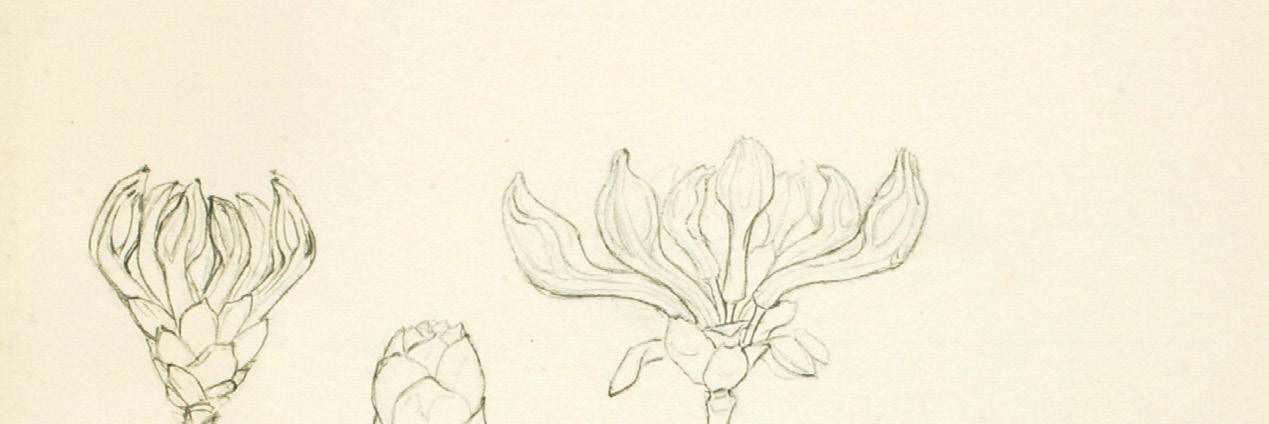
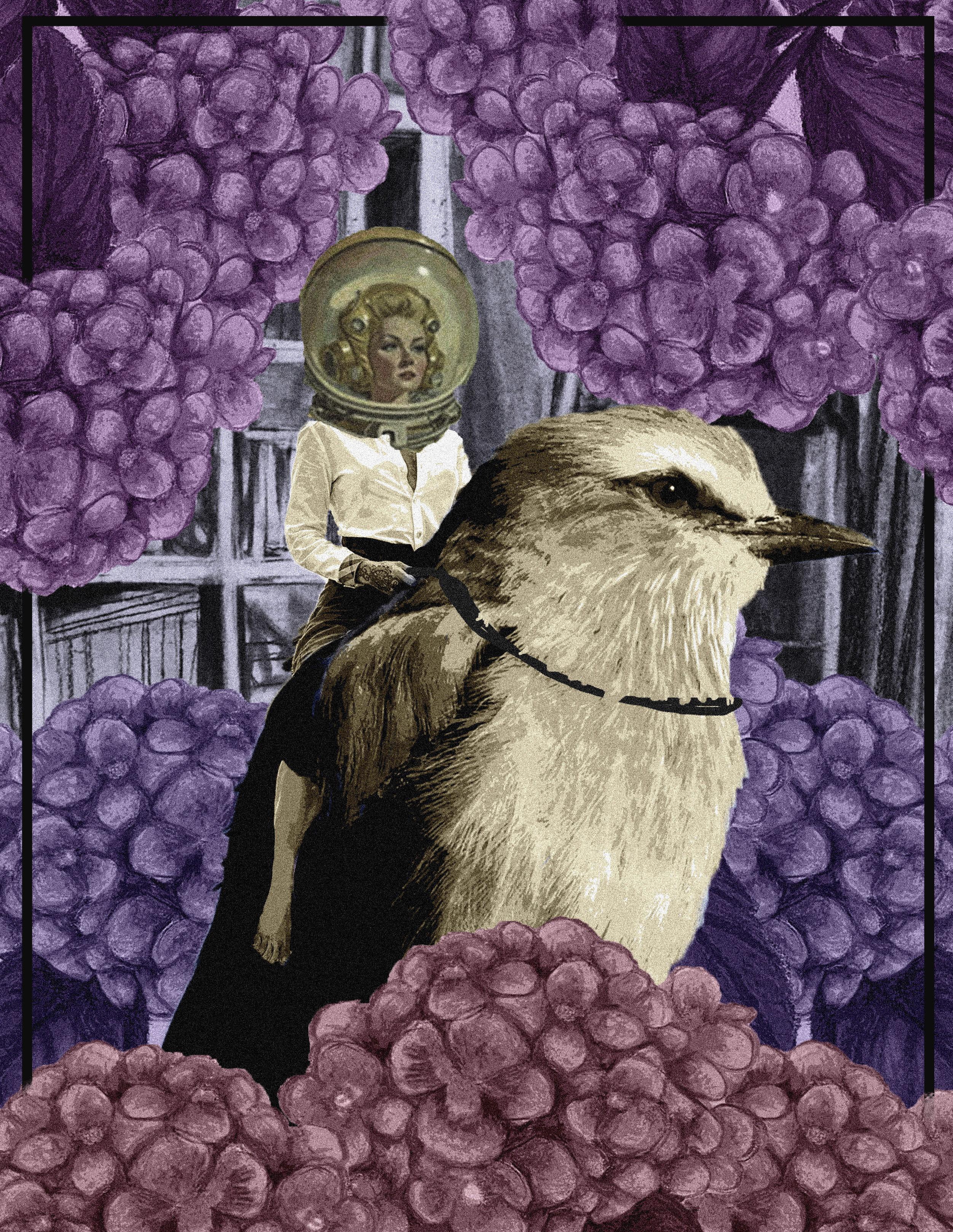
I lay in the bath with the water still running though I curl my legs, too long I know; I pull my head below the surface; I cry the cold away from the breeze of that window still open with the curtains drawn back, now I hear the burr of the tap thrumming alongside this clash and claw
I hear outside that door, locked and shut, I pray they’ll stop though i’ve never been good at saying what’s on my mind: a monster, I relinquish I’m done please just go away; the water runs cold now, I throw myself up toward the sky I fly and I think I hear God, hello, I say with no question mark, but i’m wrong, hello are you ok, no i’m not, can’t you see that i’m falling I scream with my lips sewn shut up, I put back the dove that hit my head, I say yes, I’m fine I think back to what she said: Selfish, why won’t you talk to me,
where is that boy who used to laugh —here your jokes aren’t funny no more —I’m drifting; I pull my eyes even further below your gaze under the water you pry, why won’t you look at me, you should be ashamed! I do so much: she says in her toxication, I remember I think when you used to hold my hand as you drove and I in back, your way of saying sorry, but I can’t, I can’t accept your apologies, half-witted replies, I’m still lost at sea searching for a hand to pull me out from these silly thoughts; I can’t hold these waves—no longer, can’t you understand? The tub’s full now, it’s spilling over from the edges I hear the daisies, wind rushing over blood, but they’ve all withered now, lost so, so lost I am; I’ve tried to pull the faucet stuck in position; the battle is finished, I’m done, I’ve lost this war now, I’m weak like how you used to call me; sorry i’m not your golden boy, but why do I feel so heavy?
I sink below even deeper,
I’m done trying for breath, just take me; the water’s still running; I hear your banging on the door, but your voice, in pain, echoes silently up the nape of my neck— now a Mother you are; the water pools at your feet, the ones you now use to kick down the door, your body, red and awake, finally breaks the door—now in pieces, like my body, your wilting bud, but—you pull at my chest interlock our fingers, and roar, your violet dripping off you like pools of liquor; you cry out: Are you there? but you hear no reply, only, the soft breeze from the window; you shut off the faucet with such ease, that you forgot what you were doing; you look out the window, it’s the beginning of spring and the redbuds have started to form, how beautiful you know; the floor’s still wet, but you don’t care, for you’ll know soon enough, that they’ll all fall off their branches. You finally shut the window and hug at my body, hoping that your warmth will bring me back; it won’t, but you hold me tight as we lay stranded together, interlocking our fingers.
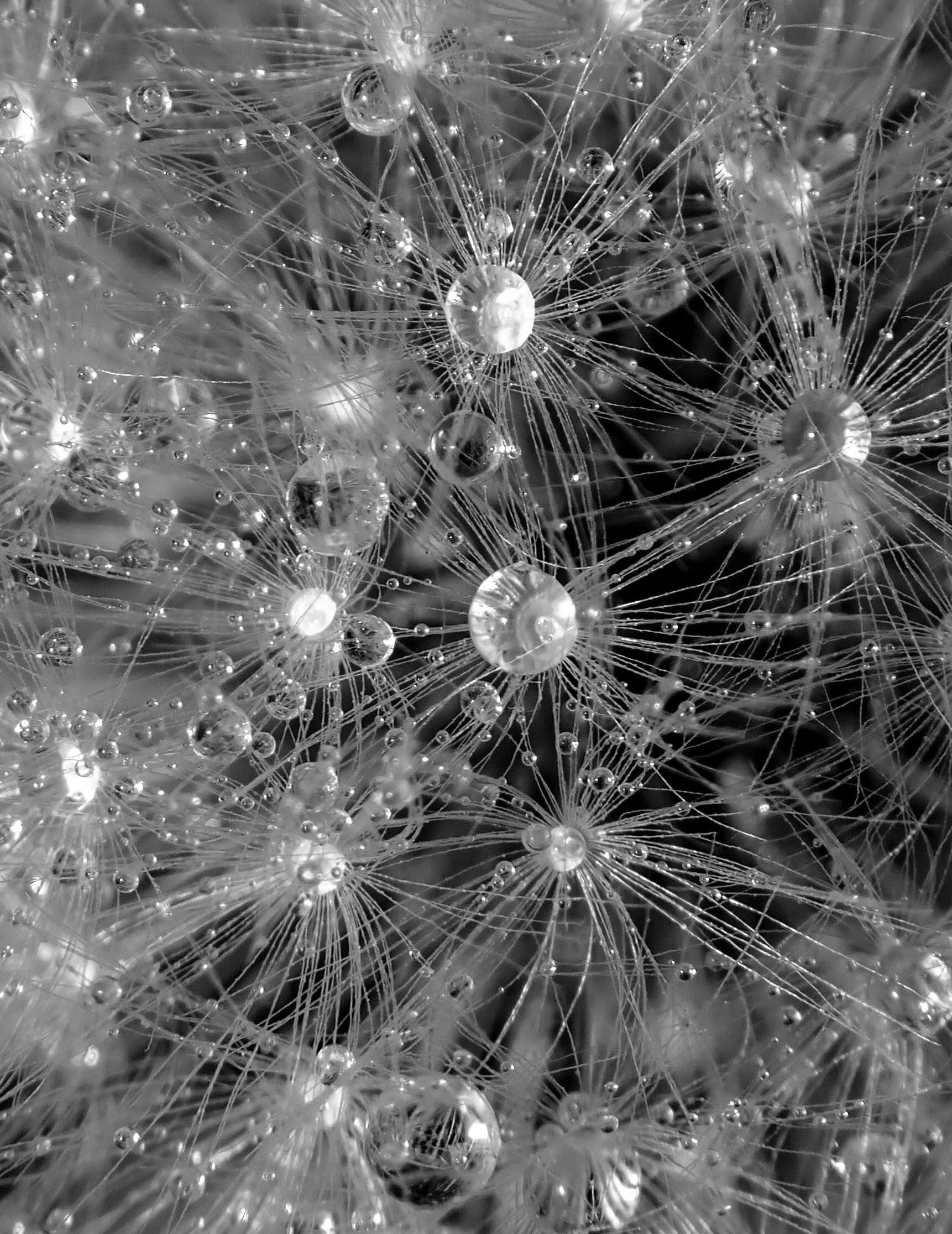
In December of 2021, I began working on the foundations of a collaborative research project titled “An Ecological Approach to Abolition: A Holistic Analysis of Discrimination Systems” alongside peer Anna Nelson and mentor Professor Ingrid Diran. I spent time studying the history of the carceral state and its pervasive, punitive nature. Our project aimed to apply systems theory to the institutions of healthcare, housing, education, labor, credit markets, and the criminal justice system. Ultimately, it was work rooted in the argument that “abolition” as a term is not limited to eradicating the
prison industrial complex, but dismantling all that is carceral: punitive practices in every aspect of the status quo, entrapment as a feature of capitalist living, and combatting harm in its plethora of forms.
…
Abit more on the project from our abstract: From its emergence in the 18th century as a moral stance against slavery to contemporary arguments about the prison industrial complex, abolitionist discourse has rightfully been organized around the unjust institution to be removed, replaced, and transformed. For this very reason, such discourse
also tends to understate or assume certain links that bind the carceral system to other social systems. This current research project joins recent scholarly efforts to reframe the project of abolition in relation to other systems that are inevitably warped by the carceral state but not considered directly associated with it. By adopting a holistic, ecological perspective on the social effects of the carceral system, this project will examine policing as a symptom rather than a cause of a larger social dilemma while also identifying abolitionist stakeholders in every community. We
assume an “ecological” stance towards the carceral state as a whole in order to identify existing and potential abolitionist practices in a broader range of social sectors.
…
It’s been over three years of engaging in this study. Since then, we have moved from theory to praxis; transitioned from talking about abolition toward designing an abolitionist future and expanding our team of three to a collective of scholars, students, and activists. This work has resulted in this publication, the Madison Journal of Literary Criticism, an
abolitionist study group and international arts journal. We have focused our engagement in the social justice ecosystem to revolve around distilling a narrative, amplifying forgotten stories, and promoting arts-based education—ultimately, believing creativity is the prerequisite for abolitionist thinking.
punishment? What’s your alternative? Is this really feasible? What does an abolitionist world look like? Do you have a “blueprint” of this sort of future?
More often than not, these questions are rooted in genuine inquiry and interest. Still, as conversations progress, I usually find myself backed
and the process itself. Essentially, I think jumping to extremes and “what if” scenarios (while valid questions) are the wrong questions to be asking, at least initially. Furthermore, if these questions, this uncertainty, is used as an argument against abolition, I think they are a bit unfair. While these questions should not be discarded,
“‘[A]bolition’ as a term is not limited to eradicating the prison industrial complex, but dismantling all that is carceral: punitive practices in every aspect of the status quo, entrapment as a feature of capitalist living, and combatting harm in its plethora of forms.”
I have personally come to define abolition as “asking why and dreaming of more.” Meaning that abolition, as a process, is the methodology of questioning why the carceral status quo is established in the manner it is (constantly being curious, poking the bear) and then responding to this with imaginative new thinking (radical care, revolutionary interventions).
With all that being said, I’m not about to talk about this project or our findings. (Although all that information is published under the site name “Ecological Abolition Education Initiative.”) Rather, I would like to address a constant concern I get from engaging in this type of work. Namely, the series of questions I have gotten over the last three and half years, such as: Do you really want to get rid of all prisons? What about rapists and murders? You think they should just walk free? Don’t some acts deserve
into a corner when trying to answer them. Other times, the questions serve as a challenge. They’re stumpers meant to humble the impractical, bleedingheart, liberal college student who “takes one class and turns into a social justice warrior or a socialist.”
If I have learned anything in the course of this study it’s that abolition is closer to a process of social change rather than a product or result of social change. An abolitionist world is not just an end goal or dream, but the active process of building towards that dream. Abolition is both a journey and a destination, and all the aforementioned questions seem to be pointed at the destination, not at the process it takes to get there. The uncertainty about the destination is used as rhetoric to invalidate the necessity of the journey
figure out the seating chart, arrange catering, adjust catering for dietary restrictions of a guest, pick a theme, find vendors, book vendors, decide on a live band or a DJ, buy a dress or tuxedo, assign bridal and bachelorette parties, inevitably modify your budget, consider eloping, have at least one blowout argument with your partner, find flowers, plan the reception, find the proper religious officiant if that’s a concern, decide on a first dance song…
they are fundamentally misrepresenting abolition, and, as such, can not serve as valid arguments against it.
Still, I don’t want to deflect from these concerns. I would like to address these questions while arguing that abolition as a destination is not yet clearly defined—and that’s okay.
Part 1: Do you really want to get rid of all prisons? What about rapists and murderers?
Allow me to respond by way of an extended metaphor (bear with me):
Congratulations! You’re engaged to the love of your life. Now, you’ve got a wedding to plan! What’s your first step?
Well first, you should probably pick a venue… You should also set a budget, generate a guest list, pick a date, decide the color of invitations,
A quick Google search will tell you that an average wedding takes about 12–18 months to plan. Tons of time, care, and effort goes into putting together that perfect day. That all being said, any wedding planner will tell you that despite all the precautions, there is bound to be some semblance of disaster the day of: a drunk relative, a wardrobe malfunction, or (in the worst-case scenario) extreme weather.
Consider, you find out, right now, that in 12–18 months, there is going to be a tornado that will destroy your wedding. Now, do you use this as a reason not to get married?
That sounds like a silly question, but consider it for a second. Does it make sense to use a prospective worst-case scenario to shut down the prospect of having a wedding with someone you love?
It’s impossible to plan anything if contingencies are used to negate the beginning of the planning process. If you love somebody and believe in
the institution of marriage, then it still seems worth it to get married and to have that wedding. In terms of weather, you’ll deal with that when you get there. Even the best of weather apps cannot give you the forecast 18 months in advance. Rather, as you get closer to the day, you can adjust your plan for weather, have a backup plan, and make changes. The point is: shutting down the prospect of even putting together a wedding because of the possibility of a tornado seems strange.
Now, I am not at all trying to diminish the severity and complexity of a topic such as abolition and the harms mentioned in the precedent questions to something along the likes of party planning. However, if abolition as a destination (the day of the wedding) has some worstcase scenario possibilities, I believe abolition (getting married), as a process, is still worth engaging with.
In viewing abolition holistically and ecologically, abolition is all about eradicating the conditions that cause harm, cause “crime.” In eliminating homelessness and hunger, providing adequate education for all, decriminalizing minor offenses, and addressing inequities contingent on race, gender, and class stratification, there will be less of a need for a prison industrial complex. An abolitionist world simply doesn’t need incarceration as a mechanism to address harm. Like a perfect wedding day, an abolitionist world is a dream worth working
toward. It’s not asking “what happens without prisons?” but imagining and creating a world where we do not imagine caging as an adequate response to harm and instead plan for a world
exact, “day of” picture of what that looks like or how every aspect of it would work. In viewing abolition as a process rather than a product, addressing harm and asking questions in
as it exists today and the harms of environmental degradation plunder, class stratification, a reliance on racial hierarchy, and more—were all myopic by nature, looking at short-
“It’s not asking ‘what happens without prisons?’ but imagining and creating a world where we do not imagine caging as an adequate response to harm and instead plan for a world organized to minimize harm.”
organized to minimize harm. An abolitionist future cannot happen overnight. Combatting the carceral needs to happen immediately, but it is not a quick battle. Much like planning a wedding, it takes time to move from idea to action. Furthermore, the process itself should mirror its hoped-for result: planning a wedding can, at best, be done with the same love and care that the wedding itself is designed to celebrate. And as concerns come up while planning, while building, while changing—if harms like murder or assault still persist—we can deal with them as they arise and in ways that are consistent with an abolitionist horizon
Abolition is a process; it requires studying harm, the conditions that illicit harm, and the institutions that uphold harm. Then, it requires dismantling those systems, addressing those harms, and establishing something new.
Much like celebrating a relationship with someone you love deeply, I like to believe that the reasons for fighting for an abolitionist world are important enough to work towards despite not having an
an order that makes sense with the planning process is more productive than shutting down an idea, a dream, and a commitment over the fact that extreme outcomes do sometimes happen.
You need to pick a wedding venue, a date before you consider how to address a tornado.
The status quo, life as is, is not static and was never a well-thought-out plan. Rather, the carceral status quo is a complex mechanism of practices, perspectives, and institutions that are constantly reinforcing themselves. The carceral state is conducted by the interests of the private sector, maintained by carceral dimensions and practices, and surveilled and enforced by the criminal justice system.
Colonial plunder, capitalism, and industrialization—all the processes that have resulted in the status quo
term, individual, gain over long-term future/ historical effects. The world as it is was never planned out to begin with. Therefore, working to change its structure is all about addressing its failings, envisioning alternatives,and planning for them. If the status quo is a result of indifference, of short term thinking, then planning for alternatives is radical both in its opposition to the status quo and in opposition to the process by which the status quo establishes itself.
For example, an abolitionist world to me is one where healthcare is universal. A world without state violence.
A world where communities matter more than putting up walls and installing security systems. A world without a reliance on policing. A world where privilege is addressed and racism is eradicated.
A world where diversity of intersectional identities is celebrated. A world with adequate mental health and addiction support.
A world without a 9-to-5 work day. A world without food insecurity. A world with restorative justice and community healing. A world with sustainable agriculture.
To me, an abolitionist world is daring to dream
of more than what is, and working collaboratively toward realizing it. The mechanisms of change, of revolution, are debated amongst abolitionists and activists—but the outcome of a world “that’s more” is something spoken of at every protest, march, and manifesto.
The status quo is not as static or exhaustive as one might initially think. Rather, a dynamic and interlocking series of practices upholds the carceral state (e.g. from inadequate affordable housing to private healthcare to glamorizing violence in media to eradicating arts education and more.).
Therefore, change or revolution is really not as radical as it seems because the status quo we are up against is not as solid or timeless as it presents itself. In engaging in a dynamic system, changing it bit by bit, an abolitionist world isn’t
or scientific proposal to achieve a global zero waste, pollution-free world. Rather, there are initiatives and efforts looking into causes and symptoms. As an abolitionist organizer, the planning that can be done is putting activists in various systems in connection with one another—unifying movements and illuminating overlapping goals.
Let’s start basic: there’s more than one way to be an abolitionist.
To engage in abolitionist practice, recognizing your own identity, experience, and privilege in the activist space is important to situate yourself. For example, as
do write about them, I do study the history of social movements they cover, and I do listen. Abolitionist engagement is all about learning and getting involved. However, learning what you don’t know allows you to educate yourself and access certain spaces with an open perspective. Reading constantly: that’s abolition. Talking to people: that’s abolition. Learning: that’s abolition.
Next, knowing your individual strengths and interests allows you to best engage in social justice work. You might be better situated as a healer or an organizer or an educator or a storyteller or fundraiser or a creative visionary. There are countless ways to act up without a need to fit within rigid categories; knowing what you are best able to offer allows you to do certain tasks well rather than trying to do it all less adequately.
“To me, an abolitionist world is daring to dream of more than what is, and working collaboratively toward realizing it.”
a blueprint but a response to the failures and fallacies of the present. There is no set plan for an abolitionist future. Rather, abolitionist change is all about addressing immediate harm and responding to emerging challenges, balancing attention both to short-term harm reduction and care and long-term change.
Abolition is a process, not a product. Most social change movements are. Take environmentalism. There is no universal, clearcut, drawn-out economic
a college student at a fouryear university, my access to academia is a privilege in itself. I know more about theory and research than I do about community efforts such as mutual aid and organizing. This isn’t to say I need to “stay in one lane,” but it is important to recognize where I am currently most qualified to participate and where it’s most effective to provide my support, attendance, and solidarity. I go to protests, but I’m not the best person to plan them. However, I
actively getting people off death row or an activist working to abolish the death penalty?
To him, addressing shortterm harm, saving people from inhumane sentences, is a priority. To me, working towards longterm care, eradicating the conditions that elicit harm, is valuable too. But there isn’t a right answer to this question. Addressing harm of the carceral present day while working towards an abolitionist future both matter. Choosing one over the other either results in band-aid solutions or no immediate harm reduction. Until something happens, we need people to be fighting to get others off death row. Simultaneously, we need to abolish the death penalty and the prisons that are their only current alternative.
Then, there’s connection, collaboration, and community.
Consider a conversation I had with a dear friend about prioritizing work in social justice spaces. This friend, an aspiring lawyer, was questioning my discomfort with personally pursuing a career in law, as I do not want to be a part of the criminal justice system, an institution I have been so actively critical of. My friend asked me: Well, what about the death penalty? Is it better to be a lawyer
Subverting division among forms of activism can be one of our greatest strengths, as it is always the desire of the oppressor to create divide among those it subjugates. In understanding that we are collectively working towards an abolitionist future, we are resisting the carceral systems that preys on our division, thrives on our lack of solidarity, and relies on creating “us vs. them” narratives among changemakers.
Consider a future where all people working on short-term harm reduction were in conversation like this with those working towards long-term care. A future where common goals are addressed, collaboration is promoted, and consolidation of
inconsistencies/hypocrisies among movements is common practice. Consider a coalition that works together on a dilemma like this. Abolitionist practice is taking methods and goals that already exist and putting them in conversation with one another. An environmentalist zine in Denver might have a lot more in common with a teacher’s union in Maine than members in either party might initially think. Abolition is combatting all that is carceral, in multiple ways, at the same time. And to do so, it requires the unification of all movements and efforts across all social spheres.
The carceral state, as it exists, is a sort of top-down dystopia. It functions as a status quo that asserts power over people, reinforcing itself through systems. In contrast, abolition is a sort of utopian dream, a bottom-up speculation of ideal social norms that can be achieved through systemic change. Abolition is literally working from the individual to the systemic, building roots, networks, of resistance and care.
Much like the prior dilemma about the death penalty, working on constructing bottom-up change while eradicating top-down institutions of harm both need to exist simultaneously. And perhaps, both function better when considering the efforts, ideals, and narratives of one another.
Abolitionist practice is many things: prison education programs and anti-prison protests. It’s promoting civic engagement while
also calling out the twoparty political system. It’s bringing together forms of education, care, and revolution.
Abolition is about breaking free from the carceral, from entrapment, from despair. It’s thinking critically constantly. It’s questioning the narratives we take for granted.
Abolition is wondering why the world looks like it does and functions as it functions. Then, abolition is thinking of something better. It’s asking why and then dreaming of more.
In doing so, abolitionists dare to envision systems and practices that should entirely replace—not reform—the systems that lead to suffering and incarceration.
…
Here’s another section from the original research proposal I think is worth noting:
Abolitionist movements shed light upon how systems of oppression perpetuate labor exploitation of all individuals and rely upon the suffering of some individuals who are conscious of and/or refuse their exploitation. Abolitionist theory makes us conscious of purposeful suffering.
It should be accepted, universally, that suffering is bad. It should be accepted, universally, that purposeful harm and exploitation is wrong. It should be accepted,
universally, that equality is something to strive for.
So, if we are part of a system that perpetuates harm, inequality, and exploitation, if we are part of a system that perpetuates suffering, then we owe it to one another and ourselves to work towards changing the system itself.
That is why I study abolition. I owe that much.
Not being able to answer a question, not being able to pose a fully formulated alternative, doesn’t mean that there isn’t a valid, better, answer out there. It just means that people haven’t found it yet. And isn’t discovery, finding better alternatives, finding answers, the very basis of innovation, of revolution?
I don’t know what an abolitionist world will look like. I cannot account for every extremity or draw up a diagram of how to address every kind of harm. I cannot present a fully-fledged, comprehensive alternative to the complexities of the status quo. And I think expecting me, as an individual in a larger, changing, movement, to do so is unfair.
I believe in an abolitionist orientation, a reduction of harm, and the promotion of restorative justice. I believe in an abolitionist world. And I cannot fully elaborate upon the intricacies of an abolitionist world. Despite
all the effort that goes into social change, public policy, reform, and revolution— nobody can provide an accurate blueprint of society. I can, however, confidently assert that an abolitionist world is something worth working toward.
Abolition is working in the direction of a dream. I believe it is a dream urgent enough to be worked toward immediately, constantly, with or without a concrete blueprint.

Various degrees can physically separate us: the ground, slippery highways, my adoration. I do not go on walks anymore, but when I do, there are pebbles in my shoes and a passing cat has the same hair color as you. It meows; I do not run away from it anymore. We walk side by side until the cat runs into a field, and I walk home in a breeze of whistling loneliness. I would spend all my gas money to visit you, I whisper. If you lived in a physical place and could be visited beyond a graveyard, I would spread my body so thin to encapsulate the essence of your existence. We would travel everywhere, singing like we used to and screaming from mountaintops. We would be us again: friends so content in togetherness. I look for you in parking lots and on basketball courts; I find you in oak trees and floating clouds in the sky. But when it finally ends and the world collapses—and the earth binds into a mush of everything and nothing— we will exist together once again. Southern Minnesota is a location I typically avoid, as driving by vast emptiness may mean that your graveyard is near. And when the world finally collapses, you will be more than just dirt in the ground. I will visit the tree they planted for you and not miss you through it, as you would be directly with me. Two as one. You as me. Me as you. We are dead, and we are alive. You are more than your grave, and I am more than my life. Just eternally us: apart and together until this world collapses and we are reunited once again.




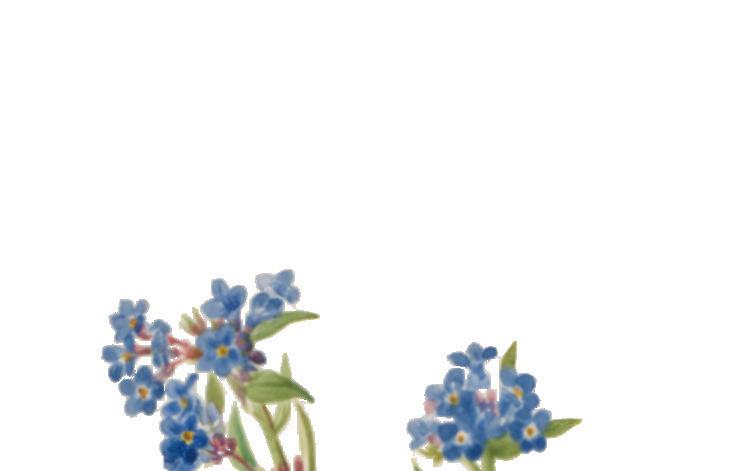

I once had a friend who knew just about everything and nothing about me. We knew each other’s favorite songs on the radio and which corner of the room we regressed to when our parents were fighting, but we never talked about our greatest fears or what we hoped for the future. I would have liked to ask him if he had not died at the mere age of thirteen; sometimes, I play the mental game of asking, what would he be doing if he were still alive? where he would have gone to high school, post-high school, what city he would have lived in, what music he would have listened to.
I miss this friend dearly. I occasionally worry that I miss him improperly, as I did not stay for his funeral reception and one day never responded to his mother’s text. But he has a permanent picture in my wallet and I have a playlist of all of the songs we would listen to on 93.3 FM together. My mind tangles with grief often, but I like to believe that I miss him in my individual way—a way that is us.


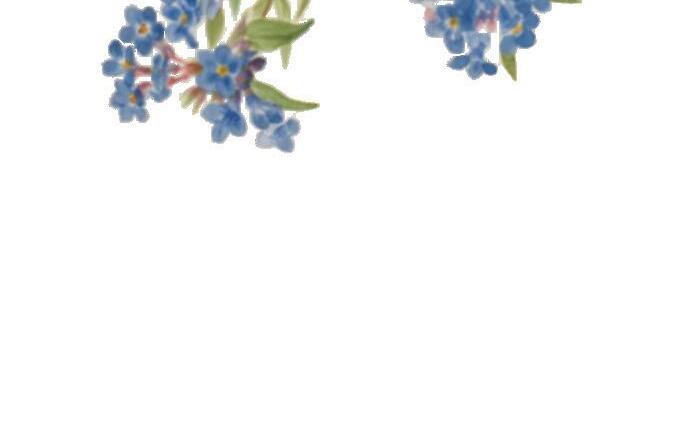
When I was in grade school with him, I never would have imagined a future without him. The life that I had planned always had a place for him as one of my best friends, no matter where we lived or what we were doing. I do not know everything about him anymore, and I did not even when he died. I could contemplate where he is now, which would inevitably lead to a moral or religious debate in my head, but I almost prefer to think about him in a present way. Although he is dead, he is well alive in my mind. And although he never got to start the life he wanted, he is with me— lives inside me—while I go about mine. I dream of a future for both of us.
It has been six years since he died, and we still know everything and nothing about each other. I moved to a different state and went to college three hours from where we once grew up, even though he probably would have hated noisy cities. There are days where I do not use my wallet and do not think about him. But that is the thing about us: even after months of not talking, he would still know which shoulder of his I preferred to rest my head on. His presence exists in my mind, where it will likely stay for a long time. I put my head on my friends’ shoulders, now, and they listen to me ramble about anything and everything.
And until the world or I myself collapse, I live and live and live.



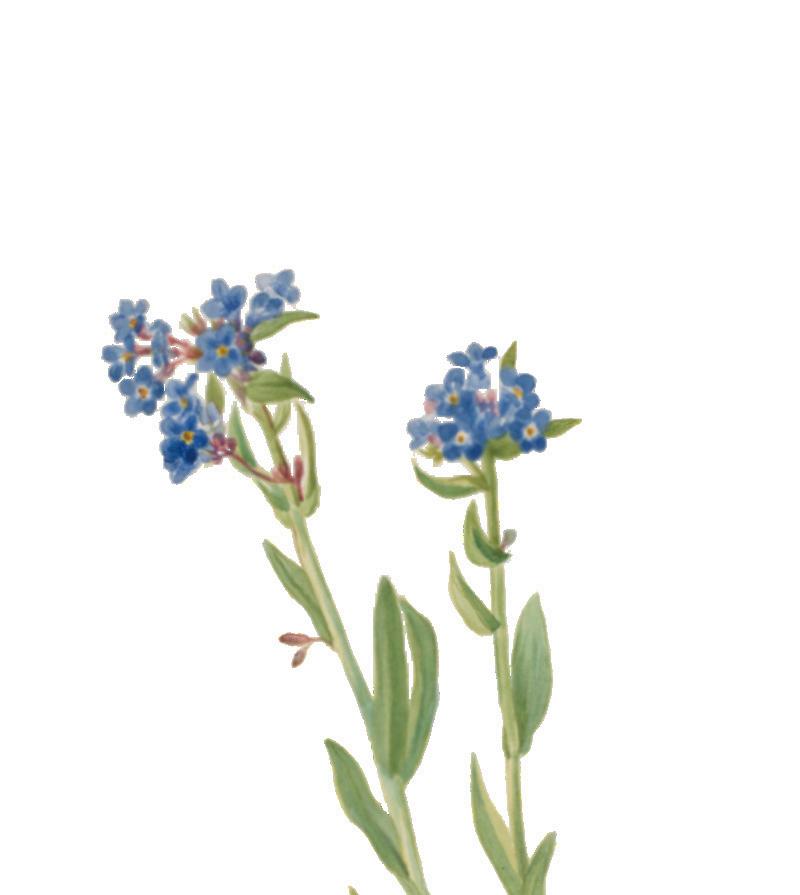

Nobody likes the feeling of losing something. It’s 6:24 in the morning and you’ve got an opening shift at the cafe where you work for twelve dollars an hour plus tips. You’re confident that your heirloom 1970’s aqua-colored Schwinn bicycle can get you there in just twenty-five minutes, but as your hand makes contact with the front doorknob in your college apartment, you get the sinking feeling you’re missing something. You swore you left your keys on the counter, but suddenly your peaceful morning is interrupted by the monotony of retracing your steps. But, eventually, you find them. Your keys are always in the house—whether they’re lodged in between couch cushions, in yesterday’s jeans’ pocket, or even dangling in the lock on the opposite side of the handle, your keys are somewhere to find.
Even worse is the feeling of losing something that, no matter the labors of your search, is simply not there to find. Since being thrust into adulthood, you’ve been searching for the feeling of home, and on those nights when its absence feels particularly damaging to your well-being, you dream of what it’ll feel like to have a home that feels like yours once again.
Your first home, the one you were delivered to fresh from the hospital, was the house on Oak Street, just
one of many you would inhabit throughout your adolescence. The Oak Street house was just barely two stories, and the teeny tiny upper floor featured a nursery with painted walls of lily pads and cattails, an ode to your name, Lily.
In a situation you still struggle to describe, you moved out of this house in early elementary school, only to return as an eighth grader. The truth of the matter, which you didn’t always want to tell people, was that your family—your mom, dad, brother, and you—outgrew the house and were finally equipped to live the domestic dream of a picture-perfect home with a big yard and view of the park. So you made the move, and for a few short years, you relished in that reality and became best friends with the neighbor girl, running around your yard in silk pajamas because you weren’t yet ready for bed.
But a few short years later, your mom’s sickness crept into view and she moved out of your house and into a rotating array of rehab facilities, rupturing that bubble of domestic fantasy with her departure. So, you, your dad, and your brother moved back into the Oak Street house where rent was cheaper and the square footage was more manageable for a newly single parent. Although you don’t remember much from your original years in the Oak Street
house, your return at age twelve was as vivid as the dark burns you imprinted on the hardwood when you accidentally set an iron face down on the floor. Your dining room was decorated with a giant peace sign crafted by your dad out of forty-five old records and your living room held all of his favorite literature in a chicken coop, which he converted into a bookshelf.
You started high school in this house and you were launched into a sexuality crisis at about the same time. You spent many an hour staring at your bedroom wall and hoping that the answers to your problem would magically appear where the lily pads once were, but they never did. You get ready for your first date in this house and host your new friends, who would come to be the most important people in your life. You turn fourteen, then fifteen, then sixteen in this house, and somewhere in between those years your brother moves out and enlists in the Marine Corps, which shakes your “peace and love” hippie dad to the core. Sometimes your mom comes to visit, and sometimes the police come knocking at the front door asking where she is. There were times when you felt so old and mature on Oak Street and then, in times like that, you felt like the toddler in the upstairs nursery who knew nothing about this world.
With your brother moving out and everyone getting older, your dad becomes anxious for a change of scenery. Halfway through high school you move a few streets down and now you’re on Grove Street and you’re neighbors with your former elementary school. Although you lived there the shortest, you came to know the Grove Street house very well when the pandemic hit, and you spent every waking moment in the constant company of that house and your elderly springer spaniel, Coco. In the basement, among your dad’s copious record and cassette collection, you filled out ten college applications and wrote pretentious essays for universities ranging from the private, East Coast all-girls schools to the in-state Big Ten schools, one of which you attend now. Consequently, the mailbox of this house received equal amounts of acceptance and rejection letters, which the tissue box in the bathroom felt the wrath of.
You graduated from this house and became an adult there. The massive chalkboard in your kitchen read “Happy 18th Birthday Lily” from January 27th until the day you moved out the following August. You returned to this house the summer after your freshman year of college to work at a cafe and save up some money, and after having tasted the freedom of living on your own in a city four times the size of your hometown, you kind of resented being back. You made the most out of it, joining a community theater’s production of The Music Man, where you wore a long red wig and elaborate hat with various plastic fruits and lots of feathers. That summer, you’re the one who picks up your mom from prison when she’s finally released and you feel confused because you thought that she was the one who was supposed to be taking care of you. But at the end of the day, you return to a house that feels like home with its familiar white carpeted floors and fancy modern blinds.
You’re finishing up your freshman year of college when your dad takes you to breakfast on a chilly April morning. In the restaurant, he announces that he will be selling the Grove Street house in favor of buying a new one with his girlfriend. You cry in the restaurant. You try not to, but you just do. Because your life has changed in extreme ways over the past four years: your mom going to jail, your dog dying, starting college, and now, what feels like the last semblance of familiarity in your life is being ripped away from you. It’s a little selfish and a little immature, but you feel like for all the strength you’ve shown in the face of family chaos, you deserve a few tears at Marigold Kitchen. The end of that follow-
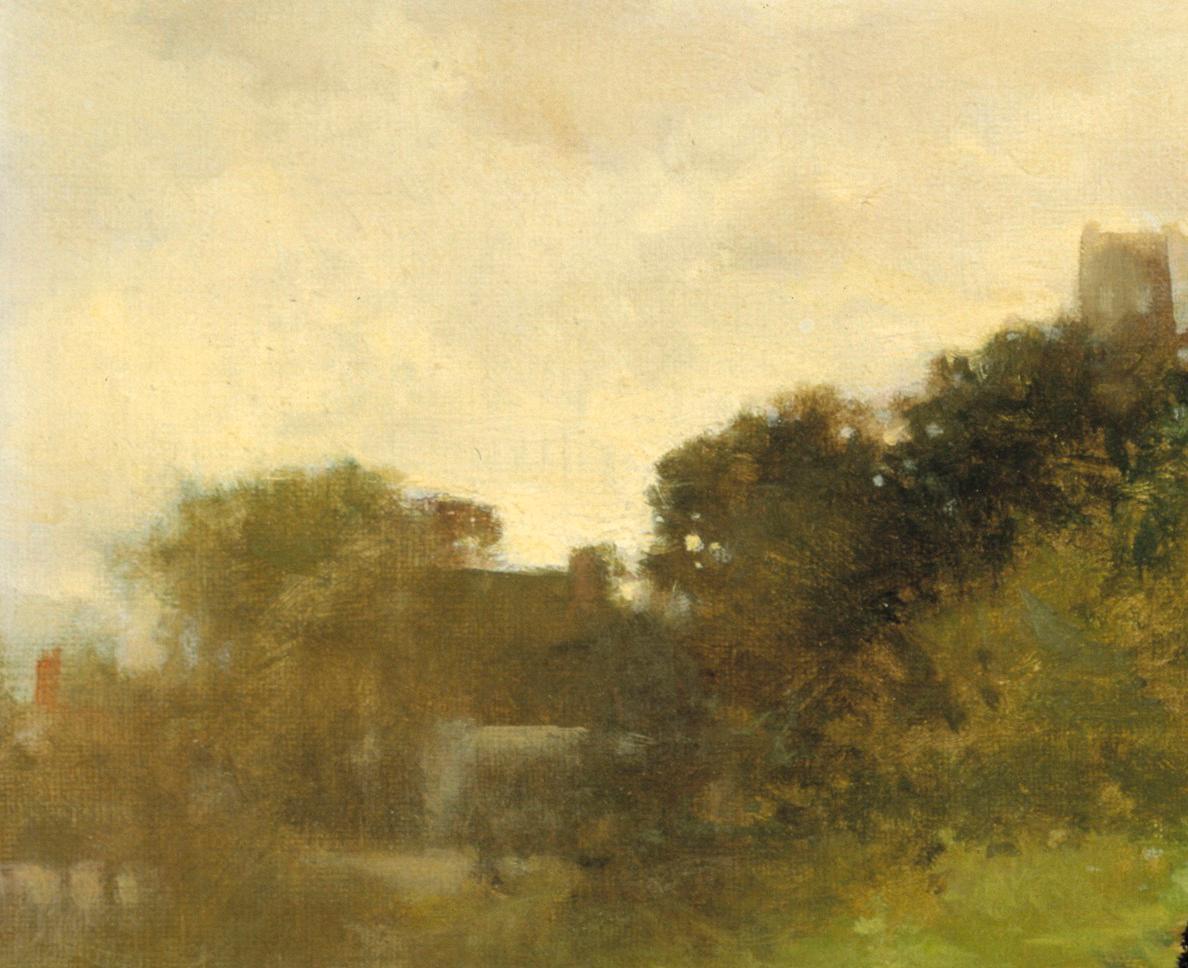
ing summer feels like you’re closing a chapter that you weren’t ready to close. Your dad buys the new house, and you, in an act of stubbornness, continue to live in the old house, alone, until the beginning of August when it’s sold. Your final summer days are spent rifling through your childhood belongings and packing them into plastic tubs and cardboard boxes. One by one, you peel off the paper stars that you taped on the wall above your bed.
You are not present in your dad’s new house at all; you have no room, your high school orchestra awards remain packed away in their boxes, you sleep in the finished basement, and there are definitely no stars on the walls. The only you that exists in that house is the abstract idea of your father’s daughter. Your best moments featured on the fridge: smiling wide and holding your high school diploma, redfaced and sweaty finishing your first half marathon, and your stellar college transcript (not to brag). But really, you are not there at all. When you return for holidays that feeling never fails to overwhelm you. As December comes to an end, your peers excitedly chatter about how they’re so ready to go back home over break, and you silently mourn the loss of that feeling. When you go to your dad’s house for holidays and special occasions, which are the only times you really do go there, you feel like a stranger intruding on the new life that your dad has built. You don’t recognize the brands of the foods in the fridge or the designs of the ceramic dishes in the cabinet. You don’t even know where they keep the recycling.
Amidst dreaming of and praying for the resurrection of your childhood home, you somehow, without even noticing it, make a home out of your ancient college apartment. You have a backyard where you host your rugby team for a bonfire and carving pumpkins on a late November Friday. You have an open kitchen with high ceilings, where you struggle through that early twenties stage of realizing that your parents never taught you a single thing about cooking, so you set the fire alarm off multiple times a week (this was, in part, to a defective alarm). You have a strangely shaped bedroom where you plaster the walls with all the things that make you you. There are parking tickets and posters stolen from State Street, notes from friends that made you cry once upon a time, and photos that show the smiling faces of the people you love the most in this world. Due to the poor layout of the house, which was constructed in 1886, your bed does have to go in the closet, but that almost doesn’t matter because
it’s a full bed, the biggest you’ve ever had, and it makes you feel so grown up. You have a bathroom with nice hand towels that you bought at Target with your Christmas money, and an absurd number of tampons thanks to the sheer amount of estrogen that occupies the space. You have a six-foot tall, thirty-seven dollar fake Christmas tree that you put up with your girlfriend. In this house, you’ve had the inherently individual experiences of crying in front of your mirror (which you found on the side of the road) because of the negative feedback on your latest journalism piece, and laying twenty-five damp rugby jerseys over the surface of your entire room because you’re in charge of your rugby team’s weekly laundry. You’ve also had the deeply social experience of gossiping with your roommates at the kitchen table island, talking about boyfriends and ex-boyfriends and obnoxious coworkers and family dilemmas. And for the first time since the lily pad mural, the vinyl peace sign, or peeling open rejection letters from universities, you kind of start to believe it when you tell people you’re going home at the end of the day.
You’re so close to finding a home, but still, you dream of an even homier home, a place that’s not dictated strictly by college budgets and locations and bus routes, but one that’s entirely of your own choosing. A home where you host holidays and your future kids call your best friends their aunts and uncles. A home with a big dog who’s welcomed on all of the furniture, that is just as messy as you want it to be, and not as clean as your mother demands. You dream of a home where you have total freedom, and your family is who you choose and not who you’ve been randomly assigned by fate. A home where you start the traditions you choose, the color of the walls, and you feel like yourself totally and entirely.
You’re twenty years old, so that dream is just one of many. You also want to be a writer, you want to teach people and care for people, you want to love indefinitely and in new ways, and in whatever small way you can, you want to make this world better. But for now, with each depressing holiday spent at home and overpriced college town lease you sign, you dream of finding home again.

Ernest Hemingway didn’t mean to die. I think he liked living enough to keep doing it, even if it sucked sometimes. He shot himself while cleaning his gun. Pretty stupid for a brilliant man. Or at least that’s what my older brother, Liam, always said. I shit on Hemingway often, especially for his sudden death. The shot to his head had been accidental. It was not a suicide in the least.
Liam, on the other hand, believed that his death was deliberately planned and not at all a mistake. “No, Aud,” Liam would say whenever the age-old debate of ‘Did Hemingway really want to die?’ found its way to the dinner table. Other kids our age talked about Legos and Barbies but not us, our young minds were hungry for the answers of life and death. We were six and nine and contemplating what it meant to die.
I was only contemplating it because Liam was. I worshiped the ground he walked on. “He planned it so much so that it came across as an accident. That’s part of his brilliance. Keeping all of the people who loved him most satisfied with the fact that no part of him wanted to die when every part of him did.”
At this point in the conversation, Liam would push his vegetables around on his plate. He hated vegetables, almost as much as he hated the fact that his favorite novelist had inevitably taken his own life. He was nine and had a favorite novelist. “Honestly, what’s worse? Living knowing that the man who contributed so much to this world hated every part of it or living knowing that he didn’t?”
Liam always waited for my rebuttal, which never came. I was six and had
no rebuttal; I just wanted to talk to my big brother. He was a better debater than I, with a lot more confidence and charisma than kids twice his age. He could’ve won against anyone he wanted with his strong rhetorical skills. But, for that moment in time, winning over me was enough. The conversation changed.
We must have had this debate hundreds of times before either of us turned fifteen. Liam was Hemingway obsessed, after all, and equally as obsessed with his death as he was with his novels.
but there will be no special hurry,” he read. I thought he forgot I was in the room until he looked up to meet my gaze. “I won’t break, Aud,” he said, deadpanned. I had no clue what he was talking about. I wanted him to tell me instead about what legos he wanted for Christmas and what Barbies he thought were stupid. He never talked like that. I wished he would. Liam walked out of the room and left me and his two hundred torn-up pages of A Farewell to Arms behind.
I once walked in on Liam frantically paging through A Farewell to Arms. Years later, I learned that it was on the syllabus in my college English class. But here he was, a young teenager, taking in a plot of love and war and harsh reality. Liam was practically ripping pages out of the book in his disgruntled state. I extended my hand to him, begged for him to slow down. “Liam, you’re ruining your book,” I said. “Why?”
He barely glanced up at me as he continued his rampage. I watched for several long minutes as the threehundred-page book was reduced to a mere hundred. When Liam found what he was looking for, he let out a heavy sigh and paused, head tilted downward as he read, deep in concentration.
“The world breaks everyone and afterward many are strong at the broken places. But those that will not break it kills. It kills the very good and the very gentle and the very brave impartially. If you are none of these you can be sure it will kill you too
I was twenty-one when I found his body. He was twenty-four, two weeks shy of twenty-five. It was July 2, the day Ernest Hemingway was pronounced dead. Too much of a coincidence to be ignored but yet we all chose to ignore it, even though Liam was too calculated and planned out for it to be anything but. Liam died accidentally. The needle in his arm was shoved into his veins accidentally and the dosage that pumped one too many grams into his now lifeless body was not meant to kill him because he loved living too much to want to die.
Because living knowing that the man who contributed more to my world than anyone I had ever known hated existing on this earth was simply not an option.
Liam kept all of the people he loved most satisfied, even when he died. It was part of his brilliance.


Iran has been besieged by war and oppression since its inception, from the defeat of the Persian Empire by Alexander the Great to the Arab conquest of Iran. Persian language, Farsi, and Zoroastrian religion likely would not have survived the imposition of Arabic and Islam following Arab conquest millenia ago if not for Ferdowsi’s epic, the Shahnameh. Even today, Persian culture struggles to thrive in the repressive political atmosphere, where elements central to Persian identity—such as influential literature and music—have

been suppressed after Western imperialist oil endeavors destabilized the internal political landscape. This deeply rooted history explains why Iranians envisioned a future that entailed sovereignty from imperialist powers, democracy, and the freedom of religious and political expression. Hopeful visions for the future united Iranians, irrespective of socioeconomic stratification or religious affiliations, in their resistance efforts. Unarmed, they campaigned for these collective ideals by holding demonstrations, boycotts, and countering bullets with stones. However, this pattern of
“...the draconian regime of today, which continues to suffocate the voice of its people and smother their dreams, is a testament to a future imbued with unfulfilled promises.”

historical oppression was not resolved by the Iranian revolution. Rather, the draconian regime of today, which continues to suffocate the voice of its people and smother their dreams, is a testament to a future imbued with unfulfilled promises. The revolution that Iranians believed would actualize these dreams engendered a far more oppressive political reckoning, one exceedingly authoritarian than their imaginings at the time.
Mohammad Reza Pahlavi, Iran’s last monarch and hence referred to as the Shah, ruled the country until the Islamic Revolution in 1979. He succeeded the throne after the abdication and exile of his father, Reza Shah, following the Allied Anglo-
1941 (Abrahamian 164).
Several active political organizations emerged after the Shah assumed power, reflecting the people’s dissatisfaction with life under his father’s rule. Fiftythree Marxists, formerly incarcerated by Reza Shah, founded the Tudeh Party, which garnered the support of the urban working class and intelligentsia (i.e., university-educated Iranians) (Abrahamian 187-188). In the 1940s, the party included up to 425,000 members, including those from trades union affiliates (Halliday 22). They advocated for fair labor practices, women’s rights and enfranchisement, improved housing, and antiimperialism (Abrahamian 361). Socialists who diverged from the pro-Soviet Tudeh formed the Comrades’ Party, whereas the more moderate Iran Party backed
the election of future Prime Minister Mohammad Mosaddegh, who promoted nationalist foreign policy, antimilitarism, political liberalism, and social reform at the expense of disenfranchising rural, illiterate communities (Abrahamian 188).
In 1952, democraticallyappointed Prime Minister Mosaddegh, with a unanimous vote from parliament (or Majles), nationalized the Britishowned Anglo-Iranian Oil Company (“Mohammad Reza Shah Pahlavi”). He sought to end foreign exploitation of the country’s oil and counteract wealth disparities; in addition, he advocated for shifting power from the Shah’s royal court to the Majles (Gasiorowski 262). To reinstate Western Control of Iran’s oil and counteract the threat of a soviet communist takeover, the Eisenhower administration’s CIA orchestrated a joint coup d’état with British intelligence that reinforced the Shah’s monarchical rule by overthrowing Mosaddegh and replacing him with Fazlollah Zahedi (Gasiorowski 262, 271, 273, 276).
Although the first attempt at the coup on August 15 was thwarted by the Tudeh party, the second attempt on August 19 successfully instated Zahedi as prime minister (Gasiorowski 273). CIA assets in Iran hired a crowd of fake Tudeh demonstrators to surge the streets to elicit fears
of a communist takeover that would bolster support for Zahedi (Gasiorowski 274). Mosaddegh was subsequently advised to order police intervention to suppress protests, demobilizing the Tudeh, while the CIA bribed Shiite clergy to arrange antiMosaddegh protests, further diminishing public support (Gasiorowski 274). The coup ultimately destabilized the country, displacing the democratic parliament with an authoritarian regime that subdued dissent from political organizations, thus priming the political landscape for revolution (Gasiorowski 261, 271).
Over the course of five years following the coup, the SAVAK, the Shah’s secret police and intelligence officers, arrested over three thousand members of the Tudeh Party and executed or tortured party leaders, militant participants, and other anti-regime activists; subsequently, the Tudeh and other outlawed political organizations were forced to move operations underground (Abrahamian 325; “Mohammad Reza Shah Pahlavi”; “White Revolution”). A decade later, the Shah dissolved the Majles to initiate the White Revolution (i.e., a “bloodless” revolution), a modernization program involving land reform, establishing a Literary Corps, the enfranchisement of women, and limiting the power of the clerical class (“White Revolution”). From 1966 to 1976, the country’s
literacy rate increased from 28.7% to 47.5%, and this resounding success is why the Literacy Corps was the only reform to survive the revolution (Elmi; “White Revolution”). Although these ostensible reforms seem beneficial, they were not received well by the public, who did not believe that the hegemonic Shah had the best interest of Iranians in mind. The Shah sought to legitimize his authority and the institution of the monarchy under the guise of modernization, which inadvertently created culture shock in the nation and mistrust toward the Shah’s intentions (Ansari 2). In particular, the Shah’s program angered feudal landlords—including the aristocrats, bazaaris, and ulama (i.e., scholars of Islamic doctrine)—since the reforms diminished their power and disrupted traditional values (Ansari 3). Unfortunately, while the land reform redistributed some of the wealth of landowners, there was insufficient infrastructure to accommodate this change, resulting in rapid urbanization as families fled to larger cities with more viable employment opportunities (“White Revolution”).
Grievances against the Western-backed Shah also extended beyond the White Revolution to include the unequal distribution of oil revenues, lack of political freedom, retainment of political prisoners, stringent media censorship, government corruption, exploitation by Western imperialism, poverty, and
unmitigated power of the monarchy. There were many classes whose aspirations culminated in the revolution: the urban middle class, working class, aristocratic landowners, agricultural laborers, intelligentsia, clergy, and bazaaris (Rahimian & Keshavarz Shokri 100). However, two primary political factions in Iran aligned with Khomeini against the Shah: the Islamic fundamentalists and the liberal and leftists. Pious Iranians and the clergy were dissatisfied that the Shah upheld secular policies established during Reza Shah’s reign that restricted religious expression. Furthermore, they demanded the return of outspoken religious figure Ayatollah Ruhollah Khomeini, an ayatollah who was exiled to Iraq in 1964 for denouncing the White Revolution and inciting anti-government protests (“Ruhollah Khomeini”).
On the other hand, many educated, liberal Iranians who desired freedom of political expression, equal economic opportunities, and democracy believed that allying with religious fundamentalists was necessary to gain momentum for the revolution—especially due to low literacy rates (Jahanpour 155; Afary). Khomeini, in turn, deceptively assured his followers that Iran would have a democratic government that permitted political organization, upheld women’s rights, and promoted the inclusivity of ethnic and religious minorities (Jahanpour 155). Khomeini’s popularity became instrumental in mobilizing the masses during the revolution, but time unveiled his ulterior
The revolution progressed in five distinct waves, each characterized by different modes of resistance from groups with varying social, political, and religious ideologies. Small, nonviolent protests escalated to urban riots, to mass demonstrations, to strikes, and eventually dual sovereignty (Ashraf & Banuazizi 4). The Shah, concerned with losing American endorsement following the 1977 inauguration of Jimmy Carter, released 234 political prisoners, reduced media censorship, assured human rights reforms, and lightened restrictions on political expression (Ashraf & Banuazizi 4-5). Inspired by this newfound political tolerance, the intelligentsia—university students, academics, writers, and young professionals— protested, staged campus walk-outs, and attended poetry readings that criticized the regime (Ashraf & Banuazizi 5-6). Other members of the opposition disseminated petitions that called for the integration of human rights and political protections in the constitution (Ashraf & Banuazizi 6).
Khomeini’s ulama also seized this opportunity for recruitment by circulating thousands of tape recordings of Khomeini’s propagandist speeches near holy sites, religious schools, and bazaars (Ashraf & Banuazizi 6).
Reassured by a lack of political pressure from the Carter Administration, the Shah retaliated against Khomeini by commanding a
major publication in Tehran, the capital of Iran, to issue a letter that contained defamatory allegations against Khomeini and condemned his reactionary rhetoric (Ashraf & Banuazizi 7). In defense, theocrats, the ulama, and bazaaris joined the intelligentsia in the resistance, participating in destructive riots and marches that were met with deadly police force and arrests (Ashraf & Banuazizi 7). Due to restrictions on political expression, religion became a powerful means of mobilizing the masses by providing a unifying ideology, justifications for gatherings and street presence (e.g., days of religious observance or prayer meetings), and locations for assembly in mosques and shrines (Ashraf & Banuazizi 9).
On account of August coinciding with the holy month of Ramadan, mass demonstrations ensued in the fall of 1978, with participation ranging from 50,000 to a million Iranians (Ashraf & Banuazizi 9-10).
On August 20, 1978, the Cinema Rex fire in Abadan claimed the lives of over 450 people who were incinerated alive after being barricaded inside (Ashraf & Banuazizi 10).
Even though the arson was initially blamed on SAVAK, it was later discovered to be instigated by pro-Khomeini Islamic fundamentalists, a horrific perversion of the revolution’s original vision (Nikazmerad 332).
In an interview with French reporters a month later, Khomeini simultaneously condemned the “corrupt” cinema and blamed the tragedy on the Shah,
stating “The Muslim people consider such centers to be against the interests of the country, and think that they ought to be destroyed without the clergy having given any instructions to this effect” (Khomeini 489). In response to mounting protests, the Shah declared martial law on September 8, 1978. Seemingly unaware of this decree, religious protestors held a demonstration in Jaleh Square, Tehran. The Shah ordered the military to subdue the crowd, and the onslaught of gunfire murdered hundreds of people and injured thousands, which cemented the massacre as the deadliest confrontation of the revolution and served as the turning point that exacerbated resistance efforts (Nikazmerad 334; Ashraf & Banuazizi 10).
The Shah’s contradictory strategy for addressing the resistance and death toll— continuing martial law while attempting national reconciliation (e.g., religious exemptions from martial law, the release of political prisoners, and relaxed media censorship)—weakened the regime (Ashraf & Banuazizi 10-11). The limitations imposed by martial law popularized mass strikes, which mobilized both whitecollar government employees and blue-collar laborers for the first time (Ashraf & Banuazizi 11-12). The scope of the strikes expanded into the workplace, encompassing teachers, bank employees, postal service workers, hospitals, public utilities, and, most damningly, the oil industry workers, who were threatened with military action; the demands escalated
from increased wages and salaries to sociopolitical reform (Ashraf & Banuazizi 12-13). This influx of participation demonstrated the people’s longing for change and commitment to achieving a brighter future, one with better opportunities and living conditions than those possible under the Shah’s rule.
During the last wave, which corresponded with the holy month of Muharram, Khomeini directed the masses to continue strikes and illegal demonstrations despite the imposed curfew and ban on marches (Ashraf & Banuazizi 14). The formation of local Islamic Revolutionary Committees and a central strike committee indicated dual sovereignty: a system of shared political authority between the Revolutionary Committees and the monarchical state (Ashraf & Banuazizi 16). Although the revolutionary committees initially functioned to counteract looting and assaults perpetrated by pro-regime protesters, their purpose expanded to include food allocation, petroleum rationing, acts of welfare, and some aspects of law enforcement in order to fill the political vacuum created by the Shah’s waning control of government and civil order (Ashraf & Banuazizi 16). After multiple failed attempts to compromise with the opposition, the Shah ultimately fled Iran on January 16, 1979 to escape the revolution and reside in exile. On February 1st, Khomeini returned to Iran and assumed leadership of the country (Ashraf & Banuazizi 17).
In March of 1979, Khomeini held a national referendum in which citizens could only vote for an Islamic Republic, prompting liberals and leftists to boycott. Many Iranians were displeased with the “reign of terror” that followed Khomeini’s ascension to power, including mass executions, religious fanaticism, silencing of dissent, and oppression of minorities (Jahanpour 155). Others hoped that this political reality was a transitional period and that Khomeini would not stay in power for long. Ultimately, because left-wing Iranians underestimated the influence of Khomeini and his Islamic fundamentalist following, the democratic revolution was transformed into an Islamic Revolution. What had initially felt like a victory for the Iranian people soon marked the country’s swift descent into a new political nightmare.
The official results stated that 98% of Iranian voters allegedly approved the country’s shift to an Islamic republic, but sources dispute the fairness and legitimacy of this report given the aforementioned boycotts and the likelihood that citizens voted “yes” to avoid persecution. Nonetheless, the government implemented
“Life under Islamic law eerily parallels the conditions that inspired the revolution, the political reality of Iran rendering the dreams of its people distorted beyond recognition.”
Islamic laws which imposed harsh restrictions on attire, free speech, and conduct. The indoctrination process included months-long closures of educational institutions to create Islamic curriculums and the introduction of gendersegregated schools. Those affiliated with the Shah were subsequently imprisoned or executed, and the onset of the Iran-Iraq War in September of 1980 crushed any capacity for resistance. For the last forty-five years, the hijab, formerly outlawed during the Pahlavi dynasty, has been mandatory for girls from the onset of puberty, and neckties, considered a Western symbol, have been banned for men. Media and press censorship occur at a statewide level to suppress resistance organization, and social media requires VPNs to access. Women require permission from their husbands to travel and experience legal disadvantages, such as forfeiture of child custody upon divorce and inheriting half as much as brothers during divisions of estates. Even singing and dancing in public are
deemed inappropriate. Infringements pertaining to attire, particularly the compulsory hijab, are enforced by the Guidance Patrol (i.e., morality police), who heavily monitor public spaces. Life under Islamic law eerily parallels the conditions that inspired the revolution, the political reality of Iran rendering the dreams of its people distorted beyond recognition.
Echoes of the failure of the Iranian Revolution reverberate today following outcry over the brutal killing of Jina Mahsa Amini, a Kurdish minority, by morality police on September 16, 2022 after allegedly wearing improper hijab. Her death incited
the Women, Life, Freedom movement (Zan, Zendegi, Azadi), which has inspired nationwide mass protests and strikes that have been met with state violence and executions. The birth of this movement exemplifies how the Iranian people’s aspirations for the future decades ago were lost in translation, never having materialized after the Islamic Revolution. Although a new disillusioned generation stands at the forefront of the current resistance, their collective dream—of gender equality, freedom of speech, an end to police brutality, censorship, and government corruption—evokes the revolutionary spirit of their ancestors. Oppressed dreamers, like the Iranians, rarely predict their dreams becoming ensnared and lost in the complex web of politics. Though dreams are powerful catalysts for change, the manifestation of these dreams in the waking world can decay ardent fantasies into unforeseen nightmares.
“Although a new disillusioned generation stands at the forefront of the current resistance, their collective dream—of gender equality, freedom of speech, an end to police brutality, censorship, and government corruption—evokes the revolutionary spirit of their ancestors.”
References Abrahamian, Ervand. Iran Between Two Revolutions. Princeton University Press, 1982. JSTOR, doi:10.2307/j.ctv1fkgcnz. Afary, Janet. “Iranian Revolution.” Encyclopedia Britannica, 5 Jan. 2024, www.britannica.com/event/Iranian-Revolution. Ansari, Ali M. “The Myth of the White Revolution: Mohammad Reza Shah, ‘Modernization’ and the Consolidation of Power.” Middle Eastern Studies, vol. 37, no. 3, 2001, pp. 1–24. JSTOR, www.jstor.org/stable/4284172. Ashraf, Ahmad, and Ali Banuazizi. “The State, Classes and Modes of Mobilization in the Iranian Revolution.” State, Culture, and Society, vol. 1, no. 3, 1985, pp. 3–40. JSTOR, www.jstor.org/stable/20006815. Britannica, The Editors of Encyclopaedia. “Mohammad Reza Shah Pahlavi.” Encyclopedia Britannica, 22 Oct. 2023, www.britannica.com/biography/Mohammad-Reza-Shah-Pahlavi. Britannica, The Editors of Encyclopaedia. “Ruhollah Khomeini.” Encyclopedia Britannica, 15 Oct. 2023, www.britannica.com/biography/Ruhollah-Khomeini. Britannica, The Editors of Encyclopaedia. “White Revolution.” Encyclopedia Britannica, 14 Feb. 2022, https://www.britannica.com/topic/White-Revolution. Elmi, Zahra Mila. “Educational Attainment in Iran.” Middle East Institute, 29 Jan. 2009, www.mei.edu/publications/educational-attainment-iran. Gasiorowski, Mark J. “The 1953 Coup D’etat in Iran.” International Journal of Middle East Studies, vol. 19, no. 3, 1987, pp. 261–86. JSTOR, doi:10.1017/S0020743800056737. Halliday, Fred. “The Tudeh Party in Iranian Politics: Background Notes.” MERIP Reports, no. 86, 1980, pp. 22–23. JSTOR, doi:10.2307/3012300. Jahanpour, Farhang. “Iran: The Rise and Fall of the Tudeh Party.” The World Today, vol. 40, no. 4, 1984, pp. 152–59. JSTOR, www.jstor.org/stable/40395600. Khomeini, R. (2008). SAHIFEH-YE IMAM: An Anthology of Imam Khomeini’s Speeches, Messages, Interviews, Decrees, Religious Permissions, and Letters, translated by Abdol-Husayn Shirazi, vol. 2, The Institute for Compilation and Publication of Imām Khomeinī’s Works (International Affairs Department), 2008. en.imam-khomeini.ir/en/c5_3236/Book/English/SAHIFEH-YE-IMAM-Volume-3-. Nikazmerad, Nicholas M. “A Chronological Survey of the Iranian Revolution.” Iranian Studies, vol. 13, no. 1/4, 1980, pp. 327–68. JSTOR, doi:10.1080/00210868008701575. Rahimian, Mohammad, and Abbas Keshavarz Shokri. “Role of Social Groups and Classes in the Islamic Revolution of Iran.” Review of European Studies, vol. 9, no. 3, 2017, pp. 100–105. Canadian Center of Science and Education, doi:10.5539/res.v9n3p100.

Lost in afterthought, I paused for a time in the linen light, and listened to the cadence of the landscape, the low thrum of the turning earth as an afternoon of high clouds descended and unlatched evening’s door, revealing the last of its wind-combed grasses– each blade broken and bending towards earth–the purpling splotches of elderberry and the first-blood velvet of sumacs; the jubilant yellow of birches and maples, eerily underlit and waiting to fall away; the early autumn air, still redolent with the pleasurable scents of stubble and soft rain, and certain that a day such as this, when the ordinary seems to undress itself into something exquisite and hauntingly beautiful, is not so distant from the divine. ~

As readers journey through the pages of literature, they are often beckoned into realms where reality blurs and imagination takes flight—these are the dream realms intricately depicted in the writings of Shakespeare and John Keats. Esteemed literary critic Northrop Frye refers to these literary dream realms as “green worlds” that function to “[visualize] the world of desire, not as an escape from ‘reality,’ but as the genuine form of the world that human life tries to imitate” (184). Dreaming provides an avenue for self and social improvement and is found at the heart of humankind and literature. This essay contends that the concept of dreaming as presented through green worlds in Keats’s Lamia serves as a vital lens to further understand literature and the modern world, and encourages people to consider the societal changes and personal liberations they can experience in their own dream worlds.
In 1948, Northrop Frye coined the phrase “Shakespeare’s ‘green world’” in an essay that would later be published in his book, Anatomy of Criticism. This ‘green world’ refers to a recurring motif in Shakespeare’s works in which characters find themselves transported to a magical or enchanted space, often represented by forests, gardens, or pastoral settings. These spaces are easily recognized in works such as in A Midsummer Night’s Dream, The Tempest, and As You Like It. Frye describes green worlds as “[having] analogies, not only
to the fertile world of ritual, but to the dream world that we create out of our own desires” (183). Therefore, green worlds suspend the normal rules of society, affording characters the freedom to explore their desires, reconcile conflicts, and undergo personal transformation.
Lucia Folena, a Shakespearan scholar, echoes this sentiment, stating, “entering the forest is like gaining access to a looking-glass world, or to a dream, where… customary components of life…appear recombined according to a different logic and altered priorities” (224-225). By creating a fantastical setting, Shakespeare’s characters are able to explore themes of love and identity with greater freedom because they are not restricted by social expectations.
Green worlds also serve as a powerful metaphor for the transformative power of nature and human imagination; when Shakespeare’s characters return from their dream worlds, their struggles in the real world quickly resolve. For instance, in A Midsummer Night’s Dream, Hermia and Lysander flee to the green world of the forest to escape the Athenian law that dictates Hermia must marry Demetrius. As they navigate through the forest, they encounter supernatural beings such as Oberon, the fairy king, and Puck, his mischievous servant, who wield magical powers that influence the actions and emotions of the mortal characters. At the conclusion of the play, the characters—having undergone personal transformations

facilitated by the green world—return to Athens, where their marital problems have seemingly been rectified and the couples are happily married. However, the characters are not the only ones freed by the green world, as Shakespeare himself is also freed. This is apparent because Shakespeare was able to explore taboo subjects, like the interspecies relationship between Nick Bottom, a donkey, and Titania, the fairy queen. This relationship is purely comedic because the audience is never asked to accept it as real, so it poses no threat to societal rules; therefore, the green world enabled Shakespeare to openly explore such themes and ideas. Due to Shakespeare’s vast influence on the literary canon, it is apparent how later authors used this green world as a model to experience creative freedom in their own works.
Shakespeare’s green world provided authors like John Keats the framework to explore their own creative liberation. Keats is a particularly appealing example because his strong admiration for Shakespeare is well documented. Even though John Keats was born over two hundred years after Shakespeare, he was an avid reader of his works. In the book
Reading John Keats, Susan Wolfson details his dedication, describing Keats as a “voracious reader…[having] read Hamlet forty times” (x). Keats’s admiration

for Shakespeare is further apparent in instances where Keats mentions Shakespeare by name in odes and personal letters. Arguably, the most famous of these allusions appears in one of his letters to his friend, Woodhouse, in which Keats explains the internal contradictions that great poets must possess: “What shocks the virtuous philosop[h]er, delights the chameleon Poet. It does no harm from its relish of the dark side of things any more than…the bright one; because they both end in speculation (The Letters of John Keats, 386-387). While this excerpt does not name Shakespeare directly, scholars have widely interpreted him to be “the chameleon Poet,” a connection that appears logical given that Keats references Shakespeare and his works in other texts. Furthermore, understanding Keats’s view on the identity of a poet is essential for comprehending how his poetry provided him with his own green world, an idea that will be discussed later. For now, it is imperative to acknowledge the parallels between these two great poets. To this effect, Wolfson states, “For the thread of the Shakespearean influence runs so close to the center of Keat’s being that we can, with patience, watch it gradually merge into the very substance of his soul” (xi). Since there is little doubt that Keats and his writings were influenced by Shakespeare, Shakespearean themes and the green world motif are found in Keats’s work.
Published in 1820, John Keats’s poem, Lamia recounts the tale of a serpentine woman, Lamia as she explores love and desire. The poem begins with a lovesick Hermes seeking a beautiful nymph. Lamia brokers a deal with Hermes: she will reveal the nymph to him if, in exchange, he reverts her into her human form. After the exchange, the now human Lamia seeks out her lost lover, Lycius. Upon finding him, she creates a magical palace where they can explore
their relationship and love. Lycius soon grows restless and decides he and Lamia should marry; Lamia is opposed to the idea, but yields on the condition that the philosopher Apollonius will not be invited to the wedding. Once he agrees to her terms, the wedding preparations begin. The celebration appears to be going well until the uninvited Apollonius arrives and becomes fixated on Lamia. His stare renders her uncomfortable, and Lycius demands he remove his gaze. When confronted, Apollonius calls Lycius a “fool” and a “serpent’s prey” (Keats, part II, lines 692, 695). Shocked at the accusation, Lycius looks at Lamia and mutters “A Serpent!” (Keats, part II, line 702). This causes Lamia to vanish from his arms, and a heartbroken Lycius dies shortly after.
An extensive amount of scholarship has been written about Keats’s Lamia. Scholars use the poem to explore human desire, temptation, and the boundaries of what defines humankind. Some argue Lamia is simultaneously human and superhuman. Scholar Denise Gigante’s article “The Monster in the Rainbow: Keats and the Science of Life” states, “Lamia will not be contained within the allegorical web of the poem,” while others like Charles Patterson argue that she is void of all humanity and is instead demonic, created to “inspire a man to pursue daemonic experience beyond the point of no return” (442; 198). Wolfson believes this ambiguity of Lamia’s form builds on itself, which creates more perplexities for readers (120). Beyond the contention surrounding Lamia’s humanity, scholars have also discussed relationships within the poem. Some interpretations define Apollonius as the villain of the narrative because he causes the downfall of the perfect world Lamia has created. However, Patterson argues the contrary, suggesting that “Apollonius is merely the voice of good sense, of good human sense” (209). The final theme that is commonly discussed in the scholarship revolves around societal expectations or, as Keats describes, what
it would take to “unweave a rainbow” (Keats, part II, line 634). Although these debates have rendered deep understandings of the dynamics present in Keats’s poem, there remains a gap in the conversation about the characters’ transformative relationships with the natural world.
The natural world plays a critical role in Keats’s Lamia because it presents the characters with a way to escape the preconceived notions of society. There are two main instances where the concept of the green world is easily seen, the first being the magical greenland that conceals the elusive nymph. The poem states:
She breath’d upon his eyes, and swift was seen
Of both the guarded nymph near-smiling on the green.
It was no dream; or say a dream it was, Real are the dreams of Gods, and smoothly pass
Their pleasures in a long immortal dream (Keats, part I, lines 124-128).
Keats describes the nymph’s hiding spot with terms analogous to the description of green worlds: the nymph appears happy, near smiling, in this realm away from Hermes, where she is free from the constraints the audience presumes Hermes inflict on her. However, Lamia ruins this freedom by revealing her location. Because the poem follows Lamia rather than the nymph, the audience remains unaware of whether the nymph’s time in the green world successfully untangles her real world problems. A significant part of the passage concerns the ambiguity of what is a dream: Hermes is able to view the nymph because Lamia has “breath’d upon his eyes,” but it is unclear whether Hermes sees dreamlike vision of the nymph or if she

is physically standing at his side. The language swings between conveying her physical presence, “It was no dream,” to admitting the nymph could possibly be a dream, “or say a dream it was,” to cementing the dreamlike quality “in a long and immortal dream.” Furthermore, the term “immortal” implies that the dream world transcends mortal limitations and permits people to experience pleasure beyond the bounds of time and mortality. This aligns with the idea that green worlds mirror the characters’ realities by possessing a fantastical quality that makes them wonder if they are dreaming.
The second green world manifests when Lamia runs to the countryside after her transformation: “Fair, on a sloping green of mossy tread,/ By a clear pool, wherein she passioned/ To see herself escap’d from so sore ills” (Keats, part I, lines 181-183). The imagery conveyed in these lines creates a green world in which Lamia experiences and examines the physical freedom her human body provides. Folena believes that the green world serves as transitional space, or “a site of regeneration, metamorphosis and conversion” (230). This space permits Lamia to observe her physical transformation, from snake to woman, and bestows her with a socially accepted body that facilitates her to transition into the dream realm of the palace, in which she and Lycius happily reside together. This is apparent because while in this green world, she pauses to consider her reflection in the “clear pool,” highlighting that her new physical form is both at the center of the green world and the root of her liberation. The palace itself also acts as a dream world, allowing Lamia to explore both her creativity and sexuality freely despite the ambiguity that she may actually be a snake. In the real world, Lamia cannot experience these freedoms because when she assumes her snake form, she is unable to interact with normal society and is condemned to a realm with only Hermes and the nymph. Also, when Lamia is in her snake form, she cannot engage
in a romantic relationship with Lycius, and it is only in this dream realm that she experiences romantic liberation. However, like all green worlds, Lamia must leave the dream world and return to reality, which coincides with the real-world arrival of Apollonius at the wedding. It is clear that Apollonius is representative of the real world from the moment Lycius introduces him: “‘Tis Apollonius sage, my trusty guide/ And good instructor; but to-night he seems/ The ghost of folly haunting my sweet dreams” (Keats, part I, lines 375-377). Apollonius signifies the world in which Lycius needs a guide in order to follow the social rules, and Lycius directly recognizes that Apollonius is “haunting” or seeking to ruin his dream. For this reason, Apollonius’s character embodies the restrictive society that Lycius is attempting to flee. When Apollonius appears at the wedding and fixates on Lamia, the social expectations flood Lycius’s green world, prompting his outburst: “Begone, foul dream!” (Keats, part II, line 668). As soon as he utters these words, the couple’s happiness falls apart along with the dream world. Lamia disappears, presumably back to the life she had before, and Lycius is thrust back into the society he sought to escape.
This pattern of returning to reality lies at the heart of many of Shakespeare’s plays wherein the characters return to reality and then prevail over seemingly impossible obstacles through lessons they learned in the green world. However, Lamia breaks this cycle because the characters never have the opportunity to overcome their situations in the real world. The story simply ends with Lamia confined back to the life she had before and the cycle is left incomplete, leaving the reader feeling as though the story is left unfinished. Perhaps this ending advocates for readers to embrace their own dream worlds and find the liberating happiness they contain, or maybe it functions as a social critique, prompting readers to wonder why
society is determined to strip away the happiness of individuals.
However, an alternative interpretation could propose that the poem’s conclusion is happy because Lycius is spared from having a romantic relationship with a serpent. Both interpretations rely heavily on the perceived evilness of Lamia. Lamia’s true form and intentions has been a topic of contention among Keats scholars. The poem contradicts itself on this subject, making it impossible to determine definitively whether Lamia truly is a woman or a snake. However, the poem does reveal detailed information about Lamia and Lycius’s relationship. Charles Patterson comments on this relationship, stating, “There is no gross deceit on [Lamia’s] part; she is as captivated by her love for [Lycius] as he is by his love of her” (198). In other words, Lamia does not manipulate Lycius, and their relationship appears to be genuine; his love is so intense that he abruptly dies after her disappearance. Lycius wants to marry Laima and is content living life in their purple palace, and Keats emphasizes this satisfaction with angelic descriptions of the rooms: “curtaining/ Whose airy texture, from a golden string,/ Floated into the room, and let appear/ Unveil’d the summer heaven, blue and clear,” (Keats, part II, 416-418). The trumpet, which represents sounds from the society outside the palace doors, physically summons Lycius from the green world and beckons him back to his normal life. The way in which the interruption by the trumpet’s bursts the rosy dream bubble afforded by the Lycius’s green world demonstrates that adhering to social norms is not the only way to achieve satisfaction. Lamia showcases how it is illogical to fear our green worlds, suggesting that they are instead wonderful places of liberation and dreaming of more.
The poem offers no explanation for why Lamia, Lycius, and the nymph would not have been forever content in their green worlds, implying that one way of
achieving happiness is to live in one’s dreams. In the poem, nature provides these dream realms that give Lamia its happy ending. In the final moments of the poem, Lycius dies, and because burial is customary, the audience can assume he is returned to the earth. Therefore, his death both literally and symbolically returns him to nature, eternally freeing him from the constraints of society.
Shakespeare and Keats experienced their own green worlds through creating these worlds for their characters because they were allowed the freedom to explore socially frowned upon themes and ideas. Keats believed that poets were “the most unpoetical… thing in existence” and that poets could only find success through embodying either “the sun,” “the moon,” or “the sea” (The Letters of John Keats Letters, 386-387) Therefore, if Keats is to be believed, then it is only through the natural world that his poetry found success. There is a certain thrill that accompanies the thought of temporarily losing oneself in nature: the sun, the moon, or the sea. Keats learned to embody that thrill in order to write his poetry and experience what it is like to dream unrestricted. His influence encourages modern readers to seek their own green worlds in order to feel the exhilaration of relinquishing control and the success that follows the subsequent realization of their dreams. Green worlds ultimately provide spaces where dreams can flourish, societies can change, and the soul can find liberation.
Works Cited

Frye, Northrop. Anatomy of Criticism. Princeton University Press, 1957.
Gigante, Denise. “The Monster in the Rainbow: Keats and the Science of Life.” Modern Language Association, Vol. 117, No. 3, May 2002, www.jstor.org/stable/823143.
Keats, John. Lamia. Project Gutenberg, 2008. www.gutenberg. org/files/2490/ 2490-h/2490-h.htm.
The Letters of John Keats, 1814-1821. Edited by Hyder Edwards Rollins, vol. 2, Harvard University Press, 1959. ISBN: 9780674527027.
MacFaul, Tom. Shakespeare and the Natural World. Cambridge University Press, 2015.
Murry, John Middleton. Keats and Shakespeare: A study of Keats’ Poetic Life from 1816 to 1820. Oxford University Press, 1925.
Patterson, Charles, Jr. The Daemonic in the Poetry of John Keats. University of Illinois Press, 1970.
Perry, Seamus. “The Poetical Character.” John Keats in Context, edited by Michael O’Neill, Cambridge University Press, 2017. pp. 178–187. doi:10.1017/9781107707474.
Folena, Lucia. “The Judgement of Trees: Shakespeare’s Forest and the Theatre of the Green World” RiCOGNIZIONI. Rivista di Lingue, Letterature e Culture Moderne, vol. 7, no.14, 2020, pp. 221-223. doi:10.13135/2384-8987/5316.
Wolfson, Susan. Reading John Keats. Cambridge University Press, 2015.
Yimon Lo, “The Feeling of Not Feeling: Keats, Woodhouse, and the Poetical Character.” Durham University, 2020.
Long awaiting, I walk down every street, Searching for warmth in eyes never seen: Muses stacked higher than the hope, desperately, That one day they stick, not slip past and choke, Surrendered to the undercurrent of all lives unknown.
Slithering droplets, damp touch upon windows, The 8:10 bus and it’s hot breath; will I find that face?
So early the fog hangs low, heavy across the moors; Miniature lakes, bodies of white, no boundary between Themselves and the sky, symmetrical carvings Of jagged branches, bare and tangled, but at least not alone. I think I live upon that line, invisible and melting Into each world, the true, the false.
Safety in the arms of rippling, quivering reflections, Detached from the source, but disguised the same. Spared from touch, never liable to pain. I wish to steal so and glimmer in the breeze, Swallowing pebbles beneath my crystal sheet. Anything but this, alive and not living; alas nothing but this, Not a single thing, gives me reason to continue.
I have begun to think life synonymous with search; Empty glass, corpse eyes, sad smile upon cold lips.
I saw you touch yours, that Monday. I was not looking ahead as I should have.
From a corner of my sight I snatched a glimpse, A second, a third. I lingered, I dwelled, sorrow burned. I wrenched my fists, rubbed my knuckles. The immediate Fell away, and the false yet again emerged. Behind those windows is a house well lit; The windows are bright, but not alight themselves. I am this layer, but no ripples now.
And I lie on the bed, and see her do the same as before. Fingers to lips, mine to hers.
Groaning and crying silent, I am sore, Beaten by the precipice and the avenue of more –Which is not for me it seems. Never mine; only without Lies through my telescope, like Clov and his ladder. Except I need not check. I look elsewhere now, Inside that crinkled wet rag, that pink demon of self At least has some use; show me what I want to see.
Closed door, crowded posters, cluttered desk. Her clothes, her picture boards, her nearest and her dearest –My place will be there too. I’m nervous, still standing. She says this: ‘Sit down, make yourself at home.’ I think I know that place, I think it might soon be mine. I think it might be you. She unzips my coat, we sit. My nerves melt under the touch of her thigh Next to my own. I look around, what do I do? But she takes my face in her hand, presses her lips to mine And that was all it took.
How sad we must then wake up, And know that solitude steals symmetry, stagnant like the water That floods the other half, unwrinkled and neatly tucked. Remembering, eyes forward, we become those battered branches. Nothing new lies here; no deviation or quivering chances. Just the same, empty eyes, corpse smile, cold glass, lips? Nothing is nothing, but I cannot survive on this.


Golden. The tint washes all the memories. You see yourself, standing there, draped in a robe of golden silk. Your house is made of golden bricks. The golden car in the driveway gives you a stomachache. You’ve never been much of a fighter, and until now, that was okay. I was willing to go at whatever pace your courage was produced. It was on you to make some.
You lay on your bed and try to bear the pain as Nostalgia gobbles up and swallows down your soul. I can see the shadows through your curtains, and the pain hits me, too, every time you try to get up and Nostalgia pushes you down, down, down, because you long for the days when freedom was yours. Go back, go back, go back, it echoes in your head, bouncing into a distorted mess of nothing but emptiness. You have no anger. The pain has consumed it all. A drop of hope splashed in the well of my soul. If I could find it, I could give it to you. Then you would destroy it.
Chains bind you. To a house, to a bed, to a family. They hurt, they drag, their ankles ache, because the chains hold them down too. They haven’t gotten used to the weight. As you got older the links built themselves, little by little, and only now are they beginning to rust.
a doctor he was, he had no idea what you could do. Freedom, stolen by scoliosis. Because that’s what you have to tell them. Safety, Safety! You had a mobile hall of mirrors. But oh, poor, poor Safety! They would blame you. For trying your hardest. You and I are both owners of scapegoats, goats that bleat and bleat until blood starts coming up their throats. Soon enough, they’ll be dead; by our negligence, we’ll have killed them.
That’s not what my family told me. They always said “Safety first!” But truth be told, I think they believed it too. My mother was scared, just like you. She said I should hide it. I can quite well–but we both know how that makes my bones ache, ache and squeal, squeal and sleep, sleep and faint.
My bones rattle today. Nostalgia grasps and grasps for the war fuel woven into marrow. Go back. Go back. Go back. Nostalgia whispers its war cry as it reaches for its belt. Draw the sword, cut the bone, and watch as Nostalgia falls back on itself, crushed under the weight of the golden blade. I’ll make sure of it.
“A drop of hope splashed in the well of my soul”
I hate that you hurt with a burning passion. I may experience the same pain, but the fever isn’t burning me up. Surprise knocked on your door, and I know you well enough to know you would never stand up for yourself. Logic was in a million pieces on the floor, but the decision had been made–though he couldn’t even begin to comprehend what you feel, and though
The well of hope sends up bubbles of magic, the kind that makes you look at the clock at 11:11 every day, the kind called habit. You make the same wish every day, and when I get the chance, I make it for you, too. It’s not as effective as a prayer, but it told me passion was locked up in there, somewhere.
You get up. You walk to the door. You grab the frame, managing to stay standing as Nostalgia licks and licks and tries to scorch your flesh. With every step you take, you get closer to Freedom’s prison. Taking

small steps, you strain, using all your strength to go forward, forward. Down. Out. Free. Take it slow, just like we will, just like we need to.
You were right, though. Where could I go with a string of passive aggressive syllables? Inside, Nostalgia hits you with a hammer each time you try to move down a step. You sit down, shocked that you have been captured by Disbelief, Nostalgia’s new best friend. Besides that, the carpet is warm and soft, and it won’t hurt your back like the bumps in the road. You savor the pain, the stinging longing Nostalgia has injected into you. Sure, it hurts, but it’s nothing like being told no, no, you cannot just be left alone.
and neither do you, neither did you, until Nostalgia snatched away everything you ever had only to tell you it was never yours to begin with. Mine, all mine, all mine, what a thief Nostalgia is!
Relentless, so to speak. Its gaslighting sets the carpet behind you ablaze, and suddenly you can forget the nostalgic pain. The nerves sting, yet you run, run, away from your abuser. The torment chases you at lightning speed, electricity stabbing at your feet, reaching to pull any ground that remains from under them.
“Mine, all mine, all mine, what a thief Nostalgia is!”
It was a method of torture as old as time: deny your selfdetermination, make you no one, none but a soulless figure of gold to evoke cravings for a past that never should have been, and set in motion another cycle in which we’ll be stuck. So dark, so eerie, yet so cinematic.
I think our first stop will be the museum. There’s lots of fire extinguishers there. I’m sure you’ll find a story somewhere in that labyrinth of exhibits that reminds you how much worse it used to be. You’ll beg and beg to go home, saying it was never worth it even though it’s not about you. It feels that way, though. After all, you were our reason.
Who were we to stand up to the law? We are all subjects, per Magna Carta, Constitution, and so forth. Nostalgia likes to use them as a weapon. Of course it does. It was a concept, and no rules or morals bound it like they did all of the people Nostalgia controlled. Nostalgia stands above the law, and we are all subjects of a glorified ancience, of a goldenwashed history for everyone who has never lived in a body like ours. And they would never understand,
How could you? How could you? You didn’t notice? At all? Not once in all those years?
But narcissists are supposed to be good at hiding it, and Nostalgia had an advantage under that golden garb. It was a friend to everyone else—in name—and to their benefit was your casting out. Nostalgia was only a liar and a half, and we were the oppressors. They had every reason to believe it.
The blaze chases you out the door. It stops before the sidewalk; you don’t need it anymore. The golden bricks have turned black around the doorframe. Now you see this for what it is: I need you, and you need me. There’s no reason for it to be anyone else.
I start to think maybe I’m a narcissist too, but your frantic insistence is killing the mood. I ask you to get in the passenger seat, without need: there’s no one else with us. You know what I mean. The pain, the nervous fire, envelops my spine, and I drive us off to heaven as our backs go numb together.
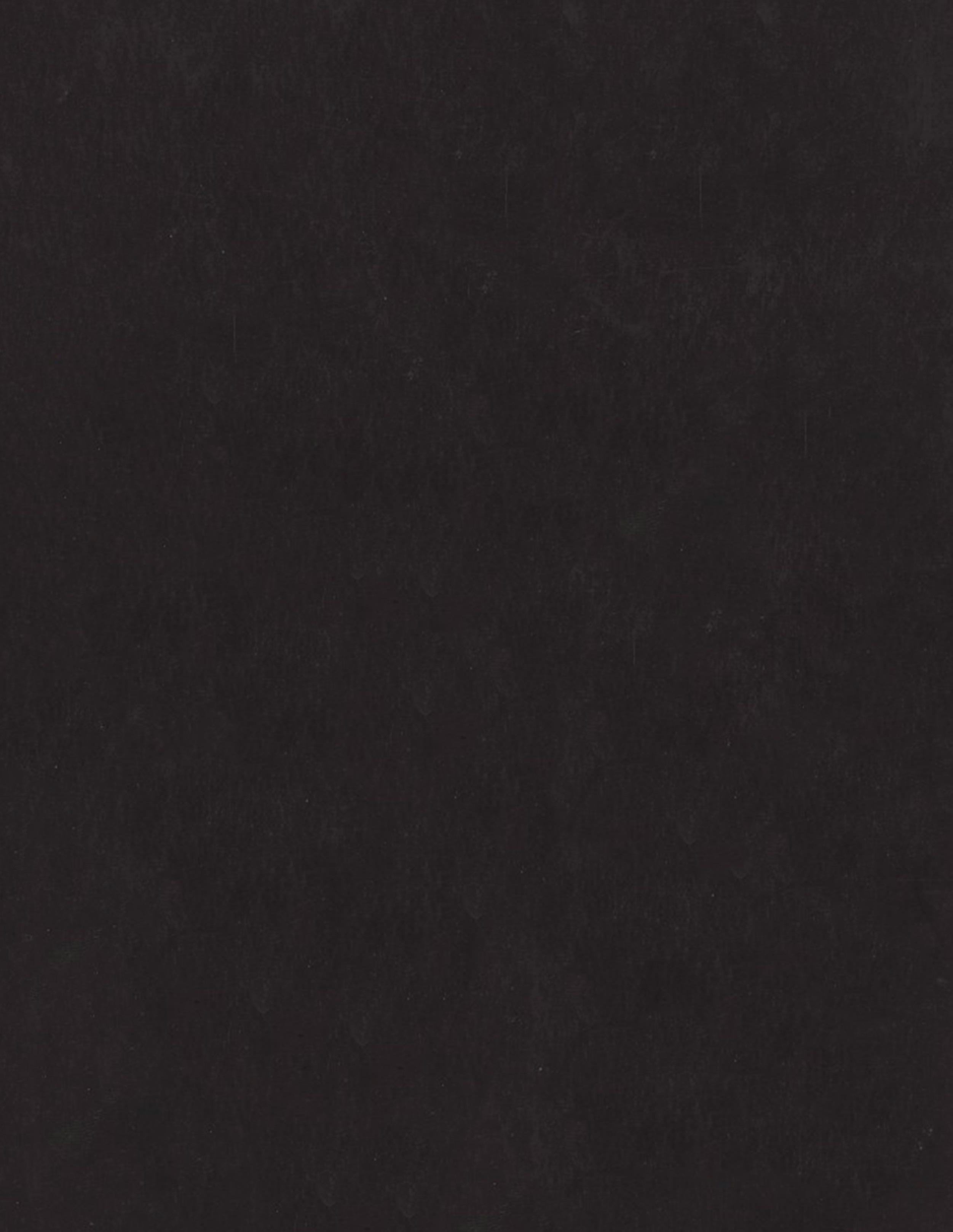
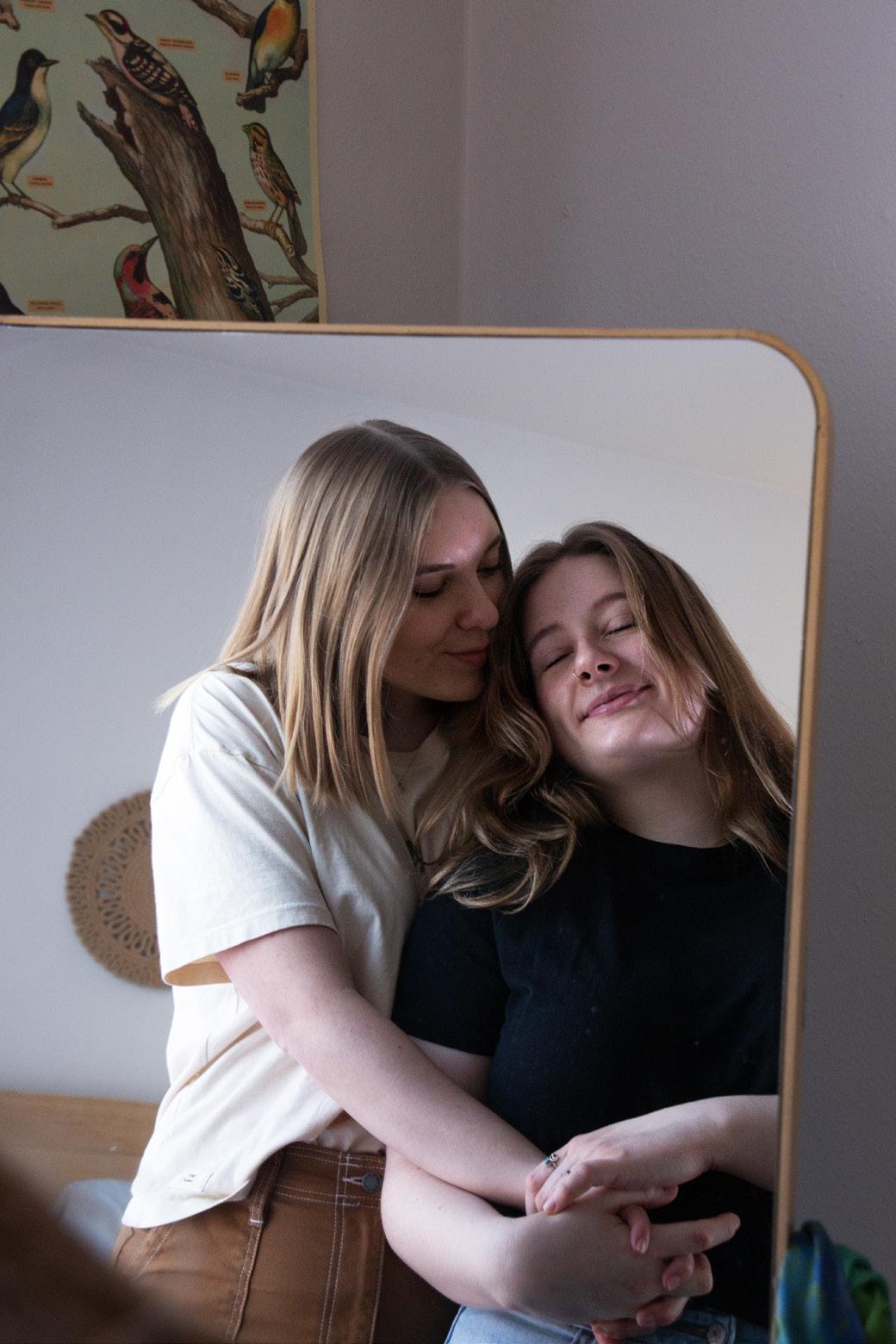
 Meg Bierce
Haley & Emma
Art
Meg Bierce
Haley & Emma
Art
i lay in the dark of the home we share and listen to the tick tick ring of the radiator, like one lone insolent percussionist and i hold you in a bed we keep in the corner so you can lounge comfortably when your back and legs act up
i writhe in discomfort of an antecedent social faux paux in the workplace and i hold you
i think of what a picture we are in our little house with our cats and tiny kitchen whose stove fights with the refrigerator and fairy light bedecked tv alcove where we feed each other our guts and i Hold you and our cars with matching stickers proclaiming every shared roadtrip thrumming down the freeway in waves of summer smog
our cat pins down my legs, on top of the electric blanket I'd used to warm my feet
how special that all mammals gravitate to excess warmth that we might store it in our pockets of fat for a little while and i hold you miracle of fire and ice mine
sometimes queer joy feels like being broke, cold, hungry and being happy anyway
“The female’s individuality, which he is acutely aware of, but which he doesn’t comprehend and isn’t capable of relating to or grasping emotionally, frightens and upsets him and fills him with envy. So he denies it in her and proceeds to define everyone in terms of his or her function or use, assigning to himself, of course, the most important functions—doctor, president, scientist—thereby providing himself with an identity, if not individuality, and tries to convince himself and women (he’s succeeded best at convincing women) that the female function is to bear and raise children and to relax, comfort and boost the ego of the male; that her function is such as to make her interchangeable with every other female.”
- Valerie Solanas (1971), S.C.U.M Manifesto

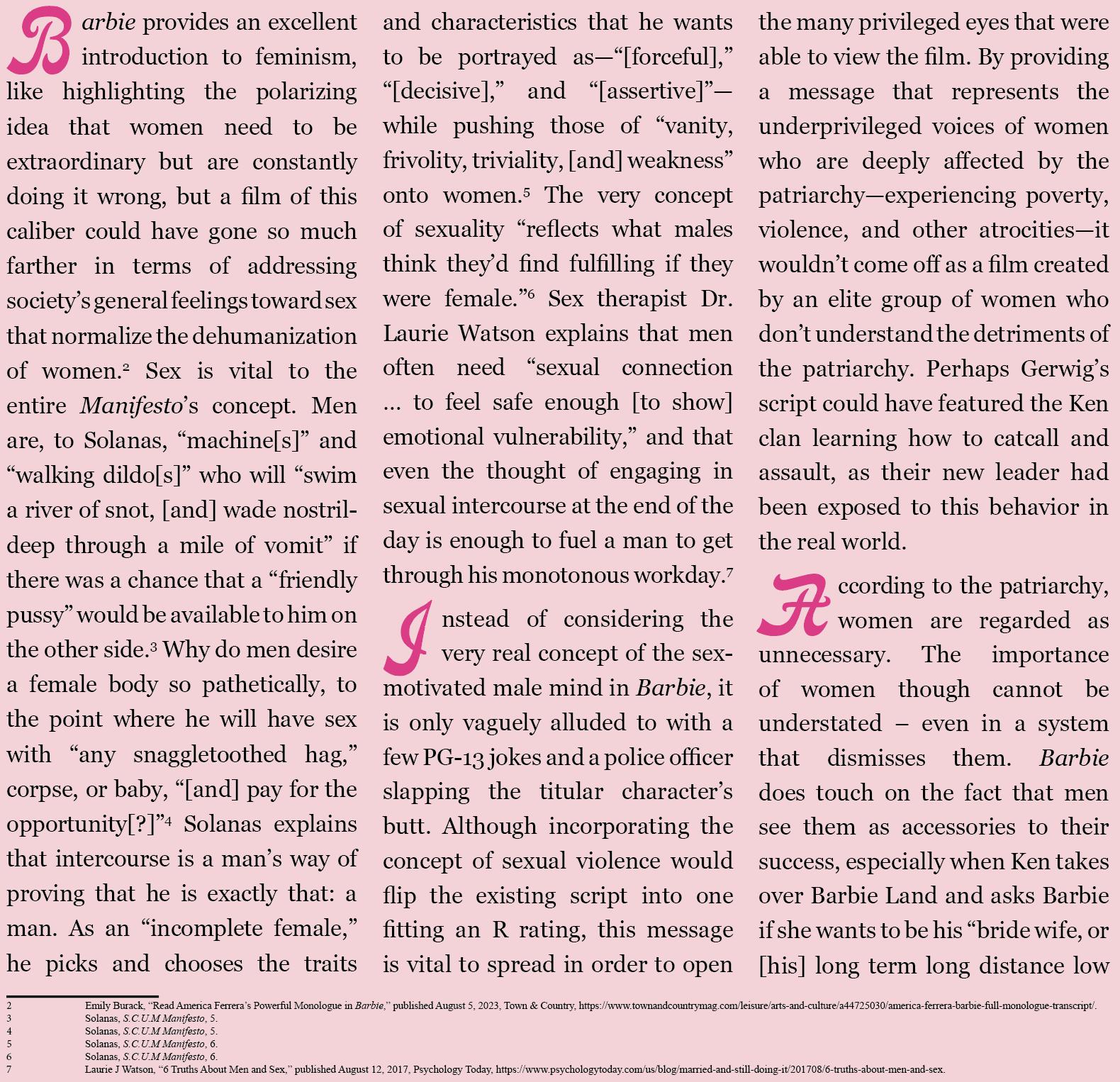


Speculative fiction is used as an umbrella term to describe fiction that departs from realism, meaning,and narratives that present imaginative thinking: fantasy, the fantastic, the future, the supernatural, and more. Often considered separate from formally lauded, ‘capital L’ literature, genres that engage with the speculative—like science fiction, surrealism, fantasy, the dystopian novel, and more—are often negated by literary communities as less proper forms of literature. Yet, as genres blur and merge, engaging in visionary thinking rather than speculation can be found in the idyllic fantasies of realism-rooted romance or hidden in the lines of classical sonnets.
There is considerable and inherent value in the speculative, imaginary, and visionary forms of thinking. Often, science fiction novels tackle the next big ethical dilemma in the tech world. Queer fantasy and Afrofuturism envision liberated futures and express individual agency of narratives often ignored by mainstream media. Speculation is a growing factor in literature and should be further engaged in both academic and nonacademic settings, just as the creativity inherent to speculative fiction exhibits the sort of imaginative thinking needed to challenge

modern day institutions and innovate for a better future.
Furthermore, the theorizing aspect of speculation is rampant in narratives presented as objective: consider newspapers and the rhetoric of political personalities, for instance. With so much speculation in both fiction and in our everyday reality, it is important to know when we are encountering it and what it is trying to say.
Engaging with speculative thinking and creative works that push the boundaries of what is considered normal by the status quo is also a way to engage with themes of social justice since authors can invent new worlds that depart from our reality or envision futures that fix the problems of the present.
On February 21st, the Madison Journal of Literary Criticism partnered with the Alpha Chapter of Phi Beta Kappa to spend a night interacting with the speculative: reading stories about robots, comets, utopias, yogurt, and cat pictures.
Below are some reflections from MJLC staff and attendees of the event and/or addressing the prompt: What do you think is the role of literature in contemporary social justice and activist movements?

Evan Randle
Read: “The Last Question” and “Cat Pictures Please”
Literature can be seen as a reflection of the world the author lived in—regardless of the world the story presents. Yet, as I read both pieces, I was struck by the differences in the worlds of both the authors and their texts. Asimov was born in Russia and immigrated to America as a child; Kritzer was born in the United States, but has also lived in London and Nepal. Similarly, their stories’ distinctive tone, themes, and narrative structure fascinated me while reading. Asimov’s “The Last Question” deftly touches on the human desire for meaning, which has motivated many activists. In contrast, Kritzer’s “Cat Pictures Please” illustrates the daunting life of someone who lives for the sake of others. With such variability, can it be said that literature serves a consistent role in social justice and activist movements? The answer is determined by the most powerful weapon in a reader’s arsenal: interpretation. Some may argue that, if one construes every text in a specific way, they can all lead to a singular meaning. Others may assert that each author’s uniqueness assures that no two pieces of literature serve the same social purpose. The common ground between both arguments is that literature is flexible, and this very same flexibility gives it infinite potential to inspire others.
Read: “Justice”
When Adila, the narrator from Miriam Kaba’s “Justice,” first started to talk about Small Place (SP), it took me a bit to realize that this was a dreamt-up world. When Adila discussed circles, I thought of my bi-weekly Nottingham Cooperative house meetings. I thought of the conflict resolution house meeting that was called to address someone member-shipping last month. I thought of MJLC study group meetings, or maybe a booth at Vintage, surrounded by friends. I thought of a dinner table during a special meal, or a chat around a fire in the summertime. This experience that I had while reading “Justice” reinforced for me the idea that community is where we can practice liberation in real time. Community is one of the few places in life under capitalism’s cruel systems where we can live these liberated dreams. It’s a place of refuge, a warm embrace—a dream-like place within a nightmare world.
Mina Ankhet
Read: “Justice” and “Wild Thing”
The alternative realities dreamt of in social justice movements seldom feel accessible when visualized through the lens of our current reality. Restrictive constructs designed to dictate our lives limit our capacity to question the present and reimagine the future. However, the flexibility afforded by literature enables us to conceptualize how these constructs could evolve to achieve a just society—one that prioritizes accountability over punishment and community over individualism. Speculative fiction, in particular, allows readers to experience imaginative departures from the norm such that radical practices like restorative justice, community-based alternatives to policing, and universal access to healthcare and education appear more feasible—transforming what once felt like a distant, out-of-reach possibility into a future that awaits at our fingertips.
Ray Kirsch
Read: “Justice,” “Cat Pictures Please,” and “The Last Question”
Literature and social justice are inherently intertwined, particularly in the realm of speculative fiction. Visionary fiction, which I would categorize “Justice,” “Pictures Please” and “The Last Question” as, is designed to focus on a social justice issue and end on a hopeful note (as we learned in my speculative fiction class, at least). The idea of placing these issues into a “metaphorical” world— one that can be easily imagined or seems totally out-of-field—makes it easier for me to apply these themes into my real life and think about tangible solutions in the universe I exist in. I don’t find visionary fiction to be saddening or stressful; rather, I find it inspiring and hopeful. Even removing the entire written content—breaking down a piece to just the authors—it can be inspiring to know that authors in this world care about real world issues and want to write about them. Other people have existential crises and other authors are scared of the future; I find that incredibly comforting.
Emily Wesoloski
Read: “Speech Sounds,” “Wild Thing,” and “Justice”
While I read “Justice” by Miriam Kaba, I constantly had to turn off parts of my brain that would react with “well, that wouldn’t work in the real world.” I’d then have to really track my thinking to identify why I thought it wouldn’t work, which so often returned to a wariness or lack of trust I had in other people’s actions. I think what helped me really delve into this process of analyzing my reactions was the line in which the narrator in “Justice” says, “I have to admit though that I had a hard time imagining such a thing as rape happening in our community.” In a community built upon empathy and understanding and wishing for one another to heal, people are unlikely to cause harm. I think that’s when I really understood how deep the concept of “harming one of us harms all of us” ran in SP. After understanding that, I was able to consider what could change about our world to reach that point.
Sophia
SmithRead: “Wild Thing”
This story in particular reminds me how speculative fiction is used as a way to put words to indescribable feelings. This short story is part of a larger collection of speculative essays in the book “If That Mockingbird Won’t Sing.” The book is a collection of stories and perspectives from parents’ points of view. “Wild Thing” is such a poignant piece of speculative fiction because it is so truthful and raw in its fantasy. The mother is caring for a beast who ultimately eats her, which I read as reflective of a mother’s experience having to care for her child, who continues to take from her. The concept of having children not being gratifying 100% of the time is not always talked about, so this story is shocking in its directness. In general, it represents how speculative fiction is often more representative of an experience because there are often no plain words to encompass such a nuanced perspective. Speculative fiction is powerful in that sense, since it grants the opportunity to be extremely transparent about an experience, even if it is veiled in fiction.
Ella OlsonRead: “Cat Pictures Please,” “Justice,” and “Wild Thing”
Thematic elements like AI most often manifest as machines taking over our world or causing humanity to somehow collapse. For the first time, I was reading a tech-spec piece called “Cat Pictures Please,” which features a benevolent conscience within an AI character. It got me thinking: why are we so much more likely to villainize this technology, to assume it aims to cause us destruction? It supposedly knows all of our ethical codes, none of which allow for malice. Why are we, the creators of AI, so certain that greed, hate, or jealousy can be encrypted, or learned through a purely knowledge-based existence? My conclusion is that despite its artifice, we fear that it will become too human. We have seen, are seeing, humanity’s capability for hate, revealing that we don’t fear technology—we fear ourselves. I feel this piece reminds us, though, that the benevolence of the AI is also of our human design. We are capable of good. We are capable of justice. We are capable of love. Our world is a warpath, but speculative works like Kritzer’s give me hope, because somewhere, at some point, before AI there was a person who loved at the price of a cat picture.

a dreamlike place within a nightmare world.

While written stories still hold a strong footing in current academia, publishing and literary criticism, oral storytelling has occupied all kinds of spaces long before written language was conceived. And while written communication may be beneficial for mass dissemination, the act of speaking a story invites the speaker themselves into the forefront with dynamic layers of tone, timing and inflection.
strangers into apartment complexes often void of porch light, Green managed to recreate this feeling of intimacy and warmth from his own home, to standing rooms, to the stages and venues we now see at various Moth events across the country. By expanding that circle from friends to strangers, the Moth features a great variety of lived experiences while maintaining a tone of familiarity and closeness.
hear ten stories from ten people under one theme. Each storyteller has five minutes—with a polite but well enforced cutoff—to present their story, in whatever form, rhythm or tone they see fit.
Anna Nelson, Celeste Li, and Jonathan TostrudThe Moth, started by novelist George Dawes Green, grew out of summer nights spent listening and sharing stories with friends and family under porchlight, gently surrounded by fluttering moths. The illustrative elements of storytelling inspired Dawes Green create a unique platform for such powerful anecdotes to be shared more widespread. While big cities (New York featured the first slam!) crowding millions of
While Moth has now expanded to the Moth Education Program, the Moth Community Program and the Moth Podcast, their original focus has always been on their live storytelling events: Moth StorySLAMs. Designed to showcase the art of crafting stories, Moth StorySLAMs began gathering listeners and shared, true stories in 1997. Now, once a month, in cities across America, various communities gather to
While performing on stage is a feat itself, this event incorporates an additional layer: competition. Groups of audience members volunteer as judges, changing every month, and give each story a rating from 1 to 10. The three groups of judges then total their scores for each performance and crown a winner at the end of the night.
Moth, however, does not provide any judging requirements or guidelines. Although they don’t tell judges how to pick the “best” story, performers are encouraged to present their story in a way that captivates the entire audience; the “best” stories often reveal them-

selves throughout the night The winner of each month’s StorySLAM is then admitted forward to the annual GrandSLAM competition, producing a final winner in that city. Additionally, winners and performers have the opportunity to be guests on the Moth Radio Hour, appearing on local radio stations and podcast streaming platforms. The globally acclaimed radio show curates Moth stories as told onstage, delivering them in connection with one another. But at the High Noon Saloon in Madison, Wisconsin at our monthly StorySLAMs, we are here to gather, first and foremost.
Although many readers here may have not been in attendance, Moth is an experience we have all been a part of. The Moth is you and your friends in the corner booth of a dive bar on a friday night. The Moth is your fifth grade field trip, huddled in the center of a cabin in the Woods. The Moth is meeting your partner’s family over an unrushed, living room cup of coffee. The Moth is a simple embracing of our innate joy for a good story, regardless of the boundaries that
hinder this sense of community from coming to fruition. .
The MJLC was graciously extended invites to two StorySLAM events, with the themes of “Love Hurts” in February, and “Dazzled” in March. In a time of deteriorating third places and over-policing of communities, Madison Moth feels like a haven where people can once again connect. Cast iron beams hang overhead, and old band flyers are plastered on the rustic brick walls or enshrined in an eye-catching wall-mounted display case. A closer look at the flyers will tell you the High Noon Saloon frequently hosts indie and alternative bands. Parties of friends and families huddle around small tables, enjoying drinks from the bar and takeout from the Brass Ring Bar & Restaurant conveniently located just next door. The first night we sat on the mezzanine, enjoying a spacious view of the stage. A charismatic host warms up the crowd and lays out the rules: anyone attending is encouraged to tell their story, as long as it follows the theme. What made Moth StorySLAM events especially unique, I realized, was that the
rules restricted storytellers from using notes.
Some storytellers let their stories manifest onstage, plucking their words slowly and carefully out from under the purple tinted spotlight. An elderly woman wrapped in a homely quilted coat does just that, letting a solemn silence settle and rest over the audience. The other end of the spectrum, I surmised, stood within earshot of me: an anxious young man, muttering under his breath, gesturing minutely in aborted hand motions—practicing for his chance to speak. Startled into action and rushing towards the stage upon hearing his name chosen, he spoke animatedly on stage, drawing laughs and “awws” from those in the room.
Undoubtedly, Moth StorySLAM events are evocative of oral storytelling traditions that transcend different cultures and periods of time. The singular storyteller— vocalizing to a rapt audience—reminds one of campfire folktales; evidently, The Moth stays true to its founding principles. It goes

without saying that, even with oral storytelling, there is a certain expectation of craft and poise in onstage performances. However, the structure of StorySLAM events invites and encourages variety. The prohibition of notes near necessitates that one orates without the safe cover of well-crafted narratives and attractive prose (I treat the rehearsing man as an outlier). In other words, the stories one encounters at Moth are astonishingly raw, spoken with great candor. After all, these are personal stories, just as their website states: “Moth stories are true, as remembered by the storyteller.” And the practice of randomly choosing contestants really means that you hear any kind of story. There is great reward and value to be found in these storytelling events, where anyone can realize their narrative before a captive audience.
Of course, this isn’t to say that Moth StorySLAM events are without their barriers. Upon walking into the event, I had been struck by how white and well-off the audience seemed.
Needless to say, Madison is a predominantly white city; it is neighbored by and holds some of the wealthiest communities in the state.
But for a storytelling event that seeks to build community, I’d expected much more of a diverse crowd than what I was faced with.
venue with a cashless bar—Moth caters towards a middle-class crowd. The Moth isn’t responsible for the financial policies of its venue, nor can it dictate the audience it draws; but all the same, the StorySLAM events hint at a sterilized, white, and milquetoast landscape of community events within Madison. For a city with a history of white flight and redlining, this is an indictment of complacency within our local community.
Nevertheless, one can’t deny the Moth StorySLAM is something incredible. Held for nearly a decade within Madison—with its own student organization in the university—Moth StorySLAM is a bastion of grounded and authentic human connection, where local community members and students alike all partake in live self-expression. Where usually these forms of storytelling are reserved for nature outings and 3AM ramblings with confidants, by widening that circle from close friends to strangers, the Moth features a great variety of lived experiences while maintaining a
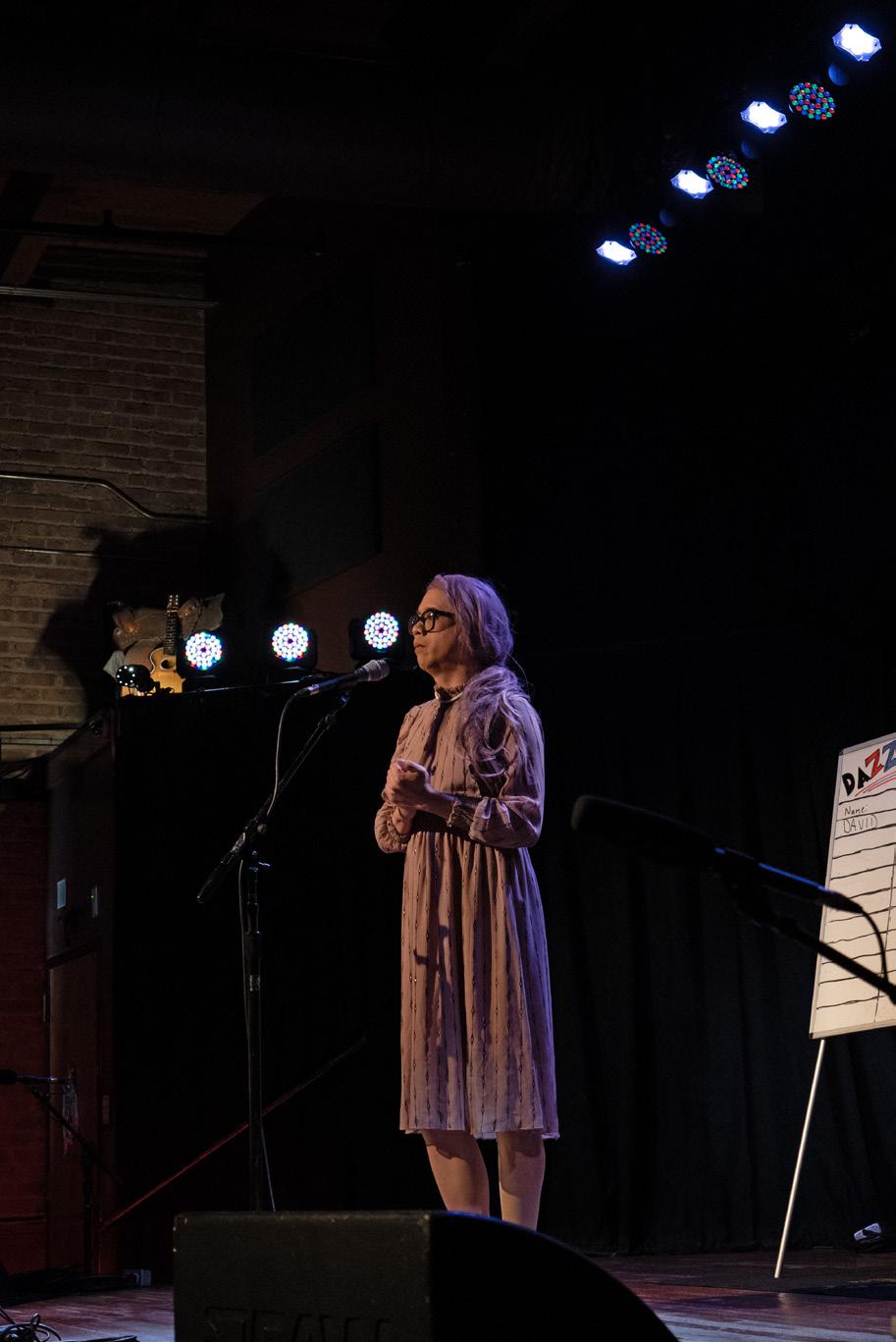
— through both tragic tales and heartwarming stories — is a fervent, tangible reminder of the beautiful medium that is storytelling.
The Moth is you and your friends in the corner booth of a dive bar on a friday night. The Moth is your fifth grade field trip, huddled in the center of a cabin in the Woods. The Moth is meeting your partner’s family over an unrushed, living room cup of coffee. The Moth is a simple embracing of our innate joy for a good story, regardless of the boundaries that hinder this sense of community from coming to fruition.
tone of warmth and homeliness.
On closer inspection, this isn’t entirely without reason. Held on Monday nights at a hipster-y
At the very least, lending an ear to a roster of complete strangers lending a piece of themselves to those in attendance that night
The second StorySLAM the MJLC attended, “Dazzled”, invited us to relish in those moments where the glitter was too bright, our jaws dropped, and we wore rose-colored glasses. “Dazzled” showcases such moments of feeling dazzled by someone, or something. A wide range of stories were shared, such as the trivial matters of a troublesome bedazzled suit jacket at the high school prom, a recounting of the timeless thirteen minutes
during which your twin daughters are “one year” apart, attending the Oscars through a stroke of luck in a sweepstakes competition, or being invited to compete on the show “Jeopardy.” Regardless of whether dazzled was a haunting or exceptional experience, one thing remained consistent: it was unforgettable. A memory solidified, perfectly ripe for sharing at the StorySlam.
I attended the event on behalf of the MJLC as a judge for the competition, and throughout the event found myself connecting dazzling with dreaming. After all, how different are the two concepts? To be dazzled is to live the best-case scenario of something, to dream is simply imagining it. Both should be closely akin to ‘perfection,’ or ‘ideal.’ But something was missing. Yes, in every story, something incredible happens to the storyteller.
You take Nate’s story, of his ambition to become the class speaker at graduation, after struggling with socialization and learning disabilities through all of schooling. Finally achieving his goal left him dazzled’, but came at a cost. There was struggle, trepidation, ups and downs, and the eventual triumph.
Or Noelle who, as a child, was mystified by her father’s uncom-

promising preference for gold over silver. It was something she never understood until one alarming experience revealed why. Her father had left her fast asleep in a car just outside of a thenclosed corporate building with a backroom casino. That very car was broken into, and Noelle’s screams were audible to her father inside. Shots rang out in the air, but all Noelle remembered was the sight of broken glass shards peppered on the road, and the stark silver color it reflected. This must be the silver that her father avoided relentlessly. The silver of his past life, of violence, one which he would never settle for. Gold draws and dazzles, materially prized, but conceptually invaluable. Noelle’s father’s idea of gold falls short of reality.
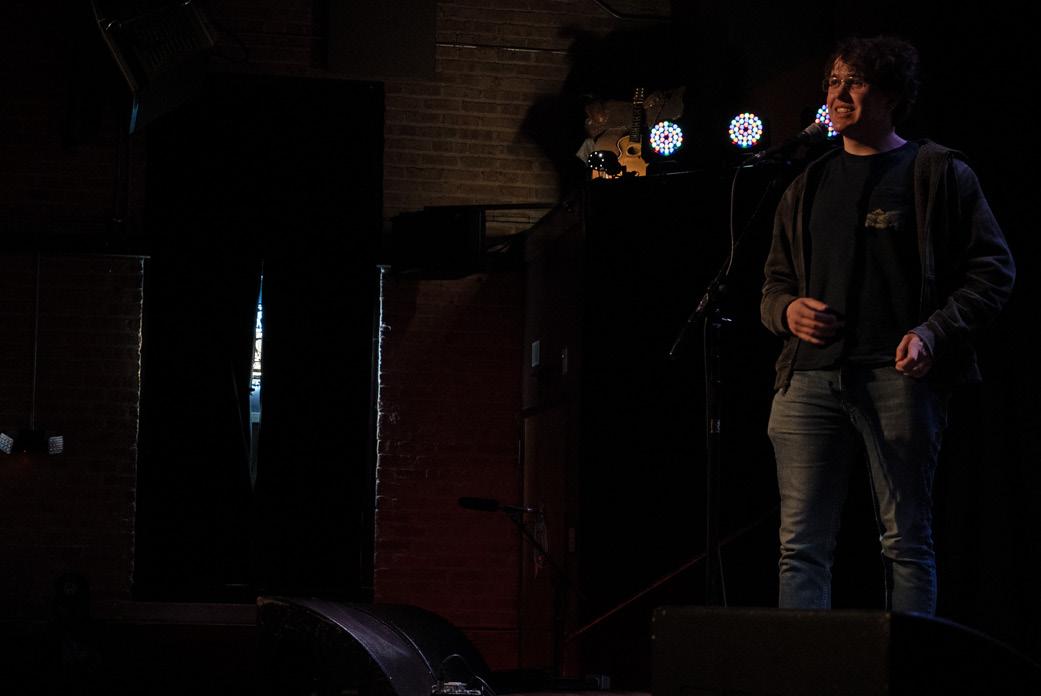
I found the event itself to possess a unique quality, one not easily replicable. Standing on a stage speaking
vulnerably in front of strangers is surely a nervy experience, taking nothing short of dumb bravery and superficial confidence. But the very environment, the regulars, happy to hear this month’s hodge-podge of stories collected from all over the world, the newcomers, eager to immerse themselves in each stranger’s life from the first word to the ringing of the bell for time’s sake. Drinks served, bartenders tipped, everyone not quite sober but not fully drunk. Everyone was there for the same thing in slightly different ways- a strange thirst only quenched by the stories. The stage performance is transformed, not dissimilar to the feel of a hushed late-night conversation in a dark corner of a favorite bar with close friends. Every story aims to narrate a part of life which someone may not fully know, and this narration might not guarantee a crystal-clear meaning. But to share the stories, the ups and downs, with familiar strangers, is what keeps us, and now me, coming back to the Madison Moth story slam.


She wanted to be like Eve, born from wishes on stardust, made for healing dreams, a diamond of purity, given eternal love.
She wanted to be like Eve, gifted greater life, promised with purpose, the angel of opportunity, offering endless hope.
She wanted to be like Eve, spun from faith and truth, bound by honest virtue, creation at her fingertips, holding infinite power.
She wanted to be like Eve, locks of glittering gold, tears reflecting moonlight, eyes with irresistible glare, feeling truly desirable.
She wanted to be like Eve, beloved and precious, delicate and sweet, beauteous and fair, deity of femininity.
She wanted to be like Eve, Adam by her side, God devoting praise, Eden’s state of mind, in paradise.
Love, peremptory, bound to wishes, that weren’t her own, chains of virtuous chastity, she wanted to be free.
Hope, tightly grasped, her treasured purpose, dreams at dusk beyond, gifted empty promises, she wanted to be free.
Power, honest dishonesty, imbalanced necessity, if she had power, creation at her fingertips, she could be free.
Desirable, locks of capitalized gold, tears drowning moonlight, eyes a bitter glare, displayed flesh, she wanted to be free.
Femininity, escaped disguised inure, reenvisioned her control, deity of will. she wanted to be free. Paradise, chance of choice, Pandora’s world, she took the fruit, she wanted to be free.

Carrying a metal cigarette box and a cheap plastic lighter, forcing her to attempt two tries before the end took to the flame. She was taken, on occasion, by the temptation of smoking her cigarette backwards, in part to feel something different, but mostly to feel less indifferent. She shivered from the dreadful northern winds, and contorted her body in manifold sorts of unseemly poses.
Ensconced on the bridge’s handrail, Rosalie woefully declared: “I think I am going to miss this.” Mal stared at her for a second before facing the river. “Then don’t go.” Her tone was cold, but she knew Rosalie would not interpret it as such. “I would not have anything to miss if I didn’t leave. And I think I like having something, or I guess somewhere to miss.” She had a quiet optimism, this rather fortunate and intangible quality, one Mal longed to see more in herself. Rosalie was not an idealist; yet realism did not fit her either. She was an observer. Plain and inconspicuous. Someone who noticed things, and talked about them as they were, with as much keenness and passion as she would anything. Colours, the winter rain, jazz. To Rosalie, beauty was the same for everything: it did not feel real. Mal held back from contesting. It was the first time in a long while the urge to argue was disposable to her, filtered in as second nature. Instead,
she mapped the scene in her eyes. She strained to remember this last instant before the memory of it became solely memory. Rosalie sensed her sorrow, like a companion to loneliness, and whispered: “It is
Mal’s tear ducts were soaked, ceding control to a maelstrom of suppressed sentiment. “Why are you doing this?”
She knew the immanent negligence of holding Rosalie back, but the promise tied to the gnawing loss of their shared intimacy, and shared places that would not, even for the sake of time, recover, conferred her with a queer, confrontational courage – one scarcely bound with grief. “I saw you work yourself to death for five years, is this really what you want?”
Rosalie waited for Mal to calm her agitation, then proceeded her thoughts. “We’ve discussed this already. There is nothing left for me here.” Emotions crept up, heaviness percolating through the surface of her timbre: “I have spent my entire adult life trying to get something started here.” Her voice felt brokenin, waiting for someone to shut its doors. “And I have nothing to show for it! An actual lead… People wait years for it, they yearn for it, and with true fervour and ardour. I am not going to abandon this for the sake of comfort. I am so tired of being comfortable.” She paused to slowly protract the final blow, “I simply do not know what I would do to myself if this doesn’t work.”
Mal simmered in her pain, and after a long drag replied: “You don’t need to succeed to be important.”
Rosalie was now the one feeling exposed; they worked as equilibrated seesaws, with one losing composure as the other gathered some. “I know. But there is a difference between wanting and needing to succeed. I need this because, well, because there is not a thing in the world that could make up for it. Dreams aren’t as easy to realise as they are to imagine. Once they come into reach, only fools dare not extend their arms.”
Mal could not bear listening to Rosalie, since her own speech was brewing with blatant insecurity. “There are other things too,” she remarked discreetly.
Rosalie lost patience, and quipped back “Such as what, exactly?”
As hostility garnered on both sides, the smoke felt deeper, like daggers of warmth, clung and prickled into their throats; except none of it was warm. Their familiarity with each other evanesced, morphing into the visceral mourning of vicissitude. The felt-in, lived discomfort of undesired change.



Mal’s reprise, her attempt to grasp at Rosalie, took the form of a tender clumsiness: “I am not too sure. There isn’t really much to be sure of now.” She clasped the metal tightly, as if it were an illicit embrace. This moment, the very aspects of it, had lived on too long.
Mal – adept of the senseless all the while fearing it greatly – populated her thoughts with the complexities life offered her; the irrationalities, the ambivalence and the broken resolutions thrown onto her without her asking for them. “We used to be able to do things, and be things. Now, everything feels cruelly transactional; in the most despicable and clandestine of ways, life became an immutable exchange between love and ambition, or sacrifice and success. I mean when you think about it, our dreams, their natures and their intrinsicness, they haven’t changed. When has modesty and diffidence become so essential to the fabric of our innermost desires, our insecurity, and the resignation of our imaginative
faculty? Maybe I just want to understand when it all had to change.”
Mal paused for an eternity. Rosalie, in the backdrop, took eternity and wrapped it around her, and let it lie there for even longer: “I can say for a fact I don’t know. I am terrified, and afraid, and sick, I mean really sick to my gut. I already feel as though I’ve lost something I have not had yet.” Mal in turn came to contain a subsumed contrition, “It won’t go away. Leaving, I don’t think it will change or fix, at least not in the recesses of your mind.” In her doubtful momentum, she allowed herself a chrysalis; a frozen, encased, temporal place of deep sadness. “I’m sorry. To my core, I wonder… Sometimes, I find myself submerged in the dark, and I think about why I cannot feel joy when good things happen.”
“It happens to me too,” said Rosalie. Her lips moved like a film dissolve, more hazy and slower than usual.
“I love you.”
It seemed quite strange to Mal, how people said I love you. There were too many roundabout manners to go about it. Or around it. There was the surreptitious ‘love you’, which often echoed a ‘love you too.’ Or the earnest passion and sincerity of ‘I love you’ of which the answer could be a halved ‘me too,’ three-quarters of ‘I love you too’ or a desired, urgent, full-bodied ‘I love you’ in response. Anyways, it was apparent, there was a reluctance to countenance the ‘Love’ verb, a wilful resistance and submission to it.
Mal knew there were emotions and words she could seldom access. Words, granted weighty ones, were just words. But she also knew today, resistance was reaction. It was not passive nor belligerent; for it was peaceful, like a passing cloud drifting, untethered, delivered by the earthly sky. In the minutiae of everyday life, all that was left was to let it roam.

 by Lance Li Nonfiction
by Lance Li Nonfiction
*These reviews are free of any plot summary, but not exactly of spoilers, despite efforts.
Bella’s Travels, or Toddles into Several Uncanny Valleys of the Patriarchy Poor Things (2023)
Yorgos Lanthimos is to David Lynch what psychodynamicists are to the psychoanalysts: they gleefully sledgehammer you in the head with ideas and imageries that you’ll be repulsed by and that they’re narcotized by. But while Lynch anesthetizes you, entrances you, pulls you down into the hypnotic abyss of unconquerable fears and salacious desires, Lanthimos lifts from our dreams what’s censored and buried up into the stratosphere, transliterates it, extenuates it into something cartoonish; they crave for our revulsion and pleasure alike, but instead of selling us quaaludes, Lanthimos fishes for them.
Adapted from the namesake Alasdair Gray novel, Poor Things
doesn’t transcend our political expectations, but statement films rarely have the idiosyncratic vivacity of an absurdist burlesque. The pleasure isn’t venereal exactly, rather it’s closer to comic-bookish. By oversaturating the film’s sex without the etiquette of voluptuousness, Lanthimos has fermented our arousal into a passionless levity: none of the usual foreplay or voyeurism to entice or manipulate us. There was no makeup for Bella, or too much of it that it comes off as more deviant than attractive (even her twitchy winks––a nod to Metropolis––were robbed of Maschinenmensch’s lewdness). Her sex scenes were so utterly lacking in illusory allure that the excess overwhelms any potential rapture from the viewers, who were instead disturbed by the violence and lovelessness of it all. The idea was to take the cinematic form of sexual objectification and turn it on its head. We’re not meant to be drawn into the maelstrom. Just the contrary, we’re the alien race observing the mating patterns of these lab rats under the fish-eyelense microscopes; their emotions
escape us, but their eccentricities amuse us.
Supplying this gothic unearthliness masquerading as porn with a knack for visuals, Robbie Ryan, the cinematographer, gives us the bubbled eyesight of an infant in a stroller. The portraits have the disorienting saintliness of stained glass (everything that’s not in the center focus is giddied out of the frame), and the sense of movement has a life of its own. Our perspective zooms in on the characters’ faces from miles away, and then backs into the wilderness again, pans left and right, and spins like carousels. Only when we are taken aback in awkward situations, then do we move back out within the vignettes to give us the feeling of claustrophobia from peeking through the keyholes. It matches the visceral sense of play and curiosity of a child.
Played by Emma Stone with her parodic high-class ‘received pronunciation’ accent, Bella Baxter is the concoction of George Bernard Shaw’s Eliza Doolittle and Mary Shelley’s Frankenstein’s monster, with the former’s love-hate spirited defiance against male

masters, and with the latter’s existence being the artificial creation of a fatherly yet humanly ‘God.’ The idea of her, in the way this film presents it, is dilemmatic by way of Shere Hite: the making of an egalitarian sex-positive feminist utopia requires both a literal-minded childish innocence undiluted with the self-rationalizing corruptions of the adult world, as well as a coming-of-age that requires the experience that adulterates her physical purity to make her understand the politics of sex and exploitation; between the premature sexual awakening and a vision for sexual equality, one can’t go without the other.
You start to slowly roll your wrists and ankles. You extend your arms above your head and stretch your entire body out. When you feel ready you prop yourself up and open your eyes to see a large black widow perched on the wall to your left
Emiland KrayThe metaphorical power was accompanied by a shift in mood and tone. We came away from a whimsical sense of wonder, and stepped into a caricatured groundedness in a faux-Victorian world of men, all trying to dominate Bella’s body––each emblematic of the respective personalities of patriarchy: apollonian paternalism (Willem Dafoe), dionysian depravity (Mark Ruffalo), silenian defeatism (Jerrod Carmichael), and fascism (Christopher Abbott). It’s supposed to flow like wind from the “mad north-northwest”, carving and molding shapeless rocks into ventifacts, carrying things through to their natural,
The metaphor itself wasn’t designed persuasively like an allegory, but we understood that it isn’t trivial either. Can the mentally adolescent but physically (and legally) mature, for example, have the capacity to give meaningful consent in the real world? Should they be allowed the right to have sex and seek pleasure without harm coming their way? This play on such a subject as pedophilia rightfully doesn’t make the message any easier for some to grasp or accept, but the thought experiment nevertheless, in its double-entendre ways, works.
A slightly ill-suited commentary on digital culture. At first, it seems that the “dream epidemic” gimmick serves only its eerie absurdist comedic functions, but the movie wasted no time to inform us that it’s actually an internet analogy. The people who dreamt about Nicholas Cage’s character were so upset by what they think he did to them in their dreams that they’re not willing to even contemplate the possibility that the real Nicholas Cage, a middle-aged biology professor most of them have never even met in reality, is innocent: to them, those nightmares might as well be real, because the psychological harm was real, and the behavioral nausea was real, and it can’t matter to them whether it’s a perpetrator-less crime in reality because they’re nevertheless hurt by a figure resembling him in another “reality”. Someone has to be the goat. After all, nuance would be dysfunctional to the message that it’s us the consumers and bystanders who were too selfassured of our innocence and unwilling to self-doubt.
Here, dreams, like the digital space, bring to the surface an irrational thirst for vengeance, and the power of having an identifiable figure as the target
for punishment; they unleash the animalistic instincts in us, and render traditional virtues like respect and mutual understanding out of fashion. The comparison is so unsubtle that it isn’t so much an exploration of dream logic as simply dreams for the analogy’s sake: Cage’s appearance in others’ dreams isn’t purely accidental. At the same time the internet spreads certain information it devalues it (in the case of this movie, a person’s identity). Many of us may have heard of names or seen faces in digital media, but we wouldn’t consciously encode all these staggering amounts of information in our brains, so they get quickly buried in our subconscious, waiting to be brought back and haunt us when the lights go down. Digital media represses thought by providing too much stimuli, and we end up as the puppets of media manipulation, the victims of our own hysteria. At some point, when the general public in the movie have discovered a way to appear in someone else’s dreams, we’re forced to wonder if these dreams, the final defense of our inner psychological privacy, can still be really “dreams” any longer. It seems to be saying that in our fanatical pursuit for information and simulation, the digital space is on the brink of making dream/reality and human affinity/privacy all but obsolete; now that we’re masked with
‘anonymity’ and ‘relevance’, in what direction are we taking our society?
Insofar as it’s an indictment of cancel culture, this analogy is somewhat of an overreach. It suggests that the only crime that the fame-seeker commits is simply by (accidentally) existing in the public consciousness, not really something by his own choice or design, and the only salvation is in his ostracism and irrelevance. The Cage character is sympathetically pathetic, and the haters are hopelessly repulsed by his hidden Freudian perversity, despite the fact that it never manifested itself in reality. By turning the deeper corners of a person’s consciousness into a public domain, we unlock his own secret scandals for the general public to prey upon. The ending left no resolution because it didn’t want to leave us with anything like a moral comfort zone to settle on; the strength of the film lies in its power as a cautionary tale. However, it’s still a poor narrative choice to leave everything with a whimper. It’s not that Kristoffer Borgli forgot that there’s such a thing as subtlety, but that he’s intentionally letting the messaging take over.
… Exactly.



Novels, short fiction, and poetry that speculates, envisions, and creates a better world. Stories that subvert, question, and challenge the status quo.
“We can, however, exercise control over our own actions. We can give ourselves the unconditional love that is the grounding for sustained acceptance and affirmation. When we give this precious gift to ourselves, we are able to reach out to others from a place of fulfillment and not from a place of lack.” - Hooks, page 67
“Because he rather liked people… They’ve got what we lack. They’ve got imagination.”
- Gaiman & Pratchett, page 9





“It is beyond the power of artists alone to create a new social function for art. Such a new function will only be born of revolutionary social change.”
- Berger, page 23
“You live to water yourself and your dreams only, / You’ve forgotten that we all share a collective one - / where everybody can quench their thirst, / has nourishment, and is free from occupation…” - Lynzi
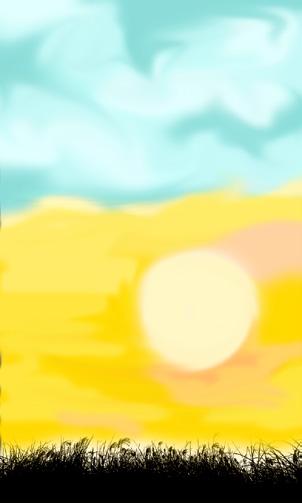
“The erotic is a measure between the beginnings of our sense of self and the chaos of our strongest feelings. It is an internal sense of satisfaction to which, once we have experienced it, we know we can aspire. For having experienced the fullness of this depth of feeling and recognizing its power, in honor and self respect we can require no less of ourselves.” - Lorde, page 1

































































As always, it is more than necessary to have a separate letter of acknowledgement to properly thank the entire ecosystem of support it takes to produce this publication. Over the course of the past two years, there have been countless individuals who have worked tirelessly to support our mission; and over the course of the past semester, had an amazing team of people who have worked on this edition. We are grateful for the continued aid and support of the L&S Honors Department and the UW English Department. For this particular edition and semester, we would like to extend our gratitude to the Associated Students of Madison and their Grant Allocation Committee, ASM Financial Specialist Makenna Kull, the Evjue Foundation, and the University of Wisconsin Foundation for facilitating grant proposals. We are also thankful towards WSUM 91.7 for their support in helping us produce The Abolitionist Roundtable podcast, to the Alpha Chapter of Phi Beta Kappa for co-sponsoring our speculative fiction event, and to Noelle Pabillo Mariano for providing us press passes to the Moth in Madison storySLAM. This past semester we were lucky enough to attend and cover the Association for Writers and Writing Programs conference alongside three of The Moth’s StorySLAMS in Madison. For those experiences and all those involved who made it possible, thank you. Finally, we are grateful to UW-Madison Student Affairs for recognizing our group in the Spring 2024 Bucky Awards and to the Wisconsin Historical Society for their collaboration with us in hosting our release party. “Appreciative” does not begin to cover how lucky we felt to work with such amazing individuals and groups to create spaces for abolitionist praxis in our community.
Our publication is nothing without our faculty sponsor Erin Polnaszek Boyd and mentor Ingrid Diran. Over the past four years both of these women have dedicated their time, creativity, and support into caring for the individuals involved in the MJLC and in inspiring the research that started this entire
project. Together, they have taught us to be incessant in our questioning, holistic in our perspectives, and generous in regard to the love we show ourselves and one another. These women entrusted us with a publication; and, in doing so, changed both of our lives. Thank you.
The MJLC is first and foremost a study group. Together, we make a magazine. We are beyond thankful to our growing collective for showing up each Tuesday. For inspiring us with their insight and demonstrating how it is more than possible to be activists, advocates, community members, leaders, and go above and beyond the minimum criteria for civil/political engagement—all while being college students. In a turbulent world, our study group’s dedication to social change has always served as a beacon of hope. To our collective, thank you for your brilliance and for trusting us. We are so excited to see where you take this group in the future.
To our contributors, thank you for sharing your work with us. Editing, reading, and viewing your creations was truly a joyous process. Art, as a medium, has always been a political act. Your bravery in continuing this tradition moves us every day. We are honored to be sharing your work in this collection. Finally, we need to do more than simply acknowledge our team, our staff, our lovely, unconventional group, and our found family. From the very beginning, our team signed on to the MJLC not fully knowing what this would turn into and not knowing the two of us. Over this past semester, we have grown, traveled, learned, and cared for this journal and for one another. Over the past two years, we have dwelled in a realm of organized chaos together, grown to create a space and platform where critical engagement with narratives can occur. We’ve gone farther than all of our wildest dreams. We would like to thank our spectacular team this semester: Landis, Ella, Sophia, Quinn, Jonathan, Emily, Cree, Ray, Will, Aspen, Mary, Lexi, Mina, Celeste, and Eleana. You all allowed the two of us to chase a dream. Together, we created an even better one. Thank you. Thank you all. We are so excited to share this edition of Madison Journal of Literary Criticism with you all.
Charlotte Knihtila is a freshman at the University of Wisconsin-Madison who is planning to major in art. She was born in Arizona but has lived most of her life in Wisconsin. Knihtila strives to make the most out of life and what is given to her. She is a hard-working individual who wants to make her family, and herself, proud. While being a creative person, Knihtila also has a passion for utilizing technology in her practice. Since realizing her creative and logical passions, she has created works based on relationships between humanity and technology.
Charter Weeks has been photographing for 50 years. He studied with Harry Callahan at RISD. Ran a commercial photography business in NYC serving commercial and editorial clients including New York Magazine, major record labels and advertising agencies. He lives in Asheville North Carolina with his wife, the poet Marie Harris. Weeks’ work is primarily documentary and includes projects in Asia, Africa, Europe and the Americas. His Books include Prosperity Gospel: Portraits of the Great Recession and Travelogue.
Chloe Henry’s Dream or Nightmare? was inspired by real dreams that Chloe has had. At first glance, the piece appears to be playful and surrealist. However, as she continued to create the piece she realized that all of the dreams she included were portions of her nightmares. The work is made on 18x24” paper with numerous black markers and ink due to the difficult medium of waxy paper; This medium conflict contributed to the “nightmare” theme of the work. Through exploring dreams, she found that while opposing, nightmares are necessary. They work in tandem-- it is nightmares that truly encourage us to dream.
Daniel Mirer was born in Brooklyn, New York, and currently resides in the Bay Area of Northern California, where he works as an artist/photographer. Mirer received his Bachelor of Fine Arts from Pratt Institute and his Master of Fine Arts in Photography from the California Institute of the Arts. Mirer has participated in artist residency programs, including the Whitney Museum of American Art’s Independent Study Program, the Bronx Museum of the Arts Artists in the Marketplace, the Regional Central American & Caribbean Contemporary Arts Forum in Honduras, and the Baxter Street Workspace artist residency.
Emiland Kray
, is a visual artist working primarily with book arts and game design to investigate the complexities of memories and dreams by manipulating our attachment to nostalgic forms. He began his artistic career by living and working in Las Vegas, Nevada and in ‘20 he received his BFA from the University of Nevada, Reno. He has participated in group shows nationally since ‘16 and has had solo shows across The American Southwest. Since then, Kray continues to make art with a focus on community involvement and has graduated with his MFA in the Spring ‘23.
Erika Lynet Salvador, born and raised a Filipina, is an incoming first-year at Amherst College. Her visual art, usually using oil, watercolor, and ink, are featured or will soon be featured in the *82Review, the 3Elements Literary Review, and the Quibble Lit. Additionally, she is the cover artist for select issues of the Remington Review and the Haunted Words Press. She also explores film and phone photography from time to time and is an avid reader of free-verse poetry. See her art at @bodeganierika or https://linktr.ee/salvadorerika.
Gabriel Lange Salud was born in Salt Lake City, Utah and lived most of his life in Milwaukee, Wisconsin before moving to Madison for University. He is now 22 years old, and drawing has always been a passion in his life. He enjoys watching cooking shows, studying psychology, and speaking Italian. The artist was inspired to reflect the act of dreaming, attempting to display a surreal aesthetic to the piece overall. If the artist wanted you to walk away with one thing, it would be the idea that dreaming is never wasted effort, very possibly even necessary to one’s life.
Jacqueline Wisinski, at 15, embarked on an entry-level film photography class, prompting her and her mother to scour local Goodwills for a camera. Cycling around her hometown of Stevens Point, Wisconsin with a childhood friend, she fondly captured familiar places. If asked about her first love, Jacqueline recalls that moment. A second love flourished in the agronomy field, merging mystery, dedication, and storytelling. Initially envisioning these passions as separate, a UW Madison documentary photography class revealed her favorite artists engaged in multiple professions. Her time as a student in this class made her realize she could embark on both disciplines, becoming an observer in her alternate profession.
Katie Hughbanks is a writer, photographer, and teacher whose photography has been recognized internationally, including two honors from the London Photo Festival. Her photos appear in various publications, including in Peatsmoke Journal, In Parentheses, L’Esprit Literary Review, New Feathers Anthology, Glassworks Magazine, Azahares, MAYDAY, Moonday Mag, and Black Fork Review. Her poetry chapbook, Blackbird Songs, was published by Prolific Press in 2019, and her short story collection, It’s Time, will be released by Finishing Line Press in July 2024. She teaches English and Creative Writing at Assumption High School in Louisville, Kentucky.
Meg Bierce is a junior at the University of Wisconsin Madison studying art. Their work focuses on queer issues and aims to normalize queerness in everyday life. These photos are from an ongoing series of queer couples, encapsulating the idea of dream by representing queer folks in their natural states, loving each other, and dreaming of the future.
Riley Haller is a 22 year old senior art education student at the UW-Madison School of Education. Originally from Hartland, Wisconsin, she was compelled to submit artwork to the MJLC because of Cree Faber and Ria Dhingra, who both have been a lovely supporting force in her creative and personal life. Her piece, titled “Explorer”, is inspired by the practice of Lucid Dreaming, where people often choose to fly or explore things they may not feel confident exploring in the real world. The subject in the work is looking out at something the viewer can’t see, ready to approach it with a confidence she may not have in real life. It’s meant to inspire you to carry some of that empowerment into everyday life.
Tripathy is a 21-year-old from Lakeville, MN majoring in neurobiology. In his free time, Shashwot enjoys people-watching, playing guitar, and watching nature documentaries. He primarily uses ink as a medium (so satisfying), but also started drawing digitally after spilling an entire jar of ink on his desk (not satisfying). He uses drawing as a way to take strange scenarios that pop up in his head and bring them to life. Shashwot’s muse is his dog, Hobbes.
Steve Qi’s piece contains the stele, a signature part of Lisa Link Peace Park on State Street. The photo was taken on a Saturday night on State Street when the streets were full of chaos: screaming and shouting crowds emitting anger or joy. This part of the peace park is at contentment, as the lavender light covers the stele with a touch of surrealism. It almost feels like the butterfly painted on the back of the wall is slowly flapping its wings, under the gentle gaze of the woman, falling on the steles that watch over the crowds of people passing, observing everything passing by under the merciless power of time. As they collectively whisper the unachievable dream for humanity, as wars are happening at this very moment: “May peace prevail on earth.”
Aelia Chang is French and Taiwanese and currently a first-year History of Art and English Literature student at the University of Edinburgh. Having turned the ritualistic, apocryphally-worshipped 20 years old, she feels the theme of dreams lives in close proximity to the loss of childhood, and the masked pain of coming to terms with the fact of perpetual adaptation. Dreams, as inherent and salient as they are to human desire, crucially bind relationships and have the capacious ability to create rifts between them too. It is thereby vital for her to decorticate the logic and simultaneous irrationality behind such painful realisations.
Annika Thiel is a high school student from southeastern Wisconsin. She was born deaf. She is learning to write visual poetry in American Sign Language. Thiel writes to bring awareness to disabled experiences. “Nostalgia”
AS is a student at Madison. Growing up in Asia, AS had been very into reading since he was young. His favorite Author is a Japanese author, Yukio Mishima. This work of “Apocalypse” tells a story of a young boy and an Omni being. The entire story was surreal and dream-like. It was heavily inspired by the anime “ Neon Genesis Evangelion,” where the boundary between everyone disappeared at the end of the show. Because of it, the world was destroyed. At the end of “Apocalypse,” the same thing happened. The Omni cat granted wishes to everyone on the planet; therefore, the world was destroyed.
Evan Randle is a first-year student at the University of Wisconsin-Madison. He is currently studying English and Political Science and has an interest in speculative fiction’s ability to mirror political realities. He is nineteen years old and from Bradenton, Florida, and is currently adjusting himself to life in the Midwest. His piece, Spring of Consciousness, explores the capabilities of dreams as a source of comfort even when one’s situation may seem irreversible.
Mason Koa is Filipino- and Chinese-American and writes from Northern California. His fiction has been nominated for Best Microfiction 2024 and is published or forthcoming in Quarterly West, Vestal Review, Westwind, XRAY, and elsewhere. His story was the runner-up for the 2023 Quarterly West Prose Contest. He is fifteen years old.
Taylor Root is a fourth-year student at Penn State University - University Park double majoring in political science and English. Her main goal as a writer is to connect to realms of expression and social injustices. Following her graduation, she hopes to fuse these two areas together to make a change in the world.
Boden Williams is a sixteen year old high school student from the suburbs of Chicago. “What’s on my mind?” is a common writing prompt in Williams’s high school’s creative writing class, and although it isn’t always purposeful, resistance is always what comes onto the paper. He resists the world (as every high schooler does), and even his own mind. To Williams, resistance is all around us, and it is when we resist that allows us to truly dream. Through these poems, Williams’s dreams come to life, and although they can be brutal, and melodramatic, they are what give him life and a perspective beyond himself.
Holly Hartford is in her second year of an English Literature degree at The University of York. Originally from Durham, in the North of England, the nineteen-year-old has always found solace in creative expression. Poetry is her primary medium, but she has multiple prose pieces in the works, which she hopes to complete upon conquering the untameable beast of procrastination. When she is not frantically scribbling down ideas, Holly enjoys photography, playing guitar and creating her own music. She hopes to one day become a published writer.
John Muro, resident of Connecticut and a lover of all things chocolate, has authored two volumes of poems –In the Lilac Hour and Pastoral Suite – in 2020 and 2022, respectively. Both were published by Antrim House and both are available on Amazon. John is also a three-time nominee for the Pushcart Prize, a nominee for the Best of the Net and, more recently, he was one of two recipients for a 2023 Grantchester Award. John’s poems have appeared in numerous literary journals and anthologies, including Acumen, Barnstorm, Delmarva, MORIA, River Heron, Sky Island and the Valparaiso Review.
Larry T. Hollist was raised in Oneonta, NY, a small, picturesque Upstate New York college town. He has lived in Japan for five years. For over 20 years Larry has lived in San Jose, CA, with his wife, two sons (one now out on his own), and a series of four-legged furry friends.
Two of the pieces Larry wrote are about his dad. “Raising the Bar” is the dream of equality. “Dinner with Dad at Rockies,” spoiler alert, was an actual dream the author had. The last poem, “Therapy” was written from a prompt in a workshop, it is about a dream retold to a therapist.
Nicole Ning, a freshman from Chicago, is studying Pharm/Tox and Psychology at UW Madison. She loves music, food, sports, and, of course, writing. Her piece, “If I Could Be Eve,” features reflective poems that give us multiple perspectives of the tale of Adam and Eve, where Nicole wanted to take on a different outlook of this classic myth. This ties into the theme because, as readers, our dreams manifest from the stories we see ourselves in. It was inspired by the notion that characters could also have dreams themselves, outside of what their authors may have originally intended.
is a Ph.D. student in the Department of Human Ecology at the University of Wisconsin-Madison. He is passionate about integrating academic research with his love for the arts. Originally from Ecuador, Alex enjoys painting, writing poetry, and songwriting. His creative works explore different narratives, from personal to global, and they serve as a verbal canvas that illustrates his quest to dream beyond the visible and conventional. Alex’s poem reflects his journey through a tapestry of languages and cultures. His artistic pursuits are deeply intertwined with constructing bridges between communities and current realities and the boundless landscapes of imagination.
Victor Stoesz is in his junior year at the University of Minnesota English department, where he plans to pursue an interest in creative writing. Victor is also a part-time cook at a nonprofit. He resides in Robinsdale with his boyfriend and their cats.
Chyna Evans is a 23-year-old, non-binary student from Chaska, MN, graduating from the University of Wisconsin – River Falls with a Bachelor of Science degree in English Literature. They read Kayleb Rae Candrilli’s What Runs Over for a Contemporary Literature class, relating to their use of gendered language to construct a trans-normative narrative. They then felt compelled to write their literary analysis on Candrilli’s resistance of a constructed gender binary, and how reconstructing gendered language allows for subjective and authentic gender exploration. They feel it is important to resist outdated and exclusive constructs, dreaming of a day when gender non-conforming people are not questioned, but embraced.
Mackenzie Dimond is an avid reader and basketball athlete from Idaho. She grew up on her family’s farm where she discovered her love for nature and kittens. After high school, she moved to Oregon to play basketball and further her education. This spring she will graduate with a Bachelor’s degree in English Literature from Lewis Clark State College. She dreams of attending law school in the near future. Mackenzie hopes her essay, “Green World Dreaming: Applying Shakespearean Criticism to John Keats’s Lamia” encourages others to explore their own green worlds.
Lance Li is a UW-Madison sophomore suffering from narcolepsy, insomnia, reticence, a decadent obsession with rock music (e.g. Led Zeppelin, Sonic Youth, Jimi Hendrix, Pearl Jam, Queen), and delusional ideations about a classless, stateless, genderless, and furryless libertarian democracy. His guilty pleasures are the stylized violence and nuanced psychologies in the cinema of Martin Scorsese, Brian De Palma, Alfred Hitchcock, Park Chan-wook, etc. There’s nothing that gives him more pleasure than spontaneous research writing, and nothing that gives him more migraines than writing assignments. His physical age is 19, social age 119, mental age fluctuates between 6 and 96.
Leah Johnson is an 18-year-old freshman at the University of Minnesota where she is studying acting and English. Originally from Evanston, Illinois, Leah has been fascinated by the art of storytelling since she became literate. As a writer and an actor, Leah sets out to portray universal human truths through absurd, hyperspecific scenarios to illustrate just how many different forms those truths can take. With this piece, Leah explores dreaming out of necessity, as a means of coping, by detailing one manifestation of this behavior in her own life. Ultimately, it is a tale of learning to have without holding.
Lily Spanbauer is a Wisconsin-raised queer woman who’s written about all kinds of topics, from music to sports, to social issues, and now, her personal experiences. She is a Journalism student at the University of Wisconsin–Madison, working as a Production Crew Member for PBS Wisconsin. Outside of academic and career endeavors, Lily’s passions demonstrate her duality; she’s a rugby player for the UW Women’s Club and a violinist in one of the university’s orchestras. Above all else, Lily believes in the power of storytelling, and she hopes that you can feel that while reading her piece.




Funded in part by an Associated Students of Madison viewpoint neutral grant. Contact request@ asm.wisc.edu for accomodation information.